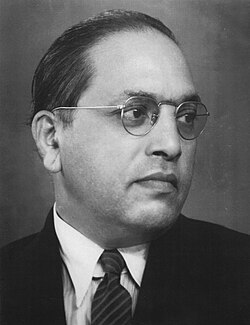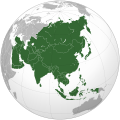ﻝ۷؟ﮒ۶ﮒﭘﮒﭦ۵ﮒﺍﮒﺍﮒﭦ۵ﮔﺟﻝ۳ﺝﻝﭖﮔ۶ﻝﮒﺛﺎﻠﺟ ﮒﺍﮒﭦ۵ﻝﻝ۷؟ﮒ۶ﮒﭘﮒﭦ۵ﮔﺁﻛﺝﮔﻝ۷؟ﮒ۶ﻠﺎﻟ۰ﻝ۳ﺝﮔﮒﮒﺎ۳ﻝﮒ ﺕﮒﻝﺁﻛﺝﺅﺙﮒ۷ﮔﺍﮔﻟ۹ﻝ ﻝ۸ﭘﻛﺕﮒ ﺓﮔﻛﭨ۲ﻟ۰۷ﮔ۶ﮔﻝﺝ۸ﻙﮒ ﭘﻟﭖﺓﮔﭦﮒﺁﻟﺟﺛﮔﭦﺁﻟﺏﮒ۳ﻛﭨ۲ﮒﺍﮒﭦ۵ﺅﺙﻛﺕ۵ﮒ۷ﻠ۷ﮒﺝﻝﮔﺓﮒﺎﻠﺎﻝ۷ﻛﺕﺅﺙﮒﮒﺍﻛﺕﻛﺕﻝﺑﻙﻟﺟﻛﭨ۲ﮔ۸ﮔﮒﻝﺝﻛﭨ۲ﮒﺍﮒﭦ۵ﺅﺙﻝﺗﮒ۴ﮔﺁﻟﮒ ﮒ ﮒﺕﮒﻟ۰ﺍﻟﺛﻛﭨ۴ﮒﻟﺎﮒﺎ؛ﮒﺍﮒﭦ۵ﻝ۱ﭦﻝ،ﻛﺗﮒﺝﻝﮒﮒﻝﭖﺎﮔﺎﭨﻝﺎﺝﻟﺎﻠﮒﺎ۳ﻝﮒ۰ﻠ ﻟﮔﺗﻠ ﻙ[1][2][3][4] ﮒﺍﮒﭦ۵ﻝﻝ۷؟ﮒ۶ﮒﭘﮒﭦ۵ﻟﭖﺓﮔﭦﮔﺙﮒ۳ﻛﭨ۲ﺅﺙﮔﮒﻛﭨ۴ﻝ۵ﻝﺝﻠ۲ﻝﭦﮔ ﺕﮒﺟﻠﺎﻟ۰ﻠﮒﺎ۳ﮒﮒﻙﮒ۸ﻝﺝ ﻠﺅﺙﻝ۴ﮒﺕﺅﺙﮒﮒ۷ﻛﺕﮒ؟ﻝ۷ﮒﭦ۵ﻛﺕﮒﺎ ﮔﺙﮔ؛۰ﻟ۵ﮒﺍﻛﺛﻝﮒﮒﺕﮒ۸ﺅﺙﻝﭖﺎﮔﺎﭨﻟ ﻟﮔ۵ﮒ۲،ﺅﺙﮔ۶ﮔﻝ۳ﺝﮔﻝﻝﺎﺝﻟﺎﻠﮒﺎ۳ﺅﺙﮒ ﭘﮒﺝﻛﺝﮒﭦﮔﺁﮒ ﻟﺅﺙﮒﻛﭦﭦﻙﮒﻟﺏﮒﻟﺝﺎﮔﺍﺅﺙﺅﺙﻛﭨ۴ﮒﮒﺍﻛﺛﮔﻛﺛﻝﻠ۵ﻠﻝﺝ ﺅﺙﮒﮒﻟ ﺅﺙﻙﻝﭘﻟﺅﺙﮒ۷ﻠﮒﮒﺏﻝﭖﺎﻝﻝ۵ﻝﺝﻠ۲ﻠ،ﻝﺏﭨﻛﺗﮒ۳ﺅﺙﻠﮒﮒ۷ﻟﻠﮒﮒ۲ﻟﺟ،ﻙﻠﻝﺓ۲ﮒﮒﻟﺟ،ﮒ؟ﺏﻝﻠﮒ۸ﻝﺗﺅﺙﻛﭦ۵ﻟ۱،ﻝ۷ﺎﻝﭦﻛﺕﮒﺁﮔ۴ﻟ۶ﺕﻟ ﺅﺙﮔﻝ۷ﺎﻟﺏ۳ﮔﺍﺅﺙﻛﭨ۴ﮒﻠﺟﻟﺟ۹ﻝ۵ﻟ۴ﺟﺅﺙﻠ۷ﻟﺛﮒﺎ ﮔﺍﺅﺙﻙ[5][6]ﻠ۷ﻟﮔﺓﮒﺎﮔﺙﻠﺎﺅﺙﻝ۷؟ﮒ۶ﮒﭘﮒﭦ۵ﮔ۴ﻟﭘ۷ﮒﭖﮒﺅﺙﻟﻟﺟ۵ﮔﻝﮒﭦﻝﺝﮔﺑﻠﺎﻛﺕﮔ۴ﮒ ﮒﻠﻝ۷؟ﮒﭦﮒﻝﺝﻟﺎ۰ﺅﺙﮒ؛ﻝﮒﭦﻝﭘﮒﺍﮔﮒﻛﺕﻟ؛ﮒﮔﺍﻝﻝ۷؟ﮒ۶ﮒﻛﭦﻝ۷؟ﮒ۶ﻙ[7]ﻠ۷ﻟﻛﺙﮔﺁﻟﮔﮒ۷ﮒﺍﮒﭦ۵ﮔ؛۰ﮒ۳۶ﻠﺕﮔﺑﮒﺙﭖﺅﺙﮒﻟ۵ﮒﺍﮒﭦ۵ﮔ؛۰ﮒ۳۶ﻠﺕﻝ۸ﮔﺁﮔﮔﮔﺅﺙﺅﺙﻝ۷؟ﮒ۶ﻝﮒﮒ۴ﻛﺗﮒ۷ﻝ۸ﮔﺁﮔﻝ۳ﺝﻝﺝ۳ﮒ ۶ﻠ۷ﻠﮔﺙﺕﮒﺛ۱ﮔﻙ[1][8][9]ﻟﮒ۷ﻟﺎﮒﮔ؟ﮔﺍﻝﭖﺎﮔﺎﭨﮔﮔﺅﺙﻟﺎﮒﮔﺟﮒﭦﻠﻠﻛﭦﭦﮒ۲ﮔ؟ﮔ۴ﻝﮒﻠ۰ﮔﺗﮒﺙﺅﺙﻛﺕ۵ﻝﭖ۵ﻛﭦﮒﭦﻝ۲ﮒﺝﮒﻝﺗﮒ؟ﻝ۷؟ﮒ۶ﻝﺝ۳ﻠ،ﮒ۹ﮒﺝ ﺅﺙﻠﺎﻛﺕﮔ۴ﮒﺍﻝ۷؟ﮒ۶ﮒﭘﮒﭦ۵ﻠﮒﭦﻙ[8]ﻝﭘﻟﻝﭘﮒﺍﮔﺙ1920ﮒﺗﺑﻛﭨ۲ﻝﺙﻝﻝﻝ۳ﺝﮔﮒﻝ۹ﺅﺙﻛﺟﻛﺛﺟﮔﺟﮒﭦﮔ۰ﻟ۰ﮔﺟﻝﻟﺛﮒﺅﺙﮔ۷ﮒﮒﺗﺏﮔ؛ﻟ۰ﮒﻙ[10][11][12]ﮔﻟﺏﻛﭨﮔ۴ﺅﺙﮒﺍﮒﭦ۵ﮒ۱ﮒ ۶ﻝﺑﮔ3,000ﮒﻛﺕﭨﻟ۵ﻝ۷؟ﮒ۶ﺅﺙﮒ ﭘﻛﺕﮒﻝﺑﺍﮒﻝﭦﮒ۳۶ﻝﺑ25,000ﮒﻛﭦﻝ۷؟ﮒ۶ﻙ[13] ﻝ۷؟ﮒ۶ﮒﭘﮒﭦ۵ﻠ ﮔﻝﮒﺓ؟ﻝﺍﻛﺕﮒ ﻠﮔﺙﮒﺍﮒﭦ۵ﮔﻝ۳ﺝﻝﺝ۳ﺅﺙﮒ۷ﮒﺍﮒﭦ۵ﮔ؛۰ﮒ۳۶ﻠﺕﻝﮒ ﭘﻛﭨﮒﺍﮒﮒﮒ؟ﮔﻛﺕﻛﺗﮔﺝﮒﮒ۷ﺅﺙﻛﺝﮒ۵ﮒ۷ﮒﺍﺙﮔﺏﻝﺝﻝﻛﺛﮔﻙ[14]ﮒﭦﻝ۲ﮔﻙﻛﺙﮔﺁﻟﮔﻙﻝﭘﮒ۳۹ﮔﮒﻠ،ﮒ ﮔﻝﻙ[15]ﻟ۷ﺎﮒ۳ﮔﺗﻠ۸ﮔﺑﺝﻝﮒﺍﮒﭦ۵ﮔﻠﮒﻙ[16]ﻛﺛﮔﻙﻠ،ﮒ ﮔﻙﮒﭦﻝ۲ﮔ[15]ﻛﭨ۴ﮒﻝﭘﻛﭨ۲ﻝﮔﺍﻛﺛﮔﻠﮒ[17]ﻠﺛﮔﺝﮒﺍﻠﻝ۷؟ﮒﭘﮒﭦ۵ﮔﮒﭦﻟﺏ۹ﻝﻛﺕ۵ﻟﺑﮒﮔﺙﮔﺗﻠ۸ﻙﮔ۳ﮒ۳ﺅﺙﮒﺍﮒﺍﺙﻝﮒﺏﮒﮒﺏﭘﮒ ﮒﮒﺍﮒﺍﮒﭦ۵ﮔﮒﻝﮒﺛﺎﻠﺟﺅﺙﻛﺗﮔﻝ۷؟ﮒ۶ﮒﭘﮒﭦ۵ﮒﮒ۷ﻙ[18] ﮒﺍﮒﭦ۵ﻟ۹1947ﮒﺗﺑﻝ۷ﻝ،ﮒﺝﻛﺝﺟﮒ۷ﮔﺎﮔﺏﻛﺕﮔﮔﻝ۵ﮔ۱ﮒﭦﮔﺙﻝ۷؟ﮒ۶ﻝﮔ۶ﻟ۵ﺅﺙﻛﺕ۵ﮔ۷ﻟ۰ﮒ۳ﻠ ﮒﺗﺏﮔ؛ﮔﺟﻝﺅﺙﻛﭨ۴ﮔﮒﮔﺓﮒﺎﻛﺕﻠﺓﮔﻠﮒﻠﻝﺓ۲ﮒﻝﻝﺝ۳ﻠ،ﻙ[19]ﻝﭘﻟﺅﺙﻠﻝﭘﮔﻠﻛﭦﮔﺏﮒﺝﮒﮔﺟﻝﺅﺙﻝ۷؟ﮒ۶ﮒﭘﮒﭦ۵ﮒ۷ﮒﺍﮒﭦ۵ﻝ۳ﺝﮔﻛﺕﻛﺝﻝﭘﮔ ﺗﮔﺓﺎﻟﮒﭦﺅﺙﮒﭦﮔﺙﻝ۷؟ﮒ۶ﻝﮔ۶ﻟ۵ﻙﻠﻠ۱ﻙﮔﺑﮒﻛﭨ۴ﮒﻛﺕﮒﺗﺏﻝﻝﺝﻟﺎ۰ﻟﺏﻛﭨﻛﭨﮔﻝﭦﮒﮒ۷ﻙ[20] ﮒ؟ﻝﺝ۸ﻟﮔ۵ﮒﺟﭖ
ﻝ۵ﻝﺝﻠ۲ﻙﻟﺟ۵ﮔﻟﻝ۷؟ﮒ۶ﻝ۵ﻝﺝﻠ۲"ﻝ۵ﻝﺝﻠ۲"ﮔﮔﻠ۰ﮒﻙﻝ۶۸ﮒﭦﻙﻠ۰ﻟﺎﮔﻠﻝﺑﺅﺙ[21][5]ﮒ؟ﮔﺁﻛﺕﻝ۷؟ﮒﺍﻛﭦﭦﻝﺝ۳ﮒﮒﻝﭦﻛﺕﮒﻝ۳ﺝﮔﻠﮒﺎ۳ﻝﻠ،ﻝﺏﭨﺅﺙﮔﮔ۸ﻟﭖﺓﮔﭦﮔﺙﮒ ﻠﮔﮔﻝﮒﺍﮒﭦ۵ﻝ۳ﺝﮔﺅﺙﻛﺕ۵ﮒ۷ﮒ۳ﻛﭨ۲ﮒﺍﮒﭦ۵ﮔﻝﭨﻛﺕﻟ۱،ﻠ ﭨﻝﺗﮔﮒﻙ[7]ﻠﮒﻠ،ﻝﺏﭨﮒ ﮒ،ﮒﮒﻛﺕﭨﻟ۵ﻝﻠﮒﺎ۳ﺅﺙﮒ۸ﻝﺝ ﻠﺅﺙﮒﺕﻝ۴ﻠﻝﺑﺅﺙﻙﮒﮒﺕﮒ۸ﺅﺙﻝﭖﺎﮔﺎﭨﻟ ﻙﻝ؟۰ﻝﻟ ﻟﮔ۵ﮒ۲،ﺅﺙﻛﭦ۵ﻝ۷ﺎﻝﭦﻝﺝ ﻠﮒﺍﺙﻛﭦﺅﺙRajanyasﺅﺙﺅﺙﻙﮒ ﻟﺅﺙﮒﺓ۴ﮒ ﻙﮒﻛﭦﭦﻙﻟﺎﺟﮔﮒﻟﻟﺝﺎﮔﺍﺅﺙﻛﭨ۴ﮒﻠ۵ﻠﻝﺝ ﺅﺙﮒﮒﻠﻝﺑﺅﺙﻙ[22]ﻛﺛﻠ ﮔﺏ۷ﮔﺅﺙﻝ۵ﻝﺝﻠ۲ﻝﮒﻠ۰ﻛﺗﻠﺎﮒ،ﻝ؛؛ﻛﭦﮒﻝﺁﻝﺅﺙﮔﻝﮔﺁﻠ۲ﻛﭦﻟ۱،ﻟ۹ﻝﭦﮒ؟ﮒ ۷ﻟﮔﺙﻠﮒﻠ،ﻝﺏﭨﻛﺗﮒ۳ﻝﻝﺝ۳ﻠ،ﺅﺙﻛﺝﮒ۵ﻠ۷ﻟﺛﮔﺍﮔﮒﻠﮒ۸ﻝﺗﺅﺙﻛﭦ۵ﻟ۱،ﻝ۷ﺎﻝﭦ"ﻛﺕﮒﺁﮔ۴ﻟ۶ﺕﻟ "ﺅﺙﻙ[6] ﻟﺟ۵ﮔﻟﺟ۵ﮔﮒ۷ﮒ۳ﻛﭨ۲ﮔﻝﭨﻛﺕﮔﻝﮔﺁ"ﮒﭦﻝ"ﺅﺙ[23]ﻟ۱،ﮔﮒﻝﻠ ﭨﻝﻟﺙﻛﺛﺅﺙﻛﺕﻟﻝ۵ﻝﺝﻠ۲ﮔﮔﻝ۱ﭦﻝﮒﮒ۴ﻙﻝ۵ﻝﺝﻠ۲ﮒ ﺎﮔﮒﮒﺅﺙﻛﺛﻟﺟ۵ﮔﮒﭨﮔﮔﮒﻛﺕﻟ؛ﮒﻙ[7]ﻟﺟ۵ﮔﮔﺁﻟ۳ﻠﻝﻝ۳ﺝﮔﻝﺝ۳ﻠ،ﺅﺙﻝﺙﭦﻛﺗﮔ؟ﻠﻠ۸ﻝ۷ﻝﮒ؟ﻝﺝ۸ﮔﻝﺗﮒﺝﭖﺅﺙﻟﻛﺕﻟﻠﮒﭨﮒﺕﺕﻟ۱،ﻟ۹ﻝﭦﻝﻛﺕﮒﺅﺙﮔﺑﮒ ﺓﮒﺛﮔ۶ﮒﮒ۳ﮔ۷۲ﮔ۶ﻙ[6] ﮔﻛﭦﻝ ﻝ۸ﭘﻝ۷؟ﮒ۶ﮒﭘﮒﭦ۵ﻝﮒﺕﻟ ﻟ۹ﻝﭦﻟﺟ۵ﮔﻝﮒﭦﻝ۳ﮒ۷ﮔﺙﮒ؟ﮔﺅﺙﻛﭨﮒﮒﮒ؟ﮒﺍﮒﭦ۵ﻝﮔﺑﭨﻛﺕﻝ۴ﻟﻝﮒ ﻝﺑ ﻛﺗﮒﺍﻛﺕﻛﺟﮔﺗﻠ۱ﮔﭘﭖﻟﮒ۷ﮒ ۶ﺅﺙﻛﺝﮒ۵ﮔﺏﮒﻛﭦﭦﻠ۰ﮒﺕﮒ؟ﭘﻟﺓﺁﮔﺡﺓﮔﻟﮒﺍﻟﺟ۵ﮔﮒﭘﮒﭦ۵ﮒ ۶ﮒﮒ۷ﻝﮒﮒﺙﻝﻝﺑﮔﻟﺟﺍﻝﭦﮒﭦﮔﺙﮒ؟ﮔﻝﻝﺑﮔﺛﻟﮔﺎ۰ﮔﮔ۵ﮒﺟﭖﻙﻝﭘﻟﺅﺙﮒ ﭘﻛﭨﮒﺕﻟ ﮒﺍﮔ۳ﻟ۶ﻠﭨﮔﮒﭦﻝﺍﻟﺍﺅﺙﻟ۹ﻝﭦﻟﺟ۵ﮔﮔﺁﻛﺕﻝ۷؟ﻛﺕﻛﺟﻝﻝ۳ﺝﮔﻝﺝﻟﺎ۰ﺅﺙﮒ ﭘﻠ۸ ﮒﮒﻛﺝﻟ۹ﮔﺙﻝﭘﮔﺟﻙﮔﺟﮔﺎﭨﺅﺙﮔﮔﻛﺗﮒﮒﺍﮒﺍﻝﻝﺍﮒ۱ﻝﮒﺛﺎﻠﺟﻙ[23][24][25][26]ﮔ ﺗﮔﻝ۴ﮒﮔﺎﮔﺗﮒ؟ﮔﮒ۴ﺏﮔ۶ﮒﺕﻟ ﻝﮒ۵؟ﮒ؟ﺡﺓﻝ۵ﮒﺅﺙJeaneane Fowlerﺅﺙﮔﮒﭦﺅﺙﻠﻝﭘﮔﻛﭦﻛﭦﭦﻟ۹ﻝﭦﻟﺟ۵ﮔﮔﺁﻟﺓﮔ۴ﻠﻠ۱ﺅﺙﻛﺛﻛﭦﮒﺁ۵ﻛﺕﻟﺟ۵ﮔﻝﮔ۰ﮔﭘﻛﺕ۵ﻛﺕﮔﻠ۳ﮔﻠﭨﮔ۱ﻛﺕﮒﻝ۷؟ﮒ۶ﻝﮔﮒ۰ﮒﺝﻛﭦﮒ ﭘﻛﭨﻟﺓﮔ۴ﻙ[23] ﻟﺟ۵ﮔﻝﻛﺕﮒﻠ۰ﺁﻟﻝﺗﮒﺝﭖﮔﺁﮒ ۶ﮒ۸ﮒﭘﻙﮒ۵ﮒ۴ﺏﮔ۶ﮒﺕﻟ ﻟﻝﺡﺓﻟﺎﮒ۸ﮔﻟ۷ﺅﺙ"ﻝ۰ﻟ،ﮒ۷ﻠﮒﭨﻠﮔﺁﮒﺍﻟ۷ﺎﮒ۳ﺅﺙﻛﺛﻠﮔﮔﺅﺙﻝﺝﻛﭨ۲ﮒﺍﮒﭦ۵ﻛﭦﭦﻟﻟ۷ﺅﺙﮒﭦﻝﮔﺙﻝﺗﮒ؟ﻟﺟ۵ﮔﻝﻛﭦﭦﻠﮒﺕﺕﮔﮔﮒ۷ﻟ۹ﮒﺓﺎﻝﻟﺟ۵ﮔﮒ ۶ﮒﺍﮔﺝﮒ۸ﮒ۶ﭨﮒﺍﻟﺎ۰ﻙ"[27][28] ﻛﺕﻠ ﮒ۷2016ﮒﺗﺑﮔﮒﺅﺙﮒﭦﮔﺙﮒﺍﻝ۰ﻟ۵۹ﻝﺓ۲ﻠﻛﺟﮒﺍﮒﭦ۵ﻛﭦﭦﻛﺕﮒﭦﮒ ﮔ۹۱ﮔﺕ؛ﻝﻝ ﻝ۸ﭘﻝ۱ﭦﮒ؟ﺅﺙﮒﺁ۵ﻟ۰ﮒ ۶ﮒ۸ﮒﭘﻝﻟﺟ۵ﮔﻟﭖﺓﮔﭦﮔﺙﻝ؛ﮒ۳ﻝﮔﮔﮔﻙ[29][30] ﻟﺟ۵ﮔﮒ۷ﮒﺍﮒﭦ۵ﻝﮒﺍﮒﭦ۵ﮔﮒﺝﻙﻝ۸ﮔﺁﮔﻙﮒﭦﻝ۲ﮒﺝﮒﻠ۷ﻟﺛﻛﭦﭦﮔﺍﻛﺕﻠﺛﮒﮒ۷ﺅﺙﻛﺕﮒ؟ﮒﻛﺗﻠﮔﺎﮔﮔﻝ۱ﭦﻝﻝﺓﮔ۶ﻝﻝﺑﻠ ﮒﭦﻙ[31] ﻝ۷؟ﮒ۶"ﻝ۷؟ﮒ۶"ﻠﮒﮒﻟ۸ﮔﭦﻟ۹ﻟ۰ﻟﻝﻟ۹ "casta"ﺅﺙﮔﮔ"ﻛﭦﭦﻝ۷؟ﻙﻟ۰ﻝﭖﺎﻙﮒﻝ۷؟"ﺅﺙﮔﮒﻝﮔﮔﮔﺁ"ﻝﺑﻝﺎﺗﮔﮔ۹ﮔﺓﺓﻠﻝﺅﺙﻟ۰ﻝﭖﺎﮔﮒﻝ۷؟ﺅﺙ"ﻙ[32]ﻠﮒﮔﺍﻟ۸ﮒﮔ؛ﻛﺕ۵ﻠﮒﺍﮒﭦ۵ﻟ۹ﻟ۸ﮒﺛﺅﺙﻛﺛﻝﺝﮒ۷ﮒﺓﺎﮒﭨ۲ﮔﺏﮔﻝ۷ﮔﺙﻟﺎﻟ۹ﮒﮒﺍﮒﭦ۵ﮒﻟ۹ﻟ۷ﻛﺕﺅﺙﻛﺕ۵ﮒﺕﺕﻟ۱،ﻟ۵ﻝﭦﻝ۵ﻝﺝﻠ۲ﮒﻟﺟ۵ﮔﻝﻟﺟﻛﺙﺙﻝﺟﭨﻟﺁﻙ[33] ﻟﻝﻛﺙﮔﺙ1932ﮒﺗﺑﻝﮔﻟﺟﺍﮒﺍﮒﭦ۵ﻝ۳ﺝﮔﮒﺕﮒ؟ﭘG. S. ﻟﻝﻛﺙﮒ۷1932ﮒﺗﺑﮒﺁ،ﻠﺅﺙﻠﻝﭘﻛﺗﮒﮒﺓﺎﮔﻟ۷ﺎﮒ۳ﻛﭦﭦﻠﺎﻟ۰ﻠﮒ۳۶ﻠﻝ ﻝ۸ﭘﺅﺙﺅﺙ
ﻟﻝﻛﺙﮔﮒﭦﻛﭨﻟ۹ﻝﭦﻠ۸ﻝ۷ﮔﺙﮒ ۷ﮒﺍﮒﭦ۵ﻝﮒ؟ﻝﺝ۸ﺅﺙﻛﭨﻛﺗﮔﺟﻟ۹ﮒ۷ﻝﺕﺛﻠ،ﻛﺕﻝ۱ﭦﮔﮒﮒﮔ۶ﻝﮒﺓ؟ﻝﺍﺅﺙﻙﻛﭨﮔﮒﭦﻝﻝ۷؟ﮒ۶ﮔ۷۰ﮒﺙﮒ؟ﻝﺝ۸ﮒ ﮒ،ﻛﭨ۴ﻛﺕ6ﮒﻝﺗﮒﺝﭖﺅﺙ[35]
ﻟﻝﻛﺙﮒ۷ﮔﮒﭦﻛﺕﻟﺟﺍﻝﻝ۷؟ﮒ۶ﮔ۷۰ﮒﺙﮒﺝﮒﺙﻝﺙﮒﺕﻟ۰ﻝﻝﮔﺗﻟ۸ﺅﺙ[45][46]ﮒﮒ ﮒ۷ﮔﺙﮒ؟ﻛﺝﻟﺏﺑﮔ؟ﮔﺍﮔﺟﮒﭦﻝﺓ۷ﻝﭦﻝﻛﭦﭦﮒ۲ﮔ؟ﮔ۴ﮒ ﺎﮒﻙ[34][47]ﻟﺎﮒﮔﺍﮔﻟ۹ﮒﺕﻟ H. H. ﻠﮔﺁﮒ۸ﻝ"ﮒ۹ﻝﻙﮒ۲ﻝ"ﻝ۷؟ﮔﻛﺕﭨﻝﺝ۸ﻝﻟ،ﺅﺙ[48] ﻛﭨ۴ﮒﻝﭦﻛﺛﺟﮒ ﭘﮒ؟ﻝﺝ۸ﻝ؛۵ﮒﻝﭘﮔﻝﻟ۰ﻝﮔﺎﮔﺗﻛﺕﭨﻝﺝ۸ﻝ۷؟ﮒ۶ﻟ۶ﻠﭨﻙ[49][50][51] ﻟﻝﻛﺙﮒﮒ۷1932ﮒﺗﺑﻟ۲ﮒ ﻠﺅﺙﮔ؟ﮔﺍﮔﺟﮒﭦﮒﺍﻝ۷؟ﮒ۶ﻝﮒﭨﭦﮔ۶ﺅﺙﻛﺟﻛﺛﺟﮒﺍﮒﭦ۵ﮒﮒ ۶ﻝﻝ۷؟ﮒ۶ﻝﺝ۳ﻠ،ﮔﺑﮒ ﮔﺑﭨﻟﭦﻙﮒﻟ۲ﺅﺙﻛﺕ۵ﻝﭦﻝﮒﻝﭘﮔﺟﮔ۸ﮔﻟﻠﻟ۹۹ﻟﺎﮒﮒ؟ﮒ۰ﻛﭨ۴ﻝﺎﮒﺝﮔﮒ۸ﻝﻝ۷؟ﮒ۶ﮒﻠ۰ﺅﺙﻠﻝﭦﻝ۷؟ﮒ۶ﻝﮔ۵ﮒﺟﭖﮒ۱ﮔﺓﭨﮔﺍﻝﻟ۳ﻠﮔ۶ﻙ[52][53]ﻝ ﻝ۸ﭘﻛﭦﭦﮒ۰ﻟﮔﻝﺛﺡﺓﮔ۴ﮔ؟ﮔﺙﺅﺙGraham Chapmanﺅﺙﻝﻛﭦﭦﻛﺗﮒﺍﻠﻝ۷؟ﻟ۳ﻠﮔ۶ﻠﻝﺏﺅﺙﻛﺕ۵ﮔﮒﭦﻝﻟ،ﮒﭨﭦﮔ۶ﻟﮒﺁ۵ﻠﮔ ﮔﺏﻛﺗﻠﮒﮒ۷ﮒﺓ؟ﻝﺍﻙ[54] ﻝﺝﻛﭨ۲ﮒﺍﮒ؟ﻝﺝ۸ﻝﻟ۶ﻠﭨﻝ ﻝ۸ﭘﮒﺍﮒﭦ۵ﮒﺕﻝﻝﺝﮒﮒﺕﻟ ﻝﺝ ﻝﺑﮒﺝﺓﺡﺓﮒﺍﻝﭨﻛﺗﻟ۹ﻝﭦﮒﺍﮔﺙ"ﻝ۷؟ﮒ۶"ﻠﮒﮒﻟ۸ﺅﺙﻛﺙﺙﻛﺗﻛﺕﻝﺑﮔﺎﻛﺕﮒﮔ؟ﻠﮔ۴ﮒﻝﮒ؟ﻝﺝ۸ﻙﻛﺝﮒ۵ﻛﺕﻛﭦﮔ۸ﮔﻝﮔﮔﺑﺎﮒﺕﻟ ﻟ۹ﻝﭦﮒ؟ﮒﺍﮔﮔﺙﮒ۳ﻛﭨ۲ﮒﺍﮒﭦ۵ﮔﻝﭨﻛﺕﮔﮒﻝﮒﺁ۵ﻟ۰ﮒ ۶ﮒ۸ﮒﭘﻝﻝ۵ﻝﺝﻠ۲ﺅﺙﮒ ﭘﮔﻝﺝ۸ﻟﮔﮔﺑﺎﻝﻝﻝﺑﮒﭘﮒﭦ۵ﻝﺕﻛﺙﺙﻙﻟﮒﺍﻟﺎﮒﺎ؛ﮒﺍﮒﭦ۵ﮒﺝﮔﻝﮔﮔﺑﺎﻛﭦﭦﻛﺝﻟ۹۹ﺅﺙﻛﭨ۲ﻟ۰۷ﻝ۷؟ﮒ۶ﻝﮔﺁﮒﺁ۵ﻟ۰ﮒ ۶ﮒ۸ﮒﭘﻝﻟﺟ۵ﮔﺅﺙﻟﻠﻝ۵ﻝﺝﻠ۲ﻙﻛﺝﮒ۵ﮔ؟ﮔﺍﻝ؟۰ﻝﻟ ﮒ۷20ﻛﺕﻝﺑﮒﮒﺍﺎﮔﺝﮔ ﺗﮔﻟﺓﮔ۴ﻟﮒﺍ2,378ﮒﻟﺟ۵ﮔﻠﺎﻟ۰ﻠﮒﻠ۰ﻙ[55] ﮒﺍﮒﭦ۵ﮒ؟ﮔﮔﺁﻟﺙﮒﺕﮔﮔﻠﺟﮔﭦ،ﮒﺝﺓﺡﺓﮒ۳ﻝﺝﻠ۵؛ﮔﮒﭦﺅﺙ"ﻝ۷؟ﮒ۶"ﻠﮒﮒﻝﺙﮔﺝﻟ۱،ﻟ۵ﻝﭦﻝ۵ﻝﺝﻠ۲ﮒﻟﺟ۵ﮔﻝﮒﻝﺝ۸ﻟ۸ﺅﺙﻛﺛ"ﮒﺑﻟ؛ﺗﻝﮒﺍﮒﭦ۵ﮒﺕﮒ؟ﭘﻝﺝﮒ۷ﮒ۷ﻠﮔﺗﻠ۱ﻠﺛﻠﮒﺕﺕﻟ؛ﺗﮔ "ﺅﺙﮒ ﻝﭦﻠﻝﭘﮒ ۸ﻟ ﻝﺕﻠﺅﺙﻛﺛﮒ ﭘﮔ۵ﮒﺟﭖﻟ۱،ﻟ۹ﻝﭦﻛﺕ۵ﻛﺕﻝﺕﮒﻙ[56]ﮒ۷ﻠﻛﺕﻠﭨﻛﺕﺅﺙﻠﺟﮔﭦ،ﮒﺝﺓﺡﺓﮒ۳ﻝﺝﻠ۵؛ﻟﻟﺎﮒﮒﺍﮒﭦ۵ﮒﺕﮒ؟ﭘﻛﭦﻝﺡﺓﮒﺓﺑﮔﺎﮒ۶ﻝﻟ۶ﻠﭨﻛﺕﻟﺑﺅﺙﮒﺓﺑﮔﺎﮒ۶ﮔﺝﮔﮒﭦﺅﺙﮒ۷ﮒﺍﮒﭦ۵ﻝﻟ۰ﻟﻝﮔ؟ﮔﺍﻟ ﻛﺛﺟﻝ۷"casta"ﻛﺝﮔﻟﺟﺍ
ﮒﺍﮒﭦ۵ﻝ۳ﺝﮔﮒﺕﮒ؟ﭘﮒ؟ﮒﺝﺓﻝﺡﺓﻟﺎﮔﺏﺍﻟﭘﮔﮒﭦﺅﺙﻠﻝﭘﻝ۵ﻝﺝﻠ۲ﮒ۷ﮒ۳ﮒ ﺕﮒﺍﮒﭦ۵ﮔﮒﺕﻛﺕﻛﺕﭨﻟ۵ﮔ؟ﮔﺙﻟﻝ۷؟ﮒ۶ﻝﻟ۶ﻟﺎﺅﺙﻛﺛﮒ۷ﻝﭘﻛﭨ۲ﺅﺙﮔ؟ﮔﺙﻠﮒﻟ۶ﻟﺎﻝﮔﺁﻟﺟ۵ﮔﻙﻝ۵ﻝﺝﻠ۲ﻛﭨ۲ﻟ۰۷ﻟﻛﺕﮒﮒﺍﻠﻝﻝ۳ﺝﮔﻝﻝﺑﻠﮒﺅﺙﻟﻟﺟ۵ﮔﮒﮒ؟ﮒ ۷ﮔﺁﻠﮔﺝﮒﺙﻝﺅﺙﻟ۱،ﻟ۹ﻝﭦﮔﺁ"ﮔﮒ۰ﮒ ﺎﻛﭦ،ﮒ ﺎﮒﮔ؛ﻟﺏ۹ﻝﻟ۹ﻝﭘﻝ۷؟ﻠ۰"ﻙﮔ ﺗﮔﻠﮔﺎﺅﺙﮒﺁﮒ۱ﮒ ﻛﭨﭨﻛﺛﮔﺕﻠﻝﮔﺍﻟﺟ۵ﮔﺅﺙﻛﺝﮒ۵ﻠ۷ﻟﺛﻙﮒ؟ﮔﺑﺝﻙﮔﮔﺑﺝﻙﮒ؟ﮔﮔﻟ۹ﻟ۷ﻛﺕﻝﮒﺍﮔﺕﻝﺝ۳ﻠ،ﻛﭨ۴ﮒﮔﺍﮔﻙﮒ ﮔ۳ﺅﺙ"ﻝ۷؟ﮒ۶"ﮒ۷ﻟﺎﻟ۹ﻛﺕﻛﺕ۵ﻛﺕﻟﺛﮔﭦﻝ۱ﭦﮒﺍﻛﭨ۲ﻟ۰۷ﻟﺟ۵ﮔﻙﮔﺑﮔﺍﻝﭘﻝﻟ۸ﮒﺛﮔﺁ"ﮔﻟ۲"ﻙ"ﮔﻟ۲ﻟ۹ﮒ"ﮒ"ﮔﻟ۲ﻝﺝ۳ﻠ،"ﻙ[57] ﻟ۳ﻠﮔ۶ﻟﮒﺛﮔ۶ﮒ۷20ﻛﺕﻝﺑﮒﺝﮔﻠﮒﺍﮒﺍﮒﭦ۵ﮔ؛۰ﮒ۳۶ﻠﺕﮒﮒﺍﻝ۷؟ﮒ۶ﮒﭘﮒﭦ۵ﻝﻝ ﻝ۸ﭘﻠ۰ﺁﻝ۳ﭦﺅﺙﻝ۷؟ﮒ۶ﻠ ﮔﺁﮒ ﮒﻟ۹ﻝﭦﻝﮔﺑﻝﭦﻟ۳ﻠﮒﮔﺑﮒ ﺓﻟ؟ﮒﮔ۶ﻙﻠﻝﭘﻟﺎﮒﮔ؟ﮔﺍﻝﭘﮒﺎﮔﺝﮒﺍﮒ ﭘﮔﻝﺗ۹ﮔﮒﺍﮒﭦ۵ﻝ۳ﺝﮔﻛﺕﻛﺕﮒﻝﭖﺎﻛﺕﻛﺕﮒﭖﮒﻝﮒﭦﮔ؛ﻠ،ﻝﺏﭨﺅﺙﻛﺛﻝ ﻝ۸ﭘﻟ۰۷ﮔﺅﺙﻝ۷؟ﮒ۶ﻝﻠﻟ۵ﮔ۶ﻟﻝﭖﮔ۶ﮒ۷ﻛﺕﮒﮒﺍﮒﻛﺗﻠﮒﮒ۷ﻠ۰ﺁﻟﮒﺓ؟ﻝﺍﻙﻝ۷؟ﮒ۶ﻛﺕ۵ﻠﻛﺕﮒﮒﭦﮒ؟ﻝﻝﻝﺑﮒﭘﮒﭦ۵ﺅﺙﻟﮔﺁﻛﺛﻝﭦﻝ۳ﺝﮔﻝﭖﻝﺗﮒﻟ۹ﮒﻝﮒﺗﺝﻝ۷؟ﮒﺁﻟﺛﮒﺛ۱ﮒﺙﻛﺗﻛﺕﻟﻠﻛﺛﻙﻛﭦﭦﮒﮒﺁﮒﮔﮔﮔﮒ۳ﮒﻝ۳ﺝﻝﺝ۳ﮔﺕﮒﺎ؛ﺅﺙﻝ۷؟ﮒ۶ﮔﮔﮔﮒ۹ﮒ ﮔﺙﮒ ﭘﻛﭨﻝ۳ﺝﮔﻟﺁﻝﺗ،ﺅﺙﮔﮔﮒﮒﺎ ﮔﺙﮔ؛۰ﻟ۵ﮒﺍﻛﺛﻙﻠﻝ۷؟ﮒﺛﮔ۶ﻛﺛﺟﮒﺝﻝ۷؟ﮒ۶ﻟﺛﮒ۳ ﮔﻝﭦﮒﭖﻠ ﻝ۳ﺝﮔﮒﻟﮒﻝﻛﺕﻝ۷؟ﮔﺗﮒﺙﺅﺙﮒﮔﻛﺗﻝﭦﮒ ﭘﻛﭨﻠ۰ﮒﻝﻝ۳ﺝﻝﺝ۳ﻟﺁﻝﺗ،ﻟ؛ﮒﻝﺙﮒﺎﻝﻛﺕﻝ۸ﭦﻠﻙ[58] ﮔ۹ﮒ۷ﻝ۳ﺝﮔﮒﺕﮒ؟ﭘﮒ؟ﮒ۵؟ﺡﺓﻝ۵ﻝﺝﮒﺝﺓﻝﺝ ﮔ؟ﻟ۶ﮒﺁﮒﺍﺅﺙﻠﻝﭘﮒ۷ﻟ۷ﺎﮒ۳ﮒ۳ﮒﻛﭦﭦﻝﺙﻛﺕﺅﺙﻝ۷؟ﮒ۶ﻟ۱،ﻟ۹ﻝﭦﮔﺁﮒﺍﮒﭦ۵ﻝ۳ﺝﮔﻛﺕﻛﺕﻝ۷؟ﮒﭖﮒﻛﺕﮒﮒﺏﻝﭖﺎﮔﻝﺕﻝﻝﺝﻟﺎ۰ﺅﺙﻛﺛﮒﺁ۵ﻟﻛﭦﮒﺁ۵ﻟ۰۷ﮔﻝ۷؟ﮒ۶ﻛﺕﻝﺑﮔﺁﻛﺕﮒﮔ۴ﮒﻟ؟ﮒﻝﻝﺗﮒﺝﭖﻙﻠﮒﮒﻟ۸ﮒﺍﻛﺕﮒﻝﮒﺍﮒﭦ۵ﻛﭦﭦﻛﺝﻟ۹۹ﮔﮒﺏﻟﻛﺕﮒﻝﻛﭦﻝ۸ﻙﮒ۷ﮔﺟﮔﺎﭨﮔﺑﭨﻟﭦﻝﻝﺝﻛﭨ۲ﮒﺍﮒﭦ۵ﺅﺙﮒﭦﮔﺙﻝ۷؟ﮒ۶ﻝﮒﺗﺏﮔ؛ﻟ۰ﮒﮒ۷ﮒﺓ۴ﻛﺛﻟﺓﻛﺛﮒﮒ ۴ﮒﺕﮒﻠ۰ﻛﺕﮒﻝﭦﻝﺗﮒ؟ﻛﭦﭦﮒ۲،ﻟ۷ﮒ؟ﻠ ﻠ۰ﺅﺙﻠﮒﻟ۸ﮒﺓﺎﮔﻝﭦﻛﺕﮒﮔﮔﻛﺕﮒ ﺓﻝﻟﺍﮔ۶ﻝﻟﺍﻠ۰ﻙ[59] ﮒﺍﮒﭦ۵ﻝ۳ﺝﮔﮒﺕﮒ؟ﭘﮒ۵M. N. ﮔﺁﻠﮒﺍﺙﻝ۵ﮔﺁﮒY. B.ﻛﺕﺗﮒ۶ﮒﺅﺙYB Damleﺅﺙﻝﻛﭦﭦﮔﺝﮒﺍﺎﻝ۷؟ﮒ۶ﻝﮒﭖﮒﮔ۶ﮒﻠ۰ﻠﺎﻟ۰ﻟﺝﺁﻟ،ﺅﺙﻛﺕ۵ﻟ۹ﻝﭦﻝ۷؟ﮒ۶ﻝﻝﺑﮒﭘﮒﭦ۵ﮒﮒ۷ﻝﺕﻝﭘﮒ۳۶ﻝﮒﺛﮔ۶ﮒﮔﭖﮒﮔ۶ﻙ[60][61] ﻟﭖﺓﮔﭦ
ﻟ۶ﻠﭨﻠﮔﺙﮒ۳ﻛﭨ۲ﮒﻛﺕﻛﺕﻝﺑﮒﺍﮒﭦ۵ﻝ۷؟ﮒ۶ﮒﭘﮒﭦ۵ﻝﻟﭖﺓﮔﭦﺅﺙﻟﺏﮒﺍﮒﮒ۷ﮒ ۸ﻝ۷؟ﻟ۶ﻠﭨﺅﺙﮒﮒ۴ﮒﺑﻠﮔﺙﮔﻟﮒﺛ۱ﮔ ﮒ ﻝﺑ ﮔﻝ۳ﺝﮔﻝﭘﮔﺟﮒ ﻝﺑ ﻙ
ﻝ؛؛ﻛﺕﻝ۷؟ﮒﺕﮔﺑﺝﮒﺑﻠﮔﺙﮒ؟ﮔﻛﭦﭦﻠ۰ﮒﺕﺅﺙﻛﺕ۵ﮒﺍﮒ ﭘﻛﭨﮔﺓﮒﺎﻟﮔﻟ۵ﻝﭦﮔ؛۰ﻟ۵ﮔﻟ۰ﻝﻟ۹ﻠﻝ۷؟ﮒﺏﻝﭖﺎﻝﻝ۱ﻝ۸ﺅﺙﮒ ﻟﮒﺟﺛﻝ۴ﻛﺕﻟ۷ﻙ[68]ﻝ؛؛ﻛﭦﻝ۷؟ﮒﺕﮔﺑﺝﮒﮒﺑﻠﮔﺙﻝ۳ﺝﮔﮒﺕﻟﮔﺅﺙﻛﺕ۵ﻟ۸۵ﮒﻝﻟ۶۲ﮔﺓﮒﺎﻝﺍﮒ۱ﻙ[69]ﮒﺝﻟ ﮔﺗﻟ۸ﮒﻟ ﮔﮒﭦﻝﻝ۷؟ﮒ۶ﻟﭖﺓﮔﭦﻝﻟ،ﺅﺙﻟﺎﻝ۷ﺎﻟ۸ﺎﻝﻟ،ﻛﺛﺟﮒﺍﮒﭦ۵ﻝ۳ﺝﮔﮒ۹ﮒ۳ﺎﮔﺓﮒﺎﮔ۶ﮒﻟﻝﭖ۰ﮔ۶ﻙ[70][71] ﮒﮒﺙﻝﮔ؛ﻠ،ﻝﺏﭨﮔ ﺗﮔﻟﺎﮒﻛﺛﻟ ﮒﻛﺛﺡﺓﻝﮒ۰ﻝﺗﻝﺝﺅﺙGeoffrey Samuelﺅﺙﮒﺙﻝ۷ﻝﺝﮒﮒﺕﻟ ﮒ؛ﮔﺎﭨﺡﺓLﺡﺓﮒﻝﺗﻝﻟ۶ﻠﭨﺅﺙﮒﺍﮒﭦ۵ﮒﺝﮔﻝ۷؟ﮒ۶ﮒﭘﮒﭦ۵ﻝﮔ ﺕﮒﺟﻟ۵ﻝﺑ ﮒﺁﻟﺛﮔﭦﻟ۹ﮒ۸ﻝﺝ ﻠﮔﻙﻛﺛﮔﮒﻟﻠ۲ﮔﮒﺏﮒ ۴ﮒﺍﮒﭦ۵ﻛﺗﮒﻝﮒﮒﺙﻝﮔ؛ﻠ،ﻝﺏﭨﻙﻠﻝ۷؟ﻠ،ﻝﺏﭨﻟ۵ﮔﺙﮒﮒﺍﮒﭦ۵ﮒ۵ﻝﺎﺏﻝﺝﻟ۹ﻝﮔ۰ﻛﺙﺛﮔﮔﮔﮒﺕﺅﺙﮒ ؛ﮒ ﮒ3ﻛﺕﻝﺑﻟﺏﮒ ؛ﮒ 3ﻛﺕﻝﺑﺅﺙﻙﻠﮒﻝﻟ،ﮔﮔ۲ﮒﺍﮒﭦ۵-ﻠ ﮒ۸ﮒ؟ﻛﭦﭦﻝﻝ۵ﻝﺝﻠ۲ﮔ۷۰ﮒﺙﻛﺛﻝﭦﻝ۷؟ﮒ۶ﻝﮒﭦﻝ۳ﺅﺙﻟﮔﺁﻛﭨ۴ﮒﻝﻝﻝ۴ﮔﮔ؛ﮒﻝﭦﻛﺕﮒﺟﺅﺙﮒﻝ"ﻝﺎﻛﺕﻝﺝ۳ﻝ۳ﺝﮔﮒﺍﻛﺛﻛﺛﻛﺕﻝﮒﮒﺙﮒﻠﮔﺏﮒﺍﮒ؟ﭘﮔﺁﮔ"ﺅﺙﻛﭨﮒﻝﮒﮒﺙﮔ۶ﻟﺓﮔ۴ﻟ۱،ﻟ۹ﻝﭦﮔﺁ"ﮒﮒﺍﮔﺎ۰ﮔ"ﻙﮔ ﺗﮔﮒﻝﺗﻝﻟ۹۹ﮔﺏﺅﺙﮒﺁﻟﺛﮔ۲ﮔﺁﻠﮒﮔ۷۰ﮒﺙﻝ۱ﻝﮒﺍﻛﺛﮒﺍﻛﺛﻝﺝ۳ﻠ،ﮔﮒ۰"ﮒﮒﺍﮔﺎ۰ﮔ"ﻝﮔﮔﻙﮒ۰ﻝﺗﻝﺝﮒﺁ،ﻠﺅﺙﮒﻝﺗﻝﻝ۷؟ﮒ۶ﻟﭖﺓﮔﭦﮔ۷۰ﮒﻟ۷ﮔﺏ"ﮒ۳ﻛﭨ۲ﮒﺍﮒﭦ۵ﻝ۳ﺝﮔﻝﺎﮒ۳۶ﮒ۳ﮔﺕﮔﺎﮔﮒ ۶ﻠ۷ﻝ۷؟ﮒ۶ﮒﮒﻝﻝﺝ۳ﻠ،ﮒﮒﺍﮔﺕﻝﺎﻛﺕﻛﭦﮒﺝﻛﭦﻟ۱،ﮔﺎ۰ﮔﻟﺓﮔ۴ﻝﮒﺍﻝﺝ۳ﻠ،ﻝﭖﮔ"ﻙ[72] ﮒ ﻠﻝ۵ﻝﺝﻠ۲ﻝ۵ﻝﺝﻠ۲ﻟﭖﺓﮔﭦﮔﺙﮒ ﻠﮔﮔﻝ۳ﺝﮔﺅﺙﻝﺑﮒ ؛ﮒ ﮒ1000ﮒﺗﺑﻟﺏﮒ ؛ﮒ ﮒ500ﮒﺗﺑﺅﺙﻙﮒﻛﺕﮒﻝﺝ۳ﻠ، - ﮒ۸ﻝﺝ ﻠﻙﮒﮒﺕﮒ۸ﮒﮒ ﻟﺅﺙﻟﮒ ﭘﻛﭨﮒﺍﮔﻝ۳ﺝﮔﮒﮒ۷ﻝﺕﻛﺙﺙﻛﺗﻟﺅﺙﻟﺏﮔﺙﻠ۵ﻠﻝﺝ ﺅﺙﮒ ﭘﮒ ﮒ ۴ﻠ،ﻝﺏﭨﮒﺝﮒﺁﻟﺛﮔﺁﮒ۷ﮒﺍﮒﭦ۵ﮒﻠ۷ﻝﺎﮒ۸ﻝﺝ ﻠﮔﮔﻛﺟﮔﻙ[73] ﻝ۵ﻝﺝﻠ۲ﻠ،ﻝﺏﭨﮒ۷ﮒﮒﮒﺍﮒﺑﻝﮒﺍﮒﭦ۵ﮔﮒ؟ﮔﮔﻝﭨﻛﺕﻟ۱،ﻠ۰ﻟﺟﺍﺅﺙﻛﺕ۵ﻟ۱،ﻝﻟ۶۲ﻝﭦﻝﮔﺏﮒﻝﻛﭦﭦﻠ۰ﮒ۳۸ﻟﺓﻙ[74][75]ﮒ ﭘﻛﺕﺅﺙﻙﮔ۱۷ﻛﺟﺎﮒ ﻠﻙﻝﻛﺕﻠ۵ﻟﻟ۸۸ﻙﮒﻛﭦﭦﮔﻙﮒﮒ ﭘﮒ۷ﻙﮔ۸ﮒ۴ﺑﮔﺏﻟ،ﻙﻛﺕﻝﻟ۷ﭨﻠﮔﺁﮔﮒﺕﺕﻟ۱،ﮒﺙﻝ۷ﻝﮔﻝﭨﻙ[76]ﻠﻝﭘﮒﮒ۷ﻠﻛﭦﮔﮔ؛ﮒﻠ۰ﺅﺙﻛﺛﻟ۷ﺎﮒ۳ﻠﻟ۵ﻝﮒﺍﮒﭦ۵ﮔﮔﻝﭨﮒﮔﻝﺝ۸ﮒﺁ۵ﻠﻛﺕﮔﺁﻟﺏ۹ﻝﮒﮒﮒﺍﻠﻝ۷؟ﻝ۳ﺝﮔﮒﮒﺎ۳ﻝﻙ[6] ﮒﺕﻟ ﮒﮒﺍﻙﮔ۱۷ﻛﺟﺎﮒ ﻠﻙﻛﺕﻝﻝ۵ﻝﺝﻠ۲ﻠ ﮔﺅﺙﻙﮒﻛﭦﭦﮔﻙﺅﺙﮔﮒﭦﻟﺏ۹ﻝﺅﺙﮔﮒﭦﻝ۵ﻝﺝﻠ۲ﮒ۷ﮒ ﭘﻛﺕﮒ ﻟ۱،ﮔﮒﻛﺕﮔ؛۰ﻙﻙﮒﻛﭦﭦﮔﻙﻠﮔ؟ﭖﻝﭘﮔﻝﺝﮒ۷ﮔ؟ﻠﻟ۱،ﻟ۹ﻝﭦﮔﺁﮒﺝﻛﺝﮔﻟ۱،ﮔﮒ ۴ﻙﮔ۱۷ﻛﺟﺎﮒ ﻠﻙﻝﺅﺙﮒﺝﮒﺁﻟﺛﮔﺁﻛﺕﻝ۷؟ﮒﭖﻛﺕﻝ۴ﻟ۸ﺎﻙﮒ ۸ﻛﺛﮔ۱ﭖﮔﮒﮒ؟ﮔﻝ ﻝ۸ﭘﮔﮔﮒﺎﻟﻟ؛ﮒ۵؟ﺡﺓﮒﻝﺎﺏﮔ۲؟ﺅﺙ Stephanie Jamisonﺅﺙﮒﮒ؛ﻝﺝﺡﺓﮒﺕﻠﺓﻝﺝﻠ ﺅﺙJoel Breretonﺅﺙﮔﮒﭦﺅﺙ"ﻙﮔ۱۷ﻛﺟﺎﮒ ﻠﻙﻛﺕﮔﺎﮔﻟﮔﻠ۰ﺁﻝ۳ﭦﮒﮒ۷ﻛﺕﮒﻝﺎﺝﮒﺟﮒﮒﻙﮒﺎ۳ﮒﺎ۳ﻝﮒ ﻝﻠﺝﮒ۳۶ﻝ۷؟ﮒ۶ﮒﭘﮒﭦ۵"ﺅﺙﻛﺕ۵ﻛﺕ"ﻝ۵ﻝﺝﻠ۲ﻠ،ﻝﺏﭨﮒ۷ﻙﮔ۱۷ﻛﺟﺎﮒ ﻠﻙﻛﺕﻛﺙﺙﻛﺗﻠﻟﮔﺙﻟﻟﺛﻠﮔ؟ﭖﺅﺙﻟﻛﺕﻝ۰ﻟ،ﻝﭘﮔﻠﮔﺁﮒﺝﻛﺝﺅﺙﻠﺛﮔﺑﮒﮔﺁﻛﺕﻝ۷؟ﻝ۳ﺝﮔﻝﮔﺏﺅﺙﻟﻠﻝ۳ﺝﮔﻝﺝﮒﺁ۵"ﻙ[77]ﻟﻙﮔ۱۷ﻛﺟﺎﮒ ﻠﻙﻛﺕﻝﺙﭦﻛﺗﻠﮔﺙﻝ۵ﻝﺝﻠ۲ﻠ،ﻝﺏﭨﻝﻝﺑﺍﻝﺁﮒﺛ۱ﮔﮒﺍﮔﺁﻝﮔﺁﺅﺙﻙﮔ۸ﮒ۴ﺑﮔﺏﻟ،ﻙﮒ ﮒ،ﮔﮒﺍﻝ۵ﻝﺝﻠ۲ﻠ،ﻝﺏﭨﻝﮒﭨ۲ﮔﺏﻛﺕﮒ ﺓﮒﻠ،ﮒﭦ۵ﻝﭖﮔ۶ﮔ۶ﻝﻟ۷ﭨﻠﺅﺙﻛﺛﮒ؟ﮔﻛﺝﻝﻛﺗ"ﮔﺑﮒ۳ﮔﺁﮔ۷۰ﮒﻟﻠﮔﻟﺟﺍ"ﻙ[78]ﮒﮔ۸ﮒ۳۶ﮒﺕﮔﮔﻟﻝﺡﺓﻟﺎﮒ۸ﻝﺕﺛﻝﭖﻠﺅﺙﻙﮔ۸ﮒ۴ﺑﮔﺏﻟ،ﻙﮒﮒ ﭘﻛﭨﻝﭘﮔﮔﮒ۸ﮔﺙﮔﮒﮒ۸ﻝﺝ ﻠﮒ۷ﻝ۳ﺝﮔﻠﮒﺎ۳ﻛﺕﻝﮒﺍﻛﺛﺅﺙﻠﻛﭦﮔﺁﻝ۵ﻝﺝﻠ۲ﻠ،ﻝﺏﭨﮒﺛ۱ﮔﻝﮒ ﻝﺑ ﻛﺗﻛﺕﺅﺙﻛﺛﮒ۳ﻛﭨ۲ﮔﻝﭨﻛﺕ۵ﻠﻛﭨ۴ﮔﻝ۷؟ﮔﺗﮒﺙﮒ۷ﮒﺍﮒﭦ۵"ﮒﭖﻠ ﮒﭦﻝ۷؟ﮒ۶ﻝﺝﻟﺎ۰"ﻙ[79] ﻟﺟ۵ﮔﮒﺎﮒﺕﻟﮒ؟ﮔﻝ ﻝ۸ﭘﮔﮔﻝﮒ۵؟ﮒ؟ﺡﺓﻝ۵ﮒﮔﮒﭦﺅﺙﻟﺟ۵ﮔﻝﻟﭖﺓﮔﭦﮒﮒﺛ۱ﮔﮒﮒ ﺅﺙﻟﺏﻛﭨﻛﭨﻝ۰ﮔﺏﻝ۱ﭦﮒ؟ﻙ[80]ﻟﻟﻝﺡﺓﻟﺎﮒ۸ﮒ۵ﻛﺕﮔﺗﻠ۱ﮒﻟ۹ﻝﭦﻟﺟ۵ﮔﮒﭘﮒﭦ۵ﻛﺗﮔﻛﭨ۴ﮒﭦﻝﺝﮔﺁﮒ ﻝﭦﮒﺍﮒﭦ۵ﮒ۷ﻝ۷ﻝ،ﮒﻝﻟﺎ۶ﮒﺍﻙﻝﺙﭦﻛﺗﮒﭘﮒﭦ۵ﮔ۶ﻛﭦﭦﮔ؛ﻛﺟﻠﻙﮒﻝ۹ﻝﮔﺟﮔﺎﭨﻝﺍﮒ۱ﻛﭨ۴ﮒﻝﭘﮔﺟﻛﺕﮒ؟ﮒ ۷ﮔﻝﮔﻛﭨ۲ﺅﺙﻝﭦﮒ ﭘﮔﮒ۰ﮒﺕﭘﻛﺝﮔﻝ۷؟ﮒﺛ۱ﮒﺙﻝﻛﺟﻠﮒﮒ۹ﮒ۱ﻙ[81] ﮔ ﺗﮔﮒﺍﮒﭦ۵ﻝ۳ﺝﮔﻛﭦﭦﻠ۰ﮒﺕﮒ؟ﭘﻟﺟ۹ﮔﺛﮒ۰ﺡﺓﮒ۳ﮔ؟ﮒ۰ﻝﻟ۶ﻠﭨﺅﺙﻟ۰ﮔﮒ۷ﮒﻠﻝﮔﮔﮔﻠﮒ۶ﻝﺙﮒﺎﺅﺙﻛﺕ۵ﮒ۷ﮒﻠﻝﮔﻛﺗﮒﺝﻠ۷ﻟﮒﺍﮒﭦ۵ﮒﺍﮒﭨﭦﻛﺕﭨﻝﺝ۸ﻝﻟﻟﭖﺓﻟﮒﻟﮔﻟﺟ۵ﮔﺅﺙ[82]ﮔﻝﭖﮒ۷7ﻛﺕﻝﺑﻟﺏ12ﻛﺕﻝﺑﮔﻠﮒ؟ﮒ ۷ﮒ؟ﮒﻙ[83]ﻝﭘﻟﺅﺙﮒ ﭘﻛﭨﮒﺕﻟ ﮒﺍﻟﺟ۵ﮔﮒ۷ﮒﺍﮒﭦ۵ﮔﺓﮒﺎﻛﺕﻝﺙﮒﺎﻝﮔﻠﮒﮔﺗﮒﺙﮔﮒﭦﻝﺍﻟﺍﻙﻝﺝﮒﮒ۳،ﮒ۸۵ﮔ۹ﮔﺓﮒﺎﮒﺕﮔﮔﻟﻟﮔﺡﺓD.ﺡﺓﮔ۱ ﻝﺗﮒ۰ﮒ۳،ﮒﮔﻠ۵؛ﮔﺁﺡﺓﮔ۱ ﻝﺗﮒ۰ﮒ۳،ﮒﺁ،ﻠﺅﺙ"ﮒﭦﮔﺙﻠﮔﮒﮒ ﭘﻛﭨﮒﮔﻛﭨ۲ﻟﮔﻝﮔﺍﻟﺟﮒﺕﻟ۰ﻝ ﻝ۸ﭘﮔﮒﭦﻛﺕﮒﻛﭨ۳ﻛﭦﭦﻠ۸ﻟ۷ﻝﻟ،ﻠﭨﺅﺙﮒﺏﻝﺑﮒﺍﻝﺕﮒﺍﻟﺙﻟﺟﻝﮒﺗﺝﮒﻛﺕﻝﺑﺅﺙﮔ؛۰ﮒ۳۶ﻠﺕﮒ۳۶ﻠ۷ﮒﮒﺍﮒﻝﻝ۳ﺝﮔﻝﭖﻝﺗﮒﺗﺝﻛﺗﮔﺎﮔﮒﮒﺍﮒﮒﻝ۵ﻝﺝﻠ۲ﻝﮒﺛﺎﻠﺟﻙﻟﺟ۵ﮔﻛﺗﻛﺕ۵ﻠﮔﺁﻝ۳ﺝﮔﻝﮒﭦﻝﺏﻙ"[7] ﮔ ﺗﮔﻛﭦﻝﺡﺓﮒﺓﺑﮔﺎﮒ۶ﻝﻟ۶ﻠﭨﺅﺙﮒ۳ﻛﭨ۲ﮒﺍﮒﭦ۵ﮔﻝﭨﻝﭘﮒﺕﺕﮔﮒﻝ۵ﻝﺝﻠ۲ﺅﺙﻛﺛﮒﺗﺝﻛﺗﮔﺎﮔﮔﮒﺝﮔ۹ﮔﮒﻟﺟ۵ﮔﻛﺛﻝﭦﻝ۵ﻝﺝﻠ۲ﮒ ۶ﻠ۷ﻝﻝﺝ۳ﻠ،ﻝﺏﭨﻝﭖﺎﻙﻛﭨﻝﻝﺕﺛﻝﭖﮔﺁﺅﺙ"ﮒ۵ﮔﮒﺍﻝ۷؟ﮒ۶ﮒ؟ﻝﺝ۸ﻝﭦﻠﻝﺑﮒ ۶ﻠ۷ﻝﻝﺝ۳ﻠ،ﻝﺏﭨﻝﭖﺎﺅﺙﻠﻛﭦﻝﺝ۳ﻠ،ﻠﮒﺕﺕﮔﺁﮒ ۶ﮒ۸ﻝﻙﻝﮒ۸ﮒ ﺎﻝﻝﻛﺕ۵ﻛﺕﮒ ﺓﮔﻟﺓﮔ۴ﮔﻛﭨﮔ۶ﺅﺙﻠ۲ﻠﭦﺙﻝﺑﮒﺍﻝﺕﮒﺍﻟﺙﮔﻝﮔﮔﺅﺙﮔﮒﮔﻝﮔ۲ﮔﻟﮔﻟﮔﻝ۷؟ﮔ۶ﮒﮒ۷ﻙ"[7] ﻛﺕﮒﺁﮔ۴ﻟ۶ﺕﻟ ﻟﻝ۵ﻝﺝﻠ۲ﻠ،ﻝﺏﭨﮒ ﻠﮔﻝﭨﮔ۱ﮔﺎﮔﮔﮒﻛﺕﮒﺁﮔ۴ﻟ۶ﺕﻟ ﻝﮔ۵ﮒﺟﭖﺅﺙﻛﺗﻝ۰ﻛﭨﭨﻛﺛﻠﮔﺙﻛﺕﮒﺁﮔ۴ﻟ۶ﺕﻟ ﻝﺟﻛﺟﻝﻟ۷ﻟﺙﻙﮒ ﻠﻝﭘﻛﺕﻝﮒﮒﺙﻟ۵ﮔﺎﻟﺎﺑﮔﮔﮒﻝﻟﮒﺗﺏﮔﺍﮒﮒ۷ﻟﻠ۲ﻙﮒﺝﮔﻝﮒ ﻠﮔﻝﭨﮒﺎﻝ؛ﮔﻛﭦﻟﺓﮔ۴ﺅﺙﻛﺛﮒ ﭘﻛﺕﻛﺕ۵ﮔ۹ﻝﺙﻝﺝﻛﺕﮒﺁﮔ۴ﻟ۶ﺕﮔ۶ﻝﮔ۵ﮒﺟﭖﻙ[84][85] ﮒﺝﮒ ﻠﮔﻝﭨﺅﺙﮒﺍ۳ﮒ ﭘﮔﺁﻙﮔ۸ﮒ۴ﺑﮔﺏﻟ،ﻙﺅﺙﮔﮒﺍﻛﺕﮒﺁﮔ۴ﻟ۶ﺕﻟ ﻛﺕ۵ﮒﭨﭦﻟﺍﮒﺍﮒ ﭘﮔﮔ۴ﻙﻟﺟﮔﻝﮒﺕﻟ۰ﻝ ﻝ۸ﭘﮔﮒﭦﺅﺙﮒﺝﮒ ﻠﮔﻝﭨﻛﺕﻠﮔﺙﻛﺕﮒﺁﮔ۴ﻟ۶ﺕﻟ ﻝﻟ۷ﻟ،ﺅﺙﻟﮔ؟ﮔﺍﮔﮔﮒﺍﮒﭦ۵ﮔﮒﺕﻛﭨ۴ﮒﮔﻟﻠﮔﺙﮒﺍﮒﭦ۵ﻝ۷؟ﮒ۶ﮒﭘﮒﭦ۵ﻝﻝﭖﮔ۶ﻝﻟ،ﻛﺕﮒﭨ۲ﮔﺏﻟ۷ﻟ،ﻝﻠ،ﻝﺏﭨﮔﮔﻛﺕﮒﻙﮒﭦﻝﮔﺙﮔﺁﻠﻟﮒ۰ﻝﮔ۱ﭖﮔﻟﮒﺍﮒﭦ۵ﮒ؟ﮔﮔﮔﮒﺕﻝﺗﻠﮒ ﺡﺓﮒ۴۶ﮒ۸ﻠﻝﺝﻛﭨ۴ﮒ ﭘﮒﺍﮒ ﻠﮔﻝﭨﻙﻙﮔﺏﻝﭘﻙﮒﻙﮔﺏﻟ،ﻙﻝﻝﺝﻛﭨ۲ﻝﺟﭨﻟﺁﻟﻟﮒﺅﺙﻛﭨﮔﮒﭦﮒ۳ﻛﭨ۲ﮒﻛﺕﻛﺕﻝﺑﻝﮒﺍﮒﭦ۵ﮔﻝﭨﻛﺕ۵ﻛﺕﮔﺁﮔﮔﻟﻝﻟ،ﻛﺕﮔﮒ،ﻝﮒﮒﺙﮔﺎ۰ﮔﮒﻝﺑﮔﺓ۷-ﻛﺕﻝﺑﮔﺓ۷ﻝﮒﮔﻙﮔ ﺗﮔﮒ۴۶ﮒ۸ﻠﻝﺝﻝﻟ۶ﻠﭨﺅﺙﻙﮔﺏﻟ،ﻙﮔﮔ؛ﻛﺕﻟ۷ﻟ،ﻝﺑﮔﺓ۷-ﻛﺕﻝﺑﮔﺓ۷ﻝﮔ۵ﮒﺟﭖﺅﺙﻛﺛﮒ ﻠﮔﺙﮒﻛﭦﭦﻠﮒﺝﺓﻙﮒﮒﺙﮒﻝﻝﻛﺕﻝﮔﺎ۰ﮔﺅﺙﻛﺝﮒ۵ﻠ۲ﻝ۷ﮔﻛﭦﻠ۲ﻝ۸ﺅﺙﮒ۵ﻟﻠ۰ﺅﺙﻙﻛﺕﮒﭨﮔﺅﺙﻙﮒ۴۶ﮒ۸ﻠﻝﺝﮒ۷ﮒ ﭘﮒﺍﮒﺝﮒ ﻠﻝﻙﮔﺏﻝﭘﻙﮒﻙﮔﺏﻟ،ﻙﮔﮔ؛ﻝﻟ۸ﻟﺟﺍﻛﺕﮒﺁ،ﻠﺅﺙ"ﮔﮒﮔﺎﻝﮒﺍﻛﭨﭨﻛﺛﮒﺍ"ﻝﺑﮔﺓ۷/ﻛﺕﻝﺑﮔﺓ۷"ﮒﮔ۷۲ﻝ۷ﮔﺙﮔﻛﭨ۲ﻛﺕﻝﺝ۳ﻛﭦﭦﻙﻛﺕﮒﻝ۵ﻝﺝﻠ۲ﮔﻛﺕﮒﻝ۷؟ﮒ۶ﻝﻛﺝﮒﻙ"ﮒ ؛ﮒ 1000ﮒﺗﺑﻝﻙﮔﺏﻟ،ﻙﮔﮔ؛ﻛﺕﮒﺁﻛﺕﮔﮒﻝﻛﺕﻝﺑﮔﺓ۷ﺅﺙﮔﺁﻠﮔﺙﻠ۲ﻛﭦﻝﺁﻛﺕﮒﺑﻠﻝﺛ۹ﻟ۰ﻛﺕ۵ﮒ ﮔ۳ﻟ،ﻠ۱ﮒ ﭘﮔﮒﺎ؛ﻝ۵ﻝﺝﻠ۲ﻝﻛﭦﭦﻙﮒ۴۶ﮒ۸ﻠﻝﺝﮒﺁ،ﻠﺅﺙﻠﻛﭦﻛﭦﭦﮒ۷ﻛﺕﻛﺕﻝﺑﻝﮒﺍﮒﭦ۵ﮔﮔ؛ﻛﺕﻟ۱،ﻝ۷ﺎﻝﭦ"ﮒ۱؟ﻟﺛﻟ "ﺅﺙﻛﺕ۵ﻟ۱،ﻟ۵ﻝﭦﻛﺕﻝﺑﮔﺓ۷ﻙﮔﮔ؛ﮒ؟۲ﻝ۷ﺎﺅﺙﻠﻛﭦﮔﻝﺛ۹ﻝﮒ۱؟ﻟﺛﻟ ﮔﻟ۱،ﮔﮔ۴ﻙ[86]ﮒ۴۶ﮒ۸ﻠﻝﺝﻟ۲ﮒ ﻟ۹۹ﺅﺙﻙﮔﺏﻟ،ﻙﮔﮔ؛ﻛﺕﻠﮔﺙﻝﺑﮔﺓ۷/ﻛﺕﻝﺑﮔﺓ۷ﮒﻠ۰ﻝﻝﭖﮒ۳۶ﻠ۷ﮒﻠﮔﺏ۷ﻠﭨﮒ۷ﮔﺙ"ﻟﮒ ﭘﮔﮒﺎ؛ﻝ۵ﻝﺝﻠ۲ﮔﺕﮒﺎ؛ﻝ۰ﻠﻝﮒﻠ،"ﺅﺙﻛﺕ۵ﻛﺕﮔﮔﮒﮒﻝ۵ﻝﺝﻠ۲ﻠﺛﮒﺁﻝﭘﻝﺎﮒ ﭘﮒﮔ ﺙﻙﻠﮒﺝﺓﮔﮒﻙﻟ۰ﻝﭦﻙﻝ۰ﻟﺝﮔﻝ۰ﻝ۴ﺅﺙﮒ ﻝ،۴ﻝﻟ۰ﻝﭦﺅﺙﻙﻟ۵ﮒ؟ﮒﮒﮒﺙﻟ۰ﻝﭦﻛﺝﻝﺎﮒﺝﻝﺑﮔﺓ۷ﮔﻛﺕﻝﺑﮔﺓ۷ﻙ[87] ﮔﻟﮒ۷ﻛﭨﮒﺝﮔﻝﻟﻛﺛﻛﺕﮔﺟﻟ۹ﺅﺙﮒ۳ﻛﭨ۲ﻝﻝ۵ﻝﺝﻠ۲ﻝﻝﺑﮒﭘﮒﭦ۵ﻛﺕ۵ﻠﮒﭦﮔﺙﻝﺑﮔﺓ۷-ﻛﺕﻝﺑﮔﺓ۷ﻝﻝﻝﺑﮔﮒﭦﮒﮒﺅﺙﻛﺕ۵ﻛﺕﮒ ﻠﮔﻝﭨﻛﺕﻛﺗﮔﺎﮔﻛﺕﮒﺁﮔ۴ﻟ۶ﺕﮔ۶ﻝﮔ۵ﮒﺟﭖﻙ[88] ﻠﭦﮒﺏﮒﺕﻝ ﻝ۸ﭘﻠﭦﮒﺏﮒﺕﻝ ﻝ۸ﭘﻠﺎﮒ ۴21ﻛﺕﻝﺑﮒﺝﺅﺙﮒ ﭘﻠﺎﮒﺎﻟ؟ﻝﻝ۸ﮒﺕﮒ؟ﭘﮒﻠﭦﮒﺏﮒﺕﮒ؟ﭘﮒﺝﻛﭨ۴ﻝ ﻝ۸ﭘﮒﺍﮒﭦ۵ﻝ۷؟ﮒ۶ﻝﮒ۳ﻟﮔ۶ﻟﺏ۹ﻙﻛﭨﮒﮒﭦﮔﺙﻝ۹ﻟ؟ﻠ ﭨﻝﻝﮒﺓ؟ﻝﺍﺅﺙﻝ ﻝ۸ﭘﮔﺁﮒﻟﺟ۵ﮔﻟﮔﮔﮒ ﭘﻛﭨﻟﺟ۵ﮔﻛﺗﻠﻝﮒﮒﻝ۷ﮒﭦ۵ﺅﺙﻝﭖﮔﻝﺙﻝﺝﮒ ﭘﮒﮒﻝ۷ﮒﭦ۵ﻟﺏﮒﺍﮔﺁﮔﮔﺑﺎﻝﺕﻛﺙﺙﮒﺍﻝﻟﺓﻠ۱ﮒﻠﻝﻝﺝ۳ﻠ،ﻛﺗﻠﮒﮒﻝ۷ﮒﭦ۵ﻝ3ﮒﻙﮒ ﻝﭦﮔﺎﮔﻠﭦﮒﺏﮒﺕﻟﮔﮔﺁﮔﮒ۳ﻛﭨ۲ﮒﮒﺍﮒﭦ۵ﻛﭦﭦﻟ۰ﻝﭖﺎﻙﻛﭦﭦﮒ۲ﻛﺝﮔﭦﮒﺍﮔﻝ۳ﺝﮔﮒﺍﻛﺛﻝﮒﺓ؟ﻝﺍﮔﺁﻠ ﮔﮒﮒﻝﮒﮒ ﺅﺙﻝ ﻝ۸ﭘﮒﻠﻟﺛﮒﮒﮔﮒﺍﮒﭦ۵ﻝﺝ۳ﻠ،ﮔﺓﮒﺎﻛﺕﻝ"ﻝﭘﻠ ﺕﮔﮔ"ﺅﺙﮔﻛﭦﭦﮒ۲ﻝﭘﻠ ﺕﺅﺙﮔﻝ۷ﺎﻠﭦﮒﺏﻝﭘﻠ ﺕ - ﻝﺎﮔﺙﻝﺍﮒ۱ﻛﭦﻛﭨﭘﺅﺙﮒ۵ﻠ۴ﻟﻙﻝﺝﻝ ﻙﻟ۹ﻝﭘﻝﺛﮒ؟ﺏﺅﺙﮔﻛﭦﭦﻠ۰ﮔﺑﭨﮒﺅﺙﮒ۵ﻝ۷؟ﮔﮔﭨ ﻝﭖﮔﻠﺓﮒﺝﺅﺙﮒﺍﻟﺑﮔﻝﺝ۳ﻟ۵ﮔ۷۰ﮔ۴ﮒﻝﺕ؟ﮒﺍﻝﻝﺝﻟﺎ۰ﻙﻠﻝ۷؟ﮔﻝﺝ۳ﻟ۵ﮔ۷۰ﻝﻝﺕ؟ﮔﺕﮒﺍﮒﮒﮔﻝﺝ۳ﻝﻠﭦﮒﺏﮒ۳ﮔ۷۲ﮔ۶ﻝ۱ﻝﻠﮒ۳۶ﮒﺛﺎﻠﺟﻙﺅﺙﻙ[a]ﻛﭨﮒﮒ۷ﮒﻛﺕﻝﺝ۳ﻠ،ﻝﻛﺕﮒﮒﻠ،ﻟﭦ،ﻛﺕﮔﺝﮒﺍﻝﺕﮒﻝﻠﺓDNAﻝﮔ؟ﭖﺅﺙﻛﺕ۵ﻟ۹ﻝﭦﮒﺁﻛﺕﻝﻟ۶۲ﻠﮔﺁﻠﻛﭦﮒﻠ،ﮒ۷ﻠﮒﭨﮔﺕﮒﮒﺗﺑﮒ ۶ﻠﺛﻝﺗﺙﮔﺟﻟ۹ﮔﮔﻟ۸ﺎDNAﻝﮔ؟ﭖﻝﮒ ﺎﮒﻝ۴ﮒ ﻙ[89]:143 ﻝﺎﮔﺙDNAﻝﮔ؟ﭖﻝﮒﺗﺏﮒﻠﺓﮒﭦ۵ﮔﻝ۳ﭦﮒ ﺎﮒﻝ۴ﮒ ﻝﮔﺑﭨﻝﮒﺗﺑﻛﭨ۲ﻠ ﻟﺟﺅﺙﻛﺕﻠ ﻠﮒﺍﻠﮒﺕﮒﺍﮒﭦ۵ﻟﭘ ﻠ250ﮒﻟﺟ۵ﮔﻝﺝ۳ﻠ،[90]ﻝﮔﺕﮔﻠﻝ ﻝ۸ﭘﺅﺙﻛﺝﮔﻝ ﻝ۸ﭘﻛﭦﭦﮒ۰ﻝﻟ۹۹ﮔﺏﺅﺙﮒﺁﮔﻝﺗ۹ﮒﭦ"ﻛﺕﮒﮔﺕ ﮔﺍﻝﮔ ﻛﭦ"ﺅﺙﮒ۳۶ﻝﺑ3ﮒﻛﺗ1ﻝﮒﺍﮒﭦ۵ﻝﺝ۳ﻠ،ﻝﭘﮔﺓﻠﻛﭦﭦﮒ۲ﻝﭘﻠ ﺕﺅﺙﮒ ﭘﮒﺙﺓﮒﭦ۵ﻟﻛﭦﭦﻠ۰ﮔﺓﮒﺎﻛﺕﻠ۰ﻛﺙﺙﮒ۳ﻝ،ﻝﺝ۳ﻠ،ﺅﺙﮒ۵ﻠﺟﻛﭨﻟﺁﻝﺑﻟﺎﻝﭘﮒ۳۹ﻛﭦﭦﮔﻟ؛ﻟﻛﭦﭦﺅﺙﮔﻝﭘﮔﺓﻝﻝﭘﻠ ﺕﻝﺕﻝﭘﺅﺙﻝﻟﺏﮔﺁﮔﺑﮒﺙﺓﺅﺙﻠﻝ۷؟ﻝﺝﻟﺎ۰ﮒ۷ﮒﺍﮒﭦ۵ﮒ۳۶ﮒ۳ﮔﺕﮔ ﮔﺏﻛﺕ"ﮔ۴ﭖﮒ ﭘﮒ۳ﻟ"ﻙ[b]ﮒﺝﻠﮒﺍﻝ۷؟ﮒ۶ﻝDNAﻝ ﻝ۸ﭘﻛﺕﮒﺝﮒﭦﻝﻟ۰۷ﻠ۱ﻛﺕﮔﺎﮔﻝﻟﺍﻝﻝﺕﺛﻠ،ﻝﭖﻟ،ﮔﺁﺅﺙﮔ۲ﮒ۵ﮒﺍﺙﮒ۳ﮔﮔﺁﺡﺓBﺡﺓﮒﺝﺓﮒ ﮔﺁ[ﮒﮒ ﭘﻛﭨﻛﭦﭦ]ﮔﻟ۹ﻝﭦﻝ - ﻝ۷؟ﮒ۶ﻛﺕ۵ﻠﮔ؟ﮔﺍﻛﺕﭨﻝﺝ۸ﻝﻝﺙﮔﺅﺙﻟﮔﺁﻠ،ﻝﺝﮒ۷ﻝﺝﻛﭨ۲ﮒﺍﮒﭦ۵ﻝ۳ﺝﮔﻝ۷؟ﮒ۶ﮒﭘﮒﭦ۵ﻛﺕﻝﻠﺓﮔﮒ ۶ﮒ۸ﮒﭘﺅﺙﮒ۷ﮔﺕﮒﮒﺗﺑﻛﺝﻛﺕﻝﺑﻛﺛﮔ"ﮔ۴ﭖﮒ ﭘﻠﻟ۵"ﻝﻛﺛﻝ۷ﻙ[89]:145 ﻠﻠﻛﺕﻠ ﮔﺙ2016ﮒﺗﺑﮒﺍﻝ۰ﻟ۵۹ﻝﺓ۲ﮒﺍﮒﭦ۵ﻛﭦﭦDNAﻝﮒﮔﺅﺙﻝ ﻝ۸ﭘﻝ۱ﭦﮒ؟ﮒ ۶ﮒ۸ﻟﺟ۵ﮔﻝﻟﭖﺓﮔﭦﮒﺁﻟﺟﺛﮔﭦﺁﻟﺏﻝ؛ﮒ۳ﻝﮔﮔﮔﻙ[29][30] ﮔﺓﮒﺎﮔ۸ﮔﮒ ﻠﮔﮔﺅﺙﮒ ؛ﮒ ﮒ1500-1000ﮒﺗﺑﺅﺙﮒ۷ﮒﺍﮒﭦ۵ﮒﻠ۷ﻝﮔ۸ﮔﮒ ﻠﮔﮔﺅﺙﮒﺏﻙﮔ۱۷ﻛﺟﺎﮒ ﻠﻙﻝﻝﺓ۷ﻝﭦﮔﮔﺅﺙﮒ ؛ﮒ ﮒ1500-1200ﮒﺗﺑﺅﺙﺅﺙﮒ ﻠﻝ۳ﺝﮔﻛﺕﮒ۹ﮔﮒ ۸ﮒﻝ۵ﻝﺝﻠ۲ﺅﺙﻠ ﮒ۸ﮒ؟ﻛﭦﭦﻝ۵ﻝﺝﻠ۲ﮒﻠﻟ۸ﻝ۵ﻝﺝﻠ۲ﻙﻠﻝ۷؟ﮒﮒ۴ﮔﮒﮔﭦﮔﺙﻠ۷ﻟﺛﮒﮒﻙ[91]ﮒ ﻠﻛﭦﭦﮔﺁﻟ۹۹ﮒﺍﮔﻟ۹ﻝﺏﭨﻝﻠ۷ﻟﺛﺅﺙﻛﭨﮒﮒ۷ﮒﺗﺝﮒﻛﺕﻝﺑﻝﮔﻠﻟ۲۰ﮒﺝﮒﺓﺑﮒ ﻝﺗﻠﻛﭦﺡﺓﻠ۵؛ﻝﺝﮒﻛﭦﻝﺑﮔﮔﻠ،ﮒﺍﮒﻠﺓﻝ۶ﭨﮒﺍﮒﻛﭦﮒﻠ۷ﺅﺙ[92]ﻛﺕ۵ﻟﮔ؛ﮒﻝﻠﻝﺝ ﮔﺁﻟﺙﻟ۹ﻝﺏﭨﻛﭦﭦﮒ۲ﮔﺓﺓﮒﺅﺙﻛﺛﻛﭨﮒﻟ۹ﻝﭦﻟ۹ﮒﺓﺎﮔﺑﮒ۹ﻟﭘﻙ[93]ﮒ ﻠﻠ۷ﻟﺛﻟ۹ﻝ۷ﺎﻝﭦﻠ ﮒ۸ﮒ؟ﺅﺙﻠ،ﻟﺎﺑﻟ ﺅﺙﺅﺙﻟﮔﭖﮒﺍﻠ۷ﻟﺛﮒﻟ۱،ﻝ۷ﺎﻝﭦﻠﻟ۸ﻙﻠﮔﺁﮒﺍ۳ﺅﺙdasyuﺅﺙﮒﮒﺕﮒﺍﺙﺅﺙpaniﺅﺙﻙﻠﻟ۸ﻛﭦﭦﻝﭘﮒﺕﺕﮔﺁﻠ ﮒ۸ﮒ؟ﻠ۷ﻟﺛﻝﻝﮒﺅﺙﻛﭨﮒﮒﺁﻟﺛﻟ۱،ﮒﮒﮒﺍﻠ ﮒ۸ﮒ؟ﻝ۳ﺝﮔﻛﺕﺅﺙﻟﻝ۱ﻝﻠﻝﺑﮒﮒﻙ[91]ﻝﭘﻟﻟ۷ﺎﮒ۳ﻠﻟ۸ﻛﭦﭦﻟﮔﺙﮒﮒﺛﺗﮒﺍﻛﺛﺅﺙﻠﮔﻝﭖﮒﺍﻟﺑﻠﻟ۸ﻛﺛﻝﭦﮒﻛﭦﭦﮔﮒ۴ﺑﻠﺕﻝﮒ،ﻝﺝ۸ﻙ[94] ﻙﮔ۱۷ﻛﺟﺎﮒ ﻠﻙﮔﮔﻝﻝ۳ﺝﮔﻛﺕ۵ﻠﻛﭨ۴ﻟﺓﮔ۴ﻛﺝﮒﮒﻙﻟ۷ﺎﮒ۳ﻟﺝﺎﮔﺍﮒﮒﺓ۴ﮒ ﮒﮔﮒﺝﻛﭦﮒ۳ﻝ۷؟ﮔﻟﻙﮔﺍﻟﭨﻟ۲ﺛﻠ ﻟ ﺅﺙrathakaraﺅﺙﮒﻠﮒﺎ؛ﮒﺓ۴ﮒ ﺅﺙkarmaraﺅﺙﻛﭦ،ﮔﻠﻟ۵ﻝﮒﺍﻛﺛﺅﺙﻛﺕﻛﺕ۵ﮔ۹ﮒﮒﺍﻛﭨﭨﻛﺛﮔﺎ۰ﮒﮒﻙﮔ۷ﮒ ﻙﻝ؟ﻠ۸ﮒ ﻙﻝﺗﮒﺕﮒﺓ۴ﮒﮒ ﭘﻛﭨﮒﺓ۴ﮒ ﻝﮔ ﮔﺏﻛﺗﻠ۰ﻛﺙﺙﻙ[95] ﮒ۷ﻠﺟﻠ۴ﮒ۸ﮒ ﻠﮔﮔﮔ،ﮔﺅﺙﮔﺍﻝﻠﻝﺑﮒﮒﻠﮒ۶ﮒﭦﻝﺝﻙﮒ ﮒﻝﻠﻟ۸ﻛﭦﭦﻟ۱،ﻠﮔﺍﮒﺛﮒﻝﭦﻠ۵ﻠﻝﺝ ﺅﺙﻠﮒﺁﻟﺛﮔﺁﻝﭦﮒﺍﻛﭨﮒﻟ"ﻠﻟ۸"ﻛﺛﻝﭦﮒ۴ﺑﻠﺕﻝﮔﺍﮒ،ﻝﺝ۸ﮒﮒﻠﻙﻠ ﮒ۸ﮒ؟ﻛﭦﭦﮒﻟ۱،ﻠﮔﺍﮒﺛﮒﻝﭦﮔﺁﻟﺅﺙvisﺅﺙﮔﮒ ﻟﺅﺙﮔﮔﻠ۷ﻟﺛﮔﮒ۰ﺅﺙﺅﺙﻟﮔﺍﻝﻝﺎﺝﻟﺎﻠﻝﺑ - ﮒ۸ﻝﺝ ﻠﺅﺙﻝ۴ﮒﺕﺅﺙﮒﮒﮒﺕﮒ۸ﺅﺙﮔ۵ﮒ۲،ﺅﺙ- ﮒﻟ۱،ﮔﮒ؟ﻝﭦﮔﺍﻝﻝ۵ﻝﺝﻠ۲ﻙﻠ۵ﻠﻝﺝ ﻛﺕﮒ ﮒ ﮔ؛ﮒ ﮒﻝﻠﻟ۸ﻛﭦﭦﺅﺙﻠﮒ ﮔ؛ﻠ۲ﻛﭦﮒ۷ﻠ ﮒ۸ﮒ؟ﻝ۳ﺝﮔﮔﺑﮒﺙﭖﮒﺍﮔﮔﺎﺏﮒ؟ﮒﺎ ﻠﭨﻝﻠﻝ۷ﻛﺕﻟ۱،ﮒﮒﻝﮒﻟﻠ۷ﻟﺛﻙ[96]ﻠﻝ۷؟ﻠﻝﺑﮒﮒﻟﺏﻛﭨﻛﭨﮒﮔ ﮒ۷ﻛﺕﮒﺎ۳ﻝ۷؟ﮒ۶ﻛﺕﺅﺙﻛﭨﮒﻝﮒﭦﮒ ﻟﮔﮔﺑﺎﻛﭦﭦﮔﮔﺑﻠ،ﻝﻟ۵۹ﻝﺓ۲ﮔ۶ﺅﺙﻟﻛﺕﮒﺎ۳ﻝ۷؟ﮒ۶ﮒﮔﺑﮔ۴ﻟﺟﻛﭦﮔﺑﺎﻛﭦﭦﻙ[93][97][92] ﮔﺎﮔﻛﭨﭨﻛﺛﻟﮔﻟ۰۷ﮔﮒ ﻠﮔﮔﮒﮒ۷ﻠ۲ﻝ۸ﮔﮒ۸ﮒ۶ﭨﻛﺕﻝﻠﮒﭘﻙ[98]ﮔ ﺗﮔﻝ ﻝ۸ﭘﻛﭦﭦﮒ۰Moorjaniﻝﻛﭦﭦﺅﺙ2013ﮒﺗﺑﺅﺙﻝﻝ ﻝ۸ﭘﺅﺙReichﻛﺗﮔﺁﮒ ﺎﮒﮒ ﺎﮒﮔﺍﮒﺁ،ﻛﭦﭦﻛﺗﻛﺕﺅﺙﺅﺙﮒ ؛ﮒ ﮒ2200ﮒﺗﺑﻟﺏﮒ ؛ﮒ 100ﮒﺗﺑﺅﺙﻟﺓﻛﭨ4200ﮒﺗﺑﻟﺏ1900ﮒﺗﺑﺅﺙﮔﻠﻝﺙﻝﮒﭨ۲ﮔﺏﻝﮔﺓﺓﮒﺅﺙﻛﺗﮒﺝﮒﺍﮒﭦ۵ﻟﺛﻟ؟ﻝﭦ"ﻛﺕﮒﮔﺓﺓﮒﻝ۷ﮒﭦ۵ﮔ۴ﭖﻛﺛﻝﮒﺍﮒ"ﻙ[99][100][101]ﮒ۷ﮒﮒﺍﮒﭦ۵ﺅﺙﮒ ۶ﮒ۸ﮒﭘﮒﺁﻟﺛﮔ۸ﮒ۷ﻛﺕﮒﮒﺗﺑﮒﮒﺍﺎﮒﺓﺎﻠﮒ۶ﻙ[note 1] ﮒﺝﮔﮒ ﻠﮔﮔﺅﺙﮒ ؛ﮒ ﮒ1000-600ﮒﺗﺑﺅﺙﮒ۷ﮔ۸ﮔﻙﮒ۴۶ﻝﺝ۸ﮔﺕﻙﻛﺕﺅﺙﻠ۵ﻠﻝﺝ ﻟ۱،ﻝ۷ﺎﻝﭦ"ﻟ۲ﮒﺅﺙPﺧ،ﺧanﺅﺙ"ﺅﺙﮔﭨﻠ۳ﻟ ﺅﺙﺅﺙﻠﮔﻝ۳ﭦﻠ۵ﻠﻝﺝ ﮔﺁﮒﮒﺍﻝﻟﻝ۷؟ﻟ ﻙ[102]ﻛﺛﻠ۵ﻠﻝﺝ ﮔﺙﻛﺕﻛﺗ ﮒﺝﮒﺍﺎﻛﺕﮒﻟ۱،ﻟ۷ﮒ ۴ﻝﺑﻝ۷ ﻛﭦﭦﻛﺗﮒﺅﺙﮔﻟ۹۹ﮒ۷ﮒﮒﺍﻟ۱،ﻟﺑﻛﭦﮔﺅﺙﻛﭨﮒﻛﺗﻠ۷ﻛﺗﮒ۴ﻠﻙ[103]ﮒ۳۶ﮒ۳ﮔﺕﮒﺓ۴ﮒ ﻛﺗﻟ۱،ﻠﻟﺏﻠ۵ﻠﻝﺝ ﻝﮒﺍﻛﺛﺅﺙﻛﺛﻛﭨﮒﻝﮒﮒﻛﺕ۵ﮔ۹ﮒﮒﺍﻠﻟ۵ﻙ[104]ﮒ۸ﻝﺝ ﻠﮒﮒﮒﺕﮒ۸ﮒ۷ﮒﮒﺙﻛﺕﻟ۱،ﻟﺏ۵ﻛﭦﻝﺗﮔ؟ﻝﮒﺍﻛﺛﺅﺙﮒﺍﻛﭨﮒﻟﮒ ﻟﮒﻠ۵ﻠﻝﺝ ﮒﮒﻠﻛﺝﻙ[105]ﮔﻟ۹۹ﮒ ﻟﮒﺁﻛﭨ۴"ﻠ۷ﮔﻟ۱،ﮒ۲ﻟﺟ،"ﺅﺙﻟﻠ۵ﻠﻝﺝ ﮒﮒﺁ"ﻠ۷ﮔﻟ۱،ﮔﺁﮔ"ﻙ[106] ﻝ؛؛ﻛﭦﮔ؛۰ﻠﺛﮒﺕﮒﮔﮔﺅﺙﮒ ؛ﮒ ﮒ500-200ﮒﺗﺑﺅﺙﮔﮒﮒﺍﻠﮒﮔﮔﻝﻝ۴ﻟﺅﺙﻠ۷ﮒﮒﻟ۹ﮒﺓﺑﮒ۸ﻟ۹ﻛﺛﮔﮔﻝﭨﻙﮒ۸ﻝﺝ ﻠﮔﮔﻝﭨﻟ۷ﻟﺟﺍﻝﮔﺁﮒﻝ۷؟ﻝ۵ﻝﺝﻠ۲ﻠ،ﻝﺏﭨﺅﺙﻟﻛﺛﮔﮔﻝﭨﮒﮒﻝﺝﻝ۳ﺝﮔﻝﮒ۵ﻛﺕﻝ۷؟ﻠ۱ﻟﺎﺅﺙﮒ ﭘﮒﮒﺎ۳ﻛﺝﮔﮔﺁﻟﺟ۵ﮔﻙ"ﮒﭦ،ﮔ"ﺅﺙkulaﺅﺙﮒﻟﺓﮔ۴ﻙﻝ۵ﻝﺝﻠ۲ﻠ،ﻝﺏﭨﮒﺁﻟﺛﮒ۹ﮔﺁﮒ۸ﻝﺝ ﻠﮔﮔﻟﮒﺛ۱ﮔ ﻝﻛﺕﻠ۷ﮒﺅﺙﮒ۷ﮒﺁ۵ﻠﻝ۳ﺝﮔﻠﻛﺛﻛﺕﻛﺕ۵ﻠﮒ۵ﮔ۳ﻙ[107]ﮒ۷ﻛﺛﮔﮔﻝﭨﻛﺕﺅﺙﮒ۸ﻝﺝ ﻠﮒﮒﮒﺕﮒ۸ﻟ۱،ﮔﻟﺟﺍﻝﭦﻟﺟ۵ﮔﺅﺙﻟﻠﻝ۵ﻝﺝﻠ۲ﻙﻛﭦﮒﺁ۵ﻛﺕﺅﺙﮒ؟ﮒﮔﺁﮒﺍﻛﺛﻟﺙﻠ،ﻝﻟﺟ۵ﮔﻙﮒﺍﻛﺛﻟﺙﻛﺛﻝﻟﺟ۵ﮔﮒﻟ۱،ﮔﮒﻝﭦﮔﻠﻝﺝ ﻛﭨ۴ﮒﻝ،ﺗﻝﺓ۷ﮒﺓ۴ﻙﻝﭖﻛﭦﭦﻙﮔﺍﻟﭨﻟ۲ﺛﻠ ﻟ ﮒﮔﺕ ﮔﮒﺓ۴ﻝﻟﺓﮔ۴ﻠﮒﺎ۳ﻙﮒﭦ،ﮔﻝﮔ۵ﮒﺟﭖﻟﮔ۳ﮒ۳۶ﻟﺑﻝﺕﻛﺙﺙﻙ ﻠ۳ﻛﭦﮒ۸ﻝﺝ ﻠﮒﮒﮒﺕﮒ۸ﻛﺗﮒ۳ﺅﺙﻛﺕﮒﻝ۷ﺎﻝﭦ"ﻛﺙﺛﮒﮔﺏ۱ﮔ"ﺅﺙgahapatisﺅﺙﮒﻠ۱ﮔﮔﮔﺁﮔﭘﻛﺕﭨﺅﺙﻛﺛﮒﺁ۵ﻠﻛﺕﮔﺁﮔﮔﻟﺎ۰ﻝ۱ﻝﻠﻝﺑﺅﺙﻝﻠﮒﺎ۳ﻛﺗﻟ۱،ﮒﮒ ۴ﻠ،ﻟﺎﺑﻝﮒﭦ،ﮔﻙ[107]ﻠ،ﻟﺎﺑﮒﭦ،ﮔﻝﻛﭦﭦﮒﺝﻛﭦﮒﺍﻛﺛﻟﺙﻠ،ﻝﻟﺓﮔ۴ﺅﺙﻛﺝﮒ۵ﻟﺝﺎﮔ۴ﻙﻟﺎﺟﮔﻙﻝﻝ۶ﻙﻟ۷ﻝ؟ﻙﮔﻟ۷ﮒﮔﮔﺕﺅﺙﻟﻛﺛﻟﺏ۳ﮒﭦ،ﮔﻝﻛﭦﭦﮒﮒﺝﻛﭦﮒﺍﻛﺛﻟﺙﻛﺛﻝﻟﺓﮔ۴ﺅﺙﻛﺝﮒ۵ﻝﺓ۷ﻝﺗﻝ،ﺗﻝﺎﮒﮔﺕ ﮔﻙﻛﺙﺛﮒﮔﺏ۱ﮔﮔﺁﮔﮔﮒﮒﺍﻝﻟﺝﺎﮔ۴ﻝﭘﮔﺟﻠﮒﺎ۳ﺅﺙﻛﭨﮒﮒﺎﻝ۷"ﻠﻟ۸-ﮒ۰ﻝ۹ﮒ۰ﮔ"ﺅﺙﮒ۴ﺑﻠﺕﮒﻠﮒﮒﮒﺓ۴ﺅﺙﻟﻝ۷؟ﮒﮒﺍﻙﻛﺙﺛﮒﮔﺏ۱ﮔﮔﺁﮒﮒ؟ﭘﻛﺕﭨﻟ۵ﻝﻝﺑﻝ۷ ﻛﭦﭦﻙﻠﮒﻠﮒﺎ۳ﻠ۰ﺁﻝﭘﻛﺕﮔﺁﻝﺎﮒﭦﻝﮔﮔﺎﭦﮒ؟ﺅﺙﻟﮔﺁﻝﺎﮒﻛﭦﭦﻝﻝﭘﮔﺟﻝﺙﮒﺎﮔﻝﮒ؟ﻙ[108] ﮒﺏﻛﺛﺟﮒ۷ﻝ۳ﺝﮔﮒﺍﻛﺛﮔﻠ،ﮒﮔﻛﺛﻝﮒﭦ،ﮔﻛﺕﺅﺙﻟﺓﮔ۴ﻟﮒﭦ،ﮔﻝﻠﻟﺁﻛﺗﻛﺕ۵ﻠﮒ؟ﮒ ۷ﻛﺕﻟﺑﺅﺙﻛﺛﻛﭨﻝﭘﮒﮒ۷ﻛﺕﻛﭦﮒﺍﮔﻛﺗﻟﻙﻛﺛﻠﻝﺑ/ﻝ۷؟ﮒ۶ﻟﻟﺓﮔ۴ﻛﺗﻠﻛﺕ۵ﻝ۰ﮒﺑﮔ ﺙﻝﻟﺁﻝﺗ،ﺅﺙﮒﺍ۳ﮒ ﭘﮔﺁﮒ۷ﻛﺕﻝﻠﮒﺎ۳ﻛﺕﻙﻟ۷ﺎﮒ۳ﮒﮒﭦﻝﻟﺓﮔ۴ﺅﺙﮒ۵ﮔﻟ۷ﮒﮔﮔﺕﺅﺙﻛﺕ۵ﮔ۹ﻟﻝﺗﮒ؟ﻝﻟﺟ۵ﮔﮔﻠ۳ﻙ[109]ﻛﺛﻟ ﮒﺛﺙﮒﺝﺡﺓﻠ۵؛ﮔﺁﻟﺎﻝﺝﮒﺝﺓﺅﺙMasefield, Peterﺅﺙﮒ۷ﮒ ﭘﮒﺍﮒﺍﮒﭦ۵ﻝ۷؟ﮒ۶ﮒﭘﮒﭦ۵ﻝﻟ۸ﻟ،ﻛﺕﮔﮒﭦﺅﺙﮒﮒﻛﺕﻛﭨﭨﻛﺛﻛﭦﭦﻠﺛﮒﺁﮒﺝﻛﭦﻛﭨﭨﻛﺛﻟﺓﮔ۴ﻙﮔﻝﭨﻟ۷ﻟﺙﮒ۸ﻝﺝ ﻠﮔ۴ﮒﻛﭨﭨﻛﺛﻛﭦﭦﻝﻠ۲ﻝ۸ﺅﺙﻠﮔﻝ۳ﭦﻝﭘﮔﻝﮒ۸ﮒ ﺎﻝﻝﮒﺑﮔ ﺙﻟ۵ﮒ؟ﮒﺍﮔ۹ﮒﭦﻝﺝﻙ[110]ﻛﺛﮔﻝﭘﮒ ﺕﻙﮒﺍﺙﮔﺁﻟﭘﻙﻛﺗﮔﻝ۳ﭦﮒ ۶ﮒ۸ﮒﭘﻛﺕ۵ﻠﮒﺙﺓﮒﭘﮔ۶ﻙ[111] ﻠ۲ﮒﮔﮔﻝﻝﻟ،ﻛﺗﮒﺝﮔﻟﺟﺍﻛﺛﻠﻟﮒ۸ﻝﺝ ﻠﮒﺍﻟ۸ﺎﻝﮔﻝﭨﻛﺕﮔﻠ۰ﺁﻝﮒﭦﻙﮒ۸ﻝﺝ ﻠﮒ ﮔﻛﭨﮒﻝ۴ﻟﮔﺏ۷ﮒ؟ﻝﮒ۹ﻟﭘﮒﺍﻛﺛﺅﺙﻛﺕ۵ﻟﺎﻝ۷ﺎﻛﭨﮒﮔﮔ؛ﮒﺛﺗﻛﺛﺟﻛﺕﮒﺎ۳ﻠﻝﺑﻙﻛﺛﻠﮒﮒﮔﺅﺙﮔﮒﭦﮔﮔﻛﭦﭦﻠ۰ﻠﺛﮒ ﺓﮔﻝﺕﮒﻝﮒﭦﻝﮒﭦﮔ؛ﻛﭦﮒﺁ۵ﺅﺙﻛﺕ۵ﻛﺕﭨﮒﺙﭖﮒﺛﺗﻛﺛﺟﻛﭨﻛﭦﭦﻝﻟﺛﮒﮔﺁﻠﻠﻝﭘﮔﺟﮔﮔ؟ﭖﻟﻝﺎﮒﺝﺅﺙﻛﺕ۵ﻠﻝ۴ﮔ؛ﻟﺏ۵ﻛﭦﻙﻛﺛﻠﻛﭨ۴ﮔ؛۰ﮒ۳۶ﻠﺕﻟ۴ﺟﮒﻠ۷ﻝﭦﻛﺝﮔﮒﭦﺅﺙﻠ ﮒ۸ﮒ؟ﻛﭦﭦﮒﺁﮔﻝﭦﻠﻟ۸ﺅﺙﮒﻛﺗﻛﭦ۵ﻝﭘﻙﻛﺛﻠﮒﺍﻠﻝ۷؟ﻝ۳ﺝﮔﮔﭖﮒﻝﭖ۵ﻛﭦﻟ۹ﮒﺁﻙ[112] ﮔ۸ﮔﮒﺍﮒﭦ۵ﮔﮔﮔﺅﺙﮒ ؛ﮒ ﮒ200ﮒﺗﺑﻟﺏﮒ ؛ﮒ 320ﮒﺗﺑﺅﺙﻟﮒ۳ﮒ ﺕﮔﮔﺅﺙﮒ ؛ﮒ 320ﮒﺗﺑﻟﺏﮒ ؛ﮒ 650ﮒﺗﺑﺅﺙﮔ ﺗﮔﻝ ﻝ۸ﭘﻛﭦﭦﮒ۰Moorjaniﻝﻛﭦﭦﺅﺙ2013ﮒﺗﺑﺅﺙﻝﺙﻟ۰۷ﻝﻝ ﻝ۸ﭘﮒ ﺎﮒﺅﺙﮒ ۶ﮒ۸ﮒﭘﮒ۷ﮒ ؛ﮒ 100ﮒﺗﺑﻛﺗﮒﺝﻠﮒ۶ﻝﻟ۰ﻙ[99][100][101]ﮔ ﺗﮔﻝ ﻝ۸ﭘﻛﭦﭦﮒ۰Basuﻝﻛﭦﭦﺅﺙ2016ﮒﺗﺑﺅﺙﻝﺙﻟ۰۷ﻝﻝ ﻝ۸ﭘﮒ ﺎﮒﺅﺙ"ﻛﭦﭦﮒ۲ﻛﺗﻠﻝﮔﺓﺓﮒﻝﺝﻟﺎ۰ﮒﺝﮒﺟ،ﮒﺍﺎﮔﭘﮒ۳ﺎﺅﺙﮒﻟﻛﭨ۲ﻛﺗﻝﮔﺁﮒ ۶ﮒ۸ﮒﭘﻙﻠﮒﻟﺛﻟ؟ﻛﺕﭨﻟ۵ﮒﺛﺎﻠﺟﮒﺍﻛﺕﮒﺎ۳ﻝ۷؟ﮒ۶ﻛﭨ۴ﮒﻟ۹۹ﮒﺍﮔﻟ۹ﻝﻛﭦﭦﻝﺝ۳ﺅﺙﻛﺕ۵ﻛﺕﮒﺗﺝﻛﺗﮒ۷ﮔﮔﮒﺍﮒﻝﻛﺕﮒﺎ۳ﻝ۷؟ﮒ۶ﻛﭦﭦﮒ۲ﻛﺕﮒﮔﻝﺙﻝﻙﮔﻠﻠﭨﮒ۳۶ﻝﺑﮒ۷70ﻛﭨ۲ﻛﭦﭦﻛﺗﮒﺅﺙﻟ۷ﺎﮒ۳ﮒﺕﻟ ﮔ۷ﮔﺕ؛ﻠﮒﺁﻟﺛﻟﻝﭘﮔﻟﻟ۹ ﻝﮒﺍﮒﭦ۵ﮔﻝ؛ﮒ۳ﻝﮔﻝﭖﺎﮔﺎﭨﻟ ﺅﺙﮒ ؛ﮒ 319-550ﮒﺗﺑﺅﺙﻠ ﮒﺕﻝﮔﺏﻛﭨ۳ﮔﻠ"ﻙ[113][114][101]ﻟﺓﻟﮔﺎﮔﺗﮒﺕﮒﺕﻟ ﻝﺑﻝﺟﺍﮒﺍﺙﮔﺁﺡﺓﮒﺕﻠﮒ ﻠﮔﺁﻝﺗﮒﻟBasuﻝﻛﭦﭦﺅﺙ2016ﮒﺗﺑﺅﺙﮒMoorjaniﻝﻛﭦﭦﺅﺙ2013ﮒﺗﺑﺅﺙﻝﻝ ﻝ۸ﭘﮒ ﺎﮒﺅﺙﮔﮒﭦ"ﮒﺁﮔﮔﮔ۰ﮒﺍﮔﺓﮒ؟ﺅﺙﻟﺏﮒﺍﮒ۷ﮒﺍﮒﭦ۵ﮒﻠ۷ﺅﺙﮒ ۶ﮒ۸ﮒﭘﻝﻟﺛﻟ؟ﻝﺙﻝﮒ۷ﮒ ؛ﮒ ﻛﺕﮒﻝﺑﻝﮒﮒﻟ"ﺅﺙ[note 1]ﻠﮔﺁﻝﺎﮔﺙﮒ۸ﻝﺝ ﻠﮔﮒﺛﺎﻠﺟﮒﻝﮒ۱ﻠﺓﮔﻟﺑﻙ[100]ﻠﻝ۷؟ﻟﺛﻟ؟ﮒ۷ﻙﮔ۸ﮒ۴ﺑﮔﺏﻟ،ﻙﺅﺙﮒ ؛ﮒ 1ﻟﺏ3ﻛﺕﻝﺑﺅﺙﻛﺕﮒﺝﮒﺍﻟﮒﺁ۵ﺅﺙﻟ۸ﺎﮔﺏﮒ ﺕ"ﮔﻝ۱ﭦﻟ۵ﮒ؟ﻛﺕﮒﺝﻟﺓ۷ﻝ۷؟ﮒ۶ﻠﮒ۸"ﻙ[115] ﻛﺙﺍﻟ۷ﻙﮔ۸ﻟ۷ﭘﮒ۸ﻝﺝ ﮒ۳ﻙﮔﺁﮒ۷ﮒ ؛ﮒ ﮒﻛﺕﻝﺑﮔ،ﮒ؟ﮔﺅﺙﮒ ﭘﻝ؛؛12.181ﻝﺁﻛﺕﻟ۷ﻟ،ﮒﺍﻝ۵ﻝﺝﻠ۲ﻠ،ﻝﺏﭨﺅﺙﻛﺕ۵ﮔﮒﭦﮒ ۸ﻝ۷؟ﮔ۷۰ﮒﻙﻝ؛؛ﻛﺕﻝ۷؟ﻠﻠﮒﻝﭦﮒﺕﻠﮒ۳ﺅﺙBhriguﺅﺙﻝﻟ۶ﻟﺎﺅﺙﮒﺍﻝ۵ﻝﺝﻠ۲ﮔﻟﺟﺍﻝﭦﻛﺕﮒﻛﭨ۴ﻠ۰ﻟﺎﻟ۰۷ﻠﻝﻝﺏﭨﻝﭖﺎﺅﺙ"ﮒ۸ﻝﺝ ﻠﻝﻝ۵ﻝﺝﻠ۲ﮔﺁﻝﺛﻟﺎﺅﺙﮒﮒﺕﮒ۸ﻝﻝ۵ﻝﺝﻠ۲ﮔﺁﻝﺑ ﻟﺎﺅﺙﮒ ﻟﻝﻝ۵ﻝﺝﻠ۲ﮔﺁﻠﭨﻟﺎﺅﺙﻟﻠ۵ﻠﻝﺝ ﻝﮒﮔﺁﻠﭨﻟﺎﻙ"ﻠﻝ۷؟ﮔﻟﺟﺍﮒﮒﺍﮒ۸ﻝﺝ ﮒ۱؟ﻠ؟ﻝﻟﺏ۹ﻝﺅﺙﻛﭨﻟ۹۹ﮔﮔﻝ۵ﻝﺝﻠ۲ﻠﺛﮒﺁﻟ۵ﮒﺍﻛﺕﮒﻝﻠ۰ﻟﺎﺅﺙﮔ ﺝﮔﻙﮔ۳ﮔﻙﮔﮔﺙﻙﻟﺎ۹ﮒ۸۹ﻙﮔﺎﮒﺓﻙﻝ۵ﮔ ؟ﻙﻠ۲۱ﻠ۳ﮒﻟﺝﮒﻠﮒﮔﮔﻛﭦﭦﻠ۰ﺅﺙﻟﺛﮔﺎﮒﻟ۰ﮔﭘﺎﮒ۷ﮔﮔﻛﭦﭦﻠ،ﮒ ۶ﮔﭖﮒﺅﺙﻠ۲ﻠﭦﺙﮔﺁﻛﭨﻠﭦﺙﮒﮒﻛﺕﮒﻝﻝ۵ﻝﺝﻠ۲ﮒ۱ﺅﺙﻛﭨﮒﻠﻙﻙﮔ۸ﻟ۷ﭘﮒ۸ﻝﺝ ﮒ۳ﻙﮔ۴ﻟﮒ؟۲ﮒﺅﺙ"ﮔﺎﮔﻝ۵ﻝﺝﻠ۲ﻝﮒﮒ۴ﻙﮔﺑﮒﮒ؟ﮒ؟ﻝﻝﭦﮔ۱ﭖﻙﮒ؟ﮔﮒﻝﺎﮔ۱ﭖﮒ۳۸ﮔﮒﭖﻠ ﺅﺙﮒﺝﮒ ﻟ۰ﻝﭦﻟﻟ۱،ﮒﻠ۰ﻙ"[116] ﻙﮔ۸ﻟ۷ﭘﮒ۸ﻝﺝ ﮒ۳ﻙﮔ۴ﻟﮔﻟﺟﺍﻛﺕﮒﮒﭦﮔﺙﻟ۰ﻝﭦﻝﻝ۵ﻝﺝﻠ۲ﮔ۷۰ﮒﺅﺙﻠ۲ﻛﭦﮒﺝﮒﮔ۳ﮔﻙﻛﭦ،ﮔ۷ﮒﮒﮔ۱ﻝﻛﭦﭦﻝﺎﮒﺝﮒﮒﺕﮒ۸ﻝ۵ﻝﺝﻠ۲ﺅﺙﻠ۲ﻛﭦﮒﺝﮒﻝﻝ۶ﮒﻛﭨ۴ﻟﻛﺛﻝﭦﻝﻝﻛﭦﭦﻝﺎﮒﺝﮒ ﻟﻝ۵ﻝﺝﻠ۲ﺅﺙﻠ۲ﻛﭦﮒﮒ۴ﺛﮔﺑﮒﻙﻟﺎ۹ﮒ۸۹ﮒﻛﺕﮔﺛﻝﻛﭦﭦﻝﺎﮒﺝﻠ۵ﻠﻝﺝ ﻝ۵ﻝﺝﻠ۲ﻙﮒ۷ﻠﻠ۷ﮒﺎﻟ۸۸ﻛﺕﺅﺙﮒ۸ﻝﺝ ﻠﻠﻝﺑﻟ۱،ﮒ۰ﻠ ﮔﻛﭦﭦﻠ۰ﻝﻠ ﻟ۷ﮒﮒﺅﺙﻟﺑﮒﮔﺙﻝﻝﻙﻟ۵ﻟ۰ﮒﻝﺑﮔﺛﻝﻟ۰ﻝﭦﻙ[117]ﮔ ﺗﮔﻝﺝﮒﮒ؟ﮔﮔﺓﮒﺎﮒﺕﻟ ﻠﺟﻝﺝﮒﺙﻠﺓﮒﺝﺓﺡﺓﻝﺑﻝﺟﺍﺡﺓﮒﺕﻝﺝﻝﺗﻟﺎﮔﺏﺍﻝﺝﻝﻟ۶ﻠﭨﺅﺙﮒ۷ﻙﮔ۸ﻟ۷ﭘﮒ۸ﻝﺝ ﮒ۳ﻙﮒﮒﻛﺕﻛﺕﻝﺑﻝﮒﺍﮒﭦ۵ﮔﮔﻝﭨﻛﺕﺅﺙ"ﻠﻟ۵ﻝﮔﺁﻟ۵ﻟ۹ﻟﮒﺍﺅﺙﻝﻟ،ﻛﺕﻝ۵ﻝﺝﻠ۲ﻛﺕ۵ﻠﮒﭦﮔﺙﻟ۰ﻝﭖﺎﻙﮒﮒﻝ۵ﻝﺝﻠ۲ﻛﺕﮔﺁﻛﺕﻝﺏﭨﺅﺙﻟﮔﺁﻠ۰ﮒ۴ﻙ"[116] ﮔﮔﮒ۳ﮒ ﺕﮔﮔﮒﮔ۸ﮔﻛﺕﻛﺕﻝﺑﺅﺙﮒ ؛ﮒ 650ﮒﺗﺑﻟﺏ1400ﮒﺗﺑﺅﺙﮒﺕﻟ ﮒﻛﺕﻝﺑﻟ۸۵ﮒﮒ۷ﻛﺕﻛﺕﻝﺑﮒﺍﮒﭦ۵ﻝﮔﻝﭨﮒﻠﮔﻛﺕﮒﺍﮔﺝﻝ۵ﻝﺝﻠ۲ﮒﻟﺟ۵ﮔﮒﮒ۷ﮒﮒ ﭘﮔ۶ﻟﺏ۹ﻝﻟﮔﻙﻝﭘﻟﺅﺙﮔﺁﮔﮔ۶ﻟﮔﻠ۲ﻛﭨ۴ﮔﺝﮒﺍﺅﺙﮒﻟﮔﻝﺕﻛﭦﻝﻝﺝﻝﻟﮔﮒﭦﻝﺝﻙ[118][119] ﻟ؛ﮒ۵ﮒ۷ﮒ؟ﮒﺝﺓﮔﻠ۵ﮔﭖ۸ﻝﺗﻝﻛﺕﻛﺕﻝﺑﻟ۷ﻠﻛﺕﺅﺙﻝ۵ﻝﺝﻠ۲ﮔ۴ﭖﮒﺍﻟ۱،ﮔﮒﻙﻛﺛﺟﮒﺝﻝﺝﮒﮔﺓﮒﺎﻟﻛﭦﮔﺑﺎﻝ ﻝ۸ﭘﮔﮔﻟﺝﻟ۴ﺟﮒ۸ﺡﺓﮒ۰ﻝﺝﮒﻝﺗﺅﺙCynthia Talboﺅﺙﻟﺏ۹ﻝﻝ۵ﻝﺝﻠ۲ﮒ۷ﻟ۸ﺎﮒﺍﮒﻛﭦﭦﮒﻝﮔ۴ﮒﺕﺕﻝﮔﺑﭨﻛﺕﮔﺁﮒ۵ﮒ ﺓﮔﻠﻟ۵ﻝﻝ۳ﺝﮔﮔﻝﺝ۸ﻙﮒ؟ﮒﺝﺓﮔﻠ۵ﻠﮔﻛﺕﮒ۳۶ﮒ۳ﮔﺕﮔﮒﻝ۵ﻝﺝﻠ۲ﻝﮔ ﮔﺏﻠﺛﻛﺝﻟ۹ﮒ۸ﻝﺝ ﻠﻙ14ﻛﺕﻝﺑﻝﮒ ۸ﻛﭨﺛﻝﺛﻟ۵ﻝﮔ۵ﮒ۲،ﮒ؟ﭘﮔﮒﺁﭦﮒﭨﮔﻟﺑﻟ۷ﻠﻟﺎﻝ۷ﺎﻟ۹ﮒﺓﺎﮔﺁﻠ۵ﻠﻝﺝ ﻙﻛﺕﻛﭨﺛﻟﺎﻝ۷ﺎﻠ۵ﻠﻝﺝ ﮔﻝﭦﮒﮔ۱ﺅﺙﮒ۵ﻛﺕﻛﭨﺛﮒﻟﺎﻝ۷ﺎﻠ۵ﻠﻝﺝ ﮔﻝﭦﻝﺑﮔﺛﻙ[118]ﻝﺝﮒﮔﺓﮒﺎﮒﺕﮔﮔﻝﮔ۴ﮒﺝﺓﺡﺓﻛﺙﻠ ﺅﺙRichard Eatonﺅﺙﮒﺁ،ﻠﺅﺙ"ﻛﭨﭨﻛﺛﻛﭦﭦﻠﺛﮒﺁﮔﻝﭦﮔﺍﮒ۲،ﺅﺙﻝ۰ﻟ،ﮒ ﭘﻝ۳ﺝﮔﮒﭦﻟﭦ،ﮒ۵ﻛﺛﺅﺙﻟﻟﺟ۵ﮔ - ﮒ۵ﻛﺕﮒﮔﻟ؛ﮒﺏﻝﭖﺎﮒﺍﮒﭦ۵ﻝ۳ﺝﮔﻝﮔﺁﮔﺎ - ﻟﺟ۵ﮔﻛﺗﮔﺎﮔﮔﻝﭦﻛﭦﭦﮒﻟﭦ،ﻛﭨﺛﻟ۹ﮒﻝﻛﺕﻠ۷ﮒﻙﻟﺓﮔ۴ﮔﺁﮔﭖﮒﻝﻙ"ﮔ ﺗﮔﻛﺙﻠ ﻝﻟ۹۹ﮔﺏﺅﺙﻟﮔﻠ۰ﺁﻝ۳ﭦﻠ۵ﻠﻝﺝ ﮔﺁﻟﺎﺑﮔﻝﻛﺕﻠ۷ﮒﺅﺙﻟﻛﺕﮒ۷11ﻟﺏ14ﻛﺕﻝﺑﮒﺝﺓﮒﺗﺎﻠ،ﮒﮒﺍﮒﻝﮒﺍﮒﭦ۵ﮔﮒ۰ﮒ۰ﮔﻛﭦﻝﮔﻛﭦﭦﮒ۲ﻛﺕﺅﺙﻟ۷ﺎﮒ۳"ﻝﭘﮒﮒﻟ۹ﮒﺝﻛﭦﻛﺕﮒﻝﻟﺓﮔ۴ﺅﺙﻠﻟ۰۷ﮔﻝ۳ﺝﮔﮒﺍﻛﺛﮔﺁﮔﻛﺝﻝﺅﺙﻟﻛﺕﮔﺁﻝﺗﺙﮔﺟﻝﻙ"[120] ﮒ ﮔﺟﮒ۳۶ﮒ؟ﮔﮒﺕﮔﮔﻟﮔﺁﮒ۸ﺡﺓﮒ۴۶ﻝﺝﺅﺙLeslie Orrﺅﺙﮔﺍﮒﺁ،ﻝﻝ ﻝ۸ﭘﮒ ﺎﮒﺅﺙﮔﮒﭦﮒ۷ﮒ۵ﻝﺎﺏﻝﺝﻠ۲ﻠﺛﻠ۵"ﮔﺎﻝﺝ ﻝﮔﮔﮔﻝﻠﮔﮔﮔﺍﮔﮒﮒﺍﺅﺙﮒﮒﺍﮒﭦ۵ﺅﺙﻝ۳ﺝﮔﮔﺑﻠ،ﻝﭖﮔ۶ﻝﮔ۱ﮔﻟ۶ﮒﺟﭖﺅﺙﻟﮒ۸ﻝﺝ ﻠﮔﺏﮒﺝﮔﻝﭨﻝﮔﻟﺟﺍﻝﺕﮒﺅﺙﻝﭘﮔﻝﻝ۳ﺝﮔﻛﺕ۵ﻠﻝﺎﻝ۷؟ﮒ۶ﮒﭘﮒﭦ۵ﮒﺑﮔ ﺙﻝﭖﻝﺗﺅﺙﻛﺕﮒﻝﺝ۳ﻠ،ﻛﺗﻠﻝﻝﻠﻛﺗﻟﺙﻝﭦﮔ۷۰ﻝﺏﻙ"[121]ﮒ۷ﮒ۳ﻛﭨ۲ﮒﻛﺕﻛﺕﻝﺑﻝﮒ۵ﻝﺎﺏﻝﺝﻠ۲ﻠﺛﻠ۵ﺅﺙﮒﻝﭦﻠﮔﮔﻝﻝ۷؟ﮔ۶ﮔﺁﻝﭘﮔﻝﻝﺎﺝﻟﺎﻠﮒﺎ۳ﺅﺙﻛﺗﮔﺁﻟﺑﮒ۸ﮔﮒﺕﻝﻛﺕﭨﻟ۵ﻝﺝ۳ﻠ،ﻙ[122][123][124] ﻟﻝﺡﺓﻟﺎﮒ۸ﮒﺍﮔﺙﮒﺍﮒﭦ۵ﮒﻠ۷ﮒﺍﮒﻝﻝﮔﺏﺅﺙﮒﺁ،ﻠﺅﺙ"ﮒ۷ﮔ؟ﮔﺍﮔﮔﻠﮒ۶ﮒﺝﻛﺗ ﻛﺗﮒﺝﺅﺙﮒﺍﮒﭦ۵ﮔ؛۰ﮒ۳۶ﻠﺕﻝﻟ۷ﺎﮒ۳ﮒﺎ ﮔﺍﻛﺕ۵ﻛﺕﮒ۳۹ﻝﻠﮒﺑﮔ ﺙﻝﻝ۷؟ﮒ۶ﮒﮒﻙﮒﺏﻛﺛﺟﮒ۷ﻛﭨﮒ۳۸ﻟ۱،ﻟ۹ﻝﭦﮔﺁﮒﺍﮒﭦ۵ﮔﮔ ﺕﮒﺟﮒﺍﮒﻝﮔﮔﺎﺏﻛﺕﮔﺕﺕﺅﺙﻠ۲ﻛﭦﮒﺝﻛﺝﻟ۱،ﻟ۵ﻝﭦﮒﺏﻝﭖﺎﻝ۷؟ﮒ۶ﮒﭘﮒﭦ۵ﮒﭦﮔ؛ﻟ۵ﻝﺑ ﻝﻝﺟﻛﺟﮒﻛﺟ۰ﻛﭨﺍﺅﺙﻛﺗﮒ۹ﮔﺁﮒ۷18ﻛﺕﻝﺑﮒﮔﻠﮒ۶ﮒﺛ۱ﮔﻙﻠ۲ﮔﺅﺙﻟﮒ ﮒ ﮒﺕﮒﮔ۲ﮒ۷ﻟ۰ﺍﻟﺛﺅﺙﻟﻟ۴ﺟﮔﺗﮒﮒﺙﺓﮒﻠﮒ۶ﮔﺑﮒﺙﭖﮒ۷ﮔ؛۰ﮒ۳۶ﻠﺕﻝﮒ۱ﮒﻙ"[125] ﻟﺓﻟﮔﺓﮒﺎﮒﺕﮒ؟ﭘﮒﺝﺓﮒ ﺡﺓHﺡﺓAﺡﺓﻝ۶ﻝﺝﮒ۳،ﮒﺍﮔﺙﮒﺍﮒﭦ۵ﻟ۴ﺟﻠ۷ﻝﻝﮔﺏﮔﺁﻛﺕﻛﺕﻝﺑﮔﮔﻝﮔﮒﮔ؟ﻝﺗﻛﭦﭦﮔﺓﮒﺎﺅﺙﻛﺕﭨﻟ۵ﮔﺁﻝﺎﻠ۲ﻛﭦﮒﺍﻛﺛﻟﺙﻝﭦﻠﮔﺝﻝﻝ۳ﺝﮔﻝﺝ۳ﻠ،ﮔﮒ۰ﻠ ﻙﻛﭨﻟ۹ﻝﭦﮒﮒﺍﮒﭦ۵ﮔ؟ﻠﮒﮒ۷ﻝﻟ۰ﻝﺓ۲ﻟ۵۹ﮒﺎ؛ﮒﻝ۷؟ﮒ۶ﮒﭘﮒﭦ۵ﮔﺁﮔﺁﻟﺙﮔﻟﺟﮔﮒﭦﻝﺝﺅﺙﮒ؟ﮒﮒﮒ۴ﮒ۷ﻟﮒ ﮒ ﮒﺕﮒﮔ۸ﮔﮒﻟﺎﮒﮔ؟ﮔﺍﮔﮔﮔﮔﻝﭦﻛﺕﭨﻟ۵ﻝﻝ۳ﺝﮔﻝﭖﻝﺗﮔﺗﮒﺙﻙﮒﺝﮔﺓﮒﺎﻝﻟ۶ﮒﭦ۵ﻛﺝﻝﺅﺙﻛﺕﻛﺕﻝﺑﮒﻟﺟﻛﭨ۲ﮔ۸ﮔﮒﺍﮒﭦ۵ﻝ۳ﺝﮔﻝﭖﮔ۶ﺅﺙﮔﺑﮒ۳ﮔﺁﻝﺎﻟﺁﻝﮒﻠ۲ﻛﭦﮒﺍﻛﺛﻠﮔﺝﻝﻝﺝ۳ﻠ،ﺅﺙﮒﮔﺁﻟﭨﻛﭦﮒﻠ،ﮔﮒ؟ﮔﮔﺑﺝﮒ۴ﺅﺙﻛﺝﻛﺕﭨﮒﺍﺅﺙﻟﻠﻝﺎﻟ۰ﻝﭖﺎﮒﻝ۷؟ﮒ۶ﻛﺝﮔﺎﭦﮒ؟ﻙ[126] ﻟﻠ۲ﮔﻝﻝﭘﮒ ﺕﻙﻠﺟﮔﭖﮒﺕﻝﺝ ﻠ۲ﻙﮔﺁﻝﺎﮒﻠ۲ﮒ۰ﻠ۲ﻛﭦﻛﺕﮔﺙ8ﻛﺕﻝﺑﮔﮔﺍﮒﺁ،ﺅﺙﻠﮔ؛ﮔﺕﻠ۵ﮔ؛۰ﮒ۷ﻟﻠ۲ﮔﻝﮔﻝﭨﻛﺕﮔﮒﺍﮒﺍﮒﭦ۵ﻝﻝ۵ﻝﺝﻠ۲ﮒﻟﺟ۵ﮔﻠﮒ ۸ﮒﻝ۳ﺝﮔﮒﻠ۰ﻝﮔ۵ﮒﺟﭖﻙ[127]ﻟﮒ ﭘﻛﭨﮔﻝﭨﮔﮔﻝﻛﺕﮒﺅﺙﮒﻠ۲ﮒ۰ﻠ۲ﻛﭦﻛﺕﻟ۹ﻝﭦﻝ۵ﻝﺝﻠ۲ﮒﭘﮒﭦ۵ﻛﺕﮔﺁﻟﭖﺓﮔﭦﮔﺙﮒ۳ﻟﻝﻙﮔ۱۷ﻛﺟﺎﮒ ﻠﻙﮔﮔﺁﻝ۴ﮔﺅﺙﻟﮔﺁﮔﭦﻟ۹ﻛﺕﮒﮒ،ﮒﮒ۸ﻝﺝ ﮒ۳ﻝﮒﺏﻟ۹۹ﻙﮔ ﺗﮔﻠﮒﮒﺏﻟ۹۹ﺅﺙﮒ۸ﻝﺝ ﮒ۳ﻠﺎﻟ۰ﻛﺕﻝ۷؟"ﻠﮔﺑﮒﮔﺕ؛ﻟ۸۵"ﺅﺙﻠ۲ﻛﭦﮒ۷ﮔﺕ؛ﻟ۸۵ﻛﺕﮒﺎﻝﺝﮒﭦﻛﺕﮒﺓﮒ؟ﺏﻛﭨﭨﻛﺛﻝﮒﺛﮔﻠ۰ﻝﻛﭦﭦﺅﺙﮒ۷ﮒ۳ﻛﭨ۲ﮒﺍﮒﭦ۵ﮒﺍﺎﻟ۱،ﻝ۷ﺎﻝﭦﻝ۴ﮒﺕﻠﮒﺎ۳ﺅﺙﻝ۵ﻝﺝﻠ۲ﺅﺙﺅﺙﮒ۸ﻝﺝ ﮒ۳ﻠﻝ۷ﺎﻛﭨﮒﻝﭦﮒﻝﮔﺅﺙﮔﮔﮔﺁ"ﻠﻝﻛﺗﻛﭦﭦ"ﻙ[128]ﮒﻠ۲ﮒ۰ﻠ۲ﻛﭦﻛﺕﻠﻟ۹۹ﺅﺙﻠ۲ﻛﭦﻠﭖﮒ؟ﻛﺕﮒﺓﮒ؟ﺏﻛﺕﮒﻝﻝ۸ﻝﮒﮒﮒﮒﺁ۵ﻟ۰ﻠﮔﺑﮒﻝﻛﭦﭦﺅﺙﮒﺍﺎﮔﺁ"ﮔﮒ۸-ﮒ۸ﻝﺝ ﻠ"ﺅﺙﻛﺗﮒﺍﺎﮔﺁﻝ۴ﻟﻝﮒ۸ﻝﺝ ﻠﻙ[129]ﮒ۳۶ﻝﺑﮒ۷9ﻛﺕﻝﺑﮒﺁ،ﮔﻝﮒ۵ﻛﺕﻠ۷ﻙﻠﺟﮔﭖﮒﺕﻝﺝ ﻠ۲ﻙﻛﺗﮔ۱ﻟ۷ﻝ۵ﻝﺝﻠ۲ﮒﻟﺟ۵ﮔﻛﺗﻠﻝﻠﻟﺁﻙ[130]ﮒﺍﻟ۲ﻝﺝﻝﺎﮒﺍﮒﭦ۵ﮒﺕﮔﮔﮒﺕﮒﺝﺓﻠ۵؛ﻝﺑﮒﺕﺡﺓﻟﺏﻛﺙﮒﺍﺙﮔﮒﭦﺅﺙﮒ۷ﻟﻠ۲ﮔﮒﻛﺛﮔﻝﻝﭘﮒ ﺕﻙﻠﺟﮔﭖﮒﺕﻝﺝ ﻠ۲ﻙﻛﺕﮔﮒﺍﺅﺙ"ﻛﺕﻛﺕﮒ۹ﮔﻛﺕﮒ"ﻛﺙﺛﮔ"ﺅﺙﻠ۲ﮒﺍﺎﮔﺁ"ﻛﭦﭦﻠ۰ﻝ۷؟ﮒ۶"ﺅﺙﻟﻝ۳ﺝﮔﻝﮒﮒﮔﺁﮒ ﻝﭦﻛﺕﮒﻝﻛﭦﭦﮒﺝﻛﭦﻝﻛﺕﮒﻟﺓﮔ۴ﮔﻠ ﮔﻙ"[131]ﮔﻝ ۶ﻟﻠ۲ﮔﻝﻟ۹۹ﮔﺏﺅﺙﮒﮒﺕﮒ۸ﻠﮒﻝ۷؟ﮒ۶ﮒﺛ۱ﮔﺅﺙﮔﺁﮒ ﻝﭦﻝ؛؛ﻛﺕﻛﺛﻝ۴ﮒﺕ،ﮒﻟﮒ۸ﻝﺑﻠﮒﮒﺝﮔ۵ﮒ۷ﻛﭨ۴ﻛﺟﻟﺓﻝ۳ﺝﮔﺅﺙﻛﺕ۵ﻠﮒ۶ﻟ۰ﻛﺛﺟﮒﻝﻝﮔ؛ﮒﺅﺙﻟﺏﮔﺙﮒ ﻟﮒﻠ۵ﻠﻝﺝ ﻠﮒ ۸ﮒﻝ۷؟ﮒ۶ﺅﺙﮒﮔﺁﮔ ﺗﮔﻛﭨﮒﮒﻟ۹ﮔ ﻠﺓﻝﻟ؛ﻝﮔﺗﮒﺙﻟﻝ۱ﻝﻙ[132] ﻛﺕﻛﺕﻝﺑﺅﺙﻛﺙﮔﺁﻟﻟﻛﺕﺗﮒﻟﻟﮒ ﮒ ﮒﺕﮒﮔﮔﺅﺙﮒ ؛ﮒ 1000ﮒﺗﺑﻟﺏ1750ﮒﺗﺑﺅﺙﮒ۷20ﻛﺕﻝﺑﮒﻛﺕﮔﺅﺙﻛﺕﻛﭦﻝ۸ﮔﺁﮔﮔﺓﮒﺎﮒﺕﮒ؟ﭘﺅﺙﮒﮔﺁﮒﮒﺕﻝﺎﺏﺅﺙHashimiﺅﺙ1927ﮒﺗﺑﺅﺙﮒﮒ۳ﻟﮒﺕﺅﺙQureshiﺅﺙ1962ﮒﺗﺑﺅﺙﻟ۹ﻝﭦﺅﺙ"ﻝ۷؟ﮒ۶ﮒﭘﮒﭦ۵ﮒ۷ﻛﺙﮔﺁﻟﮔﮒﺏﮒ ۴ﮒﺍﮒﭦ۵ﻛﺗﮒﮒﺍﺎﮒﺓﺎﮒﮒ۷"ﻙﻛﭨﮒﻠﻛﺕﭨﮒﺙﭖﻝﭘﮔﮒﺍﮒﭦ۵ﮔ؛۰ﮒ۳۶ﻠﺕﻟ۴ﺟﮒﻠ۷"ﻠﻝ۶ﻛﺕﻟﺙﻝﭦﻟﺛﮒﺝﻝﻝﮔﺑﭨﮔﺗﮒﺙ"ﺅﺙﮔﺁﻛﺟ۰ﮒﺝﺓﮒﺍﮒﻠﻝ۸ﮔﺁﮔﮒ۷ﻠﺟﮔﻛﺙﺁﻝ۸ﮔﺁﮔﻟﭨﻠﮒ ۴ﻛﺝﭖﮔﮒ۳۶ﻠﮔﺗﻛﺟ۰ﻛﺙﮔﺁﻟﮔﻝﻛﺕﭨﮒ ﻙ[133]ﮔﻝ ۶ﻛﭨﮒﻝﻟ۹۹ﮔﺏﺅﺙﻠ۲ﻛﭦﮒ۳۶ﻟ۵ﮔ۷۰ﻝﻛﺝﻛﺙﮔﺁﻟﮔﻝﻛﭦﭦﺅﺙﻛﺕﭨﻟ۵ﮔﺁﮒﺍﻛﺛﻟﺙﻛﺛﻝﮒﺍﮒﭦ۵ﮔﮒﺝﺅﺙﻛﭨ۴ﮒﮒﮒﺍﮒﺍﮒﭦ۵ﮔﻛﺟ۰ﻛﭨﺍﮒﻝﺟﻛﺟﮒﺛﺎﻠﺟﻟ"ﮒ ۶ﻠ۷ﮒﺓﺎﻟ۰ﺍﮔ"ﻝﮒ۳۶ﻛﺗﻛﺛﮔﻛﺟ۰ﮒﺝﻙﻝﭘﻟﺅﺙﻝﺝﮒ۷ﻠﮒﻝﻟ،ﮔ؟ﻠﻟ۱،ﻟ۹ﻝﭦﻛﺕ۵ﮔﺎﮔ ﺗﮔﺅﺙﻟﻛﺕﮔﺁﻠﺁﻟ۹۳ﻝﻙ[134][135] ﮒ ﮔﺟﮒ۳۶ﻝ۳ﺝﮔﮒﺎﮒﻛﺙﮔﺁﻟﻝ ﻝ۸ﭘﮔﮔﮒﺝﺓﻠﻝﺝﺡﺓﻠﭦ۴ﮒ ﮔﺅﺙDerryl MacLeinﺅﺙﻟ۹ﻝﭦﮔﺓﮒﺎﻟﮔﻛﺕ۵ﻛﺕﮔﺁﮔﮒ ﮒﻠﮔﺙﻛﺙﮔﺁﻟﮔﮒﺏﮒ ۴ﻟﮒﺍﻟﺑﮒ۳۶ﻠﻛﺛﻝ۷؟ﮒ۶ﻛﭦﭦﮒ۲ﻝﻛﺝﻝﻟ۹۹ﮔﺏﻙﻛﭨﮔﮒﭦﺅﺙﻝﺝﮔﻝﮔﺓﮒﺎﻟ۷ﻠﮒﻟﻠ۰ﺁﻝ۳ﭦﺅﺙﮒﺍﮒﭦ۵ﻟ۴ﺟﮒﻠ۷ﻝﻝ۸ﮔﺁﮔﻝ۳ﺝﻝﺝ۳ﮒﺁ۵ﻠﻛﺕﮔﺁﻟ۹ﮒﺁﻛﺕ۵ﮒﺍﻝﭘﮒﺍﮒﮔﻝﻝ۳ﺝﮔﻛﺕﮒﺗﺏﻝﻝﺝﻟﺎ۰ﮒﭨﭘﻝﭦﻙﻠﭦ۴ﮒ ﮔﻠﮒﺙﺓﻟ۹ﺟﺅﺙﻛﺛﮔﮒﺝﮒﮔﻟ؛ﻝ"ﻛﺛﻝ۷؟ﮒ۶"ﮒﺍﮒﭦ۵ﮔﮒﺝﻛﺕ۵ﻠﮒ ﻝﭦﻟ۹ﻝﭦﻛﺙﮔﺁﻟﮔﮔﺎﻝ۷؟ﮒ۶ﮒﭘﮒﭦ۵ﮔﮔﺗﻛﺟ۰ﻛﺙﮔﺁﻟﮔﻙ[136]ﻛﭨﻠﺎﻛﺕﮔ۴ﮔﮒﭦﮔﺓﮒﺎﻟﮔﻠ۰ﺁﻝ۳ﭦﻝﻛﺝﻛﺙﮔﺁﻟﮔﻝﮔ۰ﻛﺝﻠﮒﺕﺕﮒﺍﺅﺙﻟﻛﺕﻝﭦﮔﺕﻛﺕﮒ۳ﻝﻝﻛﺝﻟ ﮒﻟﮔﺁﮒ۸ﻝﺝ ﻠﮔﮒﺝﺅﺙﻛﺗﮒﺍﺎﮔﺁﮒﺏﻝﭖﺎﻛﺕﮒﺍﻛﺛﮔﻠ،ﻝﻝ۷؟ﮒ۶ﻙ[137]ﻠﭦ۴ﮒ ﮔﮒﺙﺓﻟ۹ﺟﻠﻛﭦﻠﮔﺙﻛﺙﮔﺁﻟﮔﻛﭨ۲ﮒﺍﮒﭦ۵ﻝ۳ﺝﮔﻝﻝ۷؟ﮒ۶ﮒﭘﮒﭦ۵ﮒﻛﭦﭦﮒ۲ﻝﻛﺝﻝﻝﻟ،ﺅﺙﻛﺕ۵ﻠﮒﭦﮔﺙﮒﺁﻠ ﻝﮔﺓﮒﺎﻟﮔﮔﮒﺁﻠ۸ﻟﻝﻟﺏﮔﺅﺙﻟﮔﺁﻠ۲ﻛﭦﻝ۸ﮔﺁﮔﮔﺓﮒﺎﮒﺕﮒ؟ﭘﮔ ﺗﮔﻛﭨﮒﮒﻛﭦﭦﮒﺍﮒﺍﮒﭦ۵ﮔ؛۰ﮒ۳۶ﻠﺕﻟ۴ﺟﮒﻠ۷ﻛﺙﮔﺁﻟﮔﻙﮒﺍﮒﭦ۵ﮔﮒﻛﺛﮔﻝﻝﻟ۶۲ﮔﮒﻝﮔ۷ﮔﺕ؛ﻙ[138] ﮔﮒ ﻟﮒ۳۶ﮒﺕﮔﺓﮒﺎﮒﺕﮔﮔﻝﮔ۴ﮒﺝﺓﺡﺓﻛﺙﻠ ﺅﺙRichard Eatonﺅﺙﮔﮒﭦﺅﺙﮔﻛﺕﻝ۷؟ﻟ۶ﻠﭨﻟ۹ﻝﭦﮒ۷ﻛﺙﮔﺁﻟﮔﮒﺏﮒ ۴ﮒﺍﮒﭦ۵ﻛﺗﮒﻝﮔﻛﭨ۲ﺅﺙﮒﺍﮒﭦ۵ﻝ۳ﺝﮔﮒﮒ۷ﻟﮒﭖﮒﻝﮒﺍﮒﭦ۵ﮔﻝ۷؟ﮒ۶ﮒﭘﮒﭦ۵ﺅﺙﻟﻛﺛﻝ۷؟ﮒ۶ﻛﭦﭦﮔﺍﻠﮒﺍﮒ۲ﻟﺟ،ﺅﺙﮒﺍﻟﺑﻛﭨﮒﮒ۷ﻛﺕﻛﺕﻝﺑﮔﮔﮒ۳۶ﻟ۵ﮔ۷۰"ﮔﺗﻛﺟ۰ﻛﺙﮔﺁﻟﮔ"ﻝﺝﻟﺎ۰ﻙﻛﺛﻛﺙﻠ ﮔﮔﻟ۹ﻝﭦﻠﻝ۷؟ﻟ۹۹ﮔﺏﮔﮒﻠ۰ﺅﺙﮒ ﻝﭦ"ﮔﺎﻛﭨﭨﻛﺛﻟﮔﻟﺛﮒ۳ ﮔﺁﮔﻠﮒﻝﻟ،ﺅﺙﻟﻛﺕﮒﺝﻠﻟﺙﺁﻛﺕﻛﺝﻝﻛﺗﮔﺁﻠﮒﺕﺕﻛﺕﮒﻝ"ﻙ[134] ﮒﺍﻝﺎﺝﮔﺙﻛﺕﻛﺕﻝﺑﮒﺎﮒﻝ۸ﮔﺁﮔﮒﺍﮒﭦ۵ﻝﻟﺎﮒﮔﮔﮒﺛﺙﮒﺝﺡﺓﮒﮒ ﻠﻟ۹ﻝﭦﺅﺙﮔﻛﺕﻝ۷؟ﮔ۷ﮔﺕ؛ﮔ۶ﻝﻟ۶ﻠﭨﻟ۹ﻝﭦﺅﺙﮒ۷ﮒﺝﺓﻠﻟﻛﺕﺗﮒﮔﮔﺅﺙﻝﺑﮒ ؛ﮒ 1200ﮒﺗﺑﻟﺏ1500ﮒﺗﺑﺅﺙﺅﺙﮒﺍﮒﭦ۵ﮔﮒﻠ۵ﮒﻝﻝ۷؟ﮒ۶ﮒﭘﮒﭦ۵ﻛﭨ۴ﮒﻝ۷؟ﮒ۶ﮒﭘﮒﭦ۵ﮔ؛ﻟﭦ،ﺅﺙﮔﺁﮒﺍﻟﺑﮒﺍﮒﭦ۵ﮔﮒ۱ﮒﮒ۷ﻠ۱ﮒﺍﻛﺙﮔﺁﻟﻟﭨﻠﻝﮔ ﮒ۴۹ﮔﻠ۰ﺁﮒﺝﻟﭨﮒﺙﺎﻝ۰ﮒﻝﮒﮒ ﻙﻠﻝ۷؟ﻟ۹۹ﮔﺏﮒﻟﺛﻟﭖﺓﻛﺝﻛﺙﺙﻛﺗﮔﻠﻝﺅﺙﻛﺛﮒﮒ ﻠﮔﮔﮔﮒﭦﺅﺙ"ﻛﭨﻝﺑﺍﻝ ﻝ۸ﭘﮔﺓﮒﺎﻟﮔﮒﺝﮔﻝﺙﻝﺝﺅﺙﻠﻝ۷؟ﻟ۶ﻠﭨﻠ۲ﻛﭨ۴ﻝ،ﮒﺝﻛﺛﻟ ﺏ"ﻙ[139]ﻛﭨﮒﺙﺓﻟ۹ﺟﮔﺓﮒﺎﻟ۷ﻠﻠ۰ﺁﻝ۳ﭦﺅﺙﻛﺕﻛﺕﻝﺑﮔﮔﻝﮒﺍﮒﭦ۵ﮔﻟﭨﻠﻛﺕﻛﺗﮒ ﮔ؛ﮒ ﻟﮒﻠ۵ﻠﻝﺝ ﻝﮒ ﭘﻛﭨﻝ۷؟ﮒ۶ﻝﻛﭦﭦﺅﺙﻟﮒﺏﻝﭖﺎﻝ۷؟ﮒ۶ﻝﻟ،ﻟ۹ﻝﭦﮒ۹ﮔﮒﮒﺕﮒ۸ﮔﻟﺛﮔﻛﭨﭨﮔﺍﮒ۲،ﻛﺕﮒﻙ[139]ﮒﮒ ﻠﻠﮒﺙﺓﻟ۹ﺟﺅﺙ"ﮔﺎﻛﭨﭨﻛﺛﻟﮔﻠ۰ﺁﻝ۳ﭦﮒ۷12ﻛﺕﻝﺑﻛﺗﻛﭦ۳ﺅﺙﮒﺍﮒﭦ۵ﮔﻝﻛﺛﻝ۷؟ﮒ۶ﻛﭦﭦﮔﺍﮔﺝﻝﭘﮒ۳۶ﻟ۵ﮔ۷۰ﮔﺗﻛﺟ۰ﻛﺙﮔﺁﻟﮔ"ﻙ[139]ﮒﺝﺓﮒﻛﺙﮔﺁﻟﻝ ﻝ۸ﭘﮔﮔﻟﺏﻠﮒﺡﺓﻠ۵؛ﮒ۸ﮒ ﺅﺙJamal Malikﺅﺙﻛﺗﮔﺁﮔﻠﮒﻟ۶ﻠﭨﺅﺙﻠ۵؛ﮒ۸ﮒ ﮔﺑﻠﺎﻛﺕﮔ۴ﮔﮒﭦﺅﺙ"ﮔﺓﮒﺎﻛﺕﮒﺝﮔ۹ﮒﭦﻝﺝﻠﮒﮔﮔﮒ۳۶ﮔﺗﻛﺛﻝ۷؟ﮒ۶ﮒﺍﮒﭦ۵ﮔﮒﺝﻝﻛﺝﻛﺙﮔﺁﻟﮔﻝﻝﺝﻟﺎ۰"ﻙ[140] ﻠ۵؛ﮒ۸ﮒ ﮔﮒﭦﻝ۷؟ﮒ۶ﮒﭘﮒﭦ۵ﮔﺁﮒﺍﮒﭦ۵ﻝ۳ﺝﮔﮒﮒﺎ۳ﻛﺕﻛﺕﮒﻠﻟ۵ﻝﻝ ﻝ۸ﭘﻟ۹ﺎﻠ۰ﺅﺙﻝﭘﻟﻟﮔﻛﺗﻟ۰۷ﮔﺅﺙﮒ۷ﻛﺙﮔﺁﻟﮔﮒﺏﮒ ۴ﮒﺍﮒﭦ۵ﻛﺗﮒﺅﺙﻛﺙﮔﺁﻟﻝ۳ﺝﮔﻛﺕﮒﺍﺎﮒﺓﺎﻝﭘﮒﮒ۷ﻝﻝﺑﻟ۶ﮒﺟﭖﻙﻠﻝﺑﮔﻟﮒﻝ۳ﺝﮔﮒﮒﺎ۳ﻙ[140]ﻠ۵؛ﮒ۸ﮒ ﮔﮒﭦﺅﺙﻝ۷؟ﮒ۶ﻝﮔ۵ﮒﺟﭖﺅﺙﮔﮒ۷ﻛﺙﮔﺁﻟﮔﻝﭨﻛﺕﻝ"ﻟﮒ۶ﺅﺙﻋﻋﻋ (qaum)ﺅﺙ"ﺅﺙﻟ۱،ﮒﺍﮔﺕﻛﺕﻛﺕﻝﺑﮒﺍﮒﭦ۵ﻝﻛﺙﮔﺁﻟﮔﺓﮒﺎﮒﺕﮒ؟ﭘﮔﮒﺅﺙﻛﺛﻠﻛﭦﮔﮒﻟﮒﺍﮒﭦ۵ﻝ۸ﮔﺁﮔﻝ۳ﺝﮔﻝﮒﻟ۲ﮔﻠﻙ[141]ﮒﺝﺓﻠﻟﻛﺕﺗﮒﻝﻠﺛﻛﭦﺡﺓﻠﺟﻝﺝ-ﻛﺕﺡﺓﮒﺓﺑﮔﮒﺍﺙﺅﺙZia al-Din al-Baraniﺅﺙﮔﮔﺍﮒﺁ،ﻝﻙﮔﺎﭨﮒﻛﺗﻠﺅﺙFatawa-ye Jahandari ﺅﺙﻙﻛﭨ۴ﮒﻟﮒ ﮒ ﮒﺕﮒﻝﻠﺟﮒﺕﺡﺓﮔﺏﻟﺎﮒﺅﺙAbu al-Fadl ﺅﺙﮔﮔﺍﮒﺁ،ﻝﻙﻠﺟﮒ ﮒﺓﺑﻟ۰ﮔﺟﮒﭘﮒﭦ۵ﺅﺙﺥﺥ،n-i-Akbarﺥ،ﺅﺙﻙﮔﺁﮒﺍﮔﺕﮔﮒﻝ۷؟ﮒ۶ﻝﻛﺙﮔﺁﻟﮒ؟؟ﮒﭨﺓﮒﺎﮒﺕﮒ؟ﭘﻙﻝﭘﻟﺅﺙﻠﺛﻛﭦﺡﺓﻠﺟﻝﺝ-ﻛﺕﺡﺓﮒﺓﺑﮔﮒﺍﺙﻝﻟ۷ﻟ،ﻛﺕ۵ﻠﻠﮔﺙﻠﻝ۸ﮔﺁﮔﻝ۷؟ﮒ۶ﺅﺙﻟﮔﺁﻠﮔﺙﻝ۸ﮔﺁﮔﻛﺕﻠﺟﻛﭨﮔﮒ۳،ﻝ۷؟ﮒ۶ﺅﺙAshraf casteﺅﺙﮒﺍﻠﺟﻝﺝﻠﻝﺝﻝ۷؟ﮒ۶ﺅﺙArdhal casteﺅﺙﻝﮒ۹ﻟﭘﮔ۶ﻟﺎﮔﺅﺙﻛﭨﻛﺕ۵ﻛﭨ۴ﻙﮒ۳ﻟﻝﭘﻙﻝﭘﮔﻝﭦﮒ ﭘﻟﺝﺁﻟﺓﺅﺙﻟ۹ﻝﭦ"ﻟﺎﺑﮔﮒﭦﻟﭦ،ﮒﮒ۹ﻟﭘﻝﻟ۰ﻝﭖﺎﮔﺁﻛﭦﭦﻠ۰ﮔﻠﻟ۵ﻝﻝﺗﮒﺝﭖ"ﻙ[142][143] ﮒﺍﮒﭦ۵ﮔﺓﮒﺎﮒﺕﮒ؟ﭘﻛﺙﻝﺝﮒ۰ﺡﺓﮒﮔﺁﮒﻟ۹ﻝﭦﺅﺙﻠﺟﮒﺕﺡﺓﮔﺏﻟﺎﮒﮔﮔﺍﮒﺁ،ﻝﻙﻠﺟﮒ ﮒﺓﺑﻟ۰ﮔﺟﮒﭘﮒﭦ۵ﻙﻟ۷ﻠ16ﻛﺕﻝﺑﮒﮒﺍﮒﭦ۵ﻛﺟ۰ﮒ۴ﮒﺍﮒﭦ۵ﮔﻝﻟﺟ۵ﮔﻟﺝﺎﮔﺍﻝ۷؟ﮒ۶ﻝﮔﺓﮒﺎﮒﻛﭦﭦﮒ۲ﮔ ﮔﺏﻙﻛﭨ۳ﻛﭦﭦﻠ۸ﻟ۷ﻝﮔﺁﺅﺙﻝﭘﮔﻝﮔﭘﻝ۷ ﻟﺎﺑﮔﺅﺙﮔﮔﻠﻝﺝﺅﺙﻛﭨ۴ﮒﻠ۲ﻛﭦﮔ۱ﮔﺁﻟﺝﺎﮔﺍﮒﮔﺁﮒ۲،ﮒ ﭖﻝﮔ۵ﻟ۲ﻠ۷ﮒ ﭖﮒﮔ۴ﮒ ﭖﺅﺙﻝ،ﻝﭘﻠﺛﮒﺎ؛ﮔﺙﮒﻛﺕﮒﻟﺟ۵ﮔﻝ۷؟ﮒ۶ﻙﮒﮔﺁﮒﻟ۶۲ﻠﻟ۹۹ﺅﺙﻠﻛﭦﻛﺝﻟ۹ﮒﻛﺕﻝ۷؟ﮒ۶ﻛﺛﻟﺓﮔ۴ﮒﻝﺍﻝﻛﭦﭦﮒﻛﺗﮔﻛﭨ۴ﻛﭦﻝﺕﮔﺁﮔﺅﺙﮒﺁﻟﺛﮔﺁﮒ ﻝﭦﻛﭨﮒﮒ ﺎﮒﮒﮒﺍﻝ۸ﮔﺁﮔﻝﭖﺎﮔﺎﭨﻟ ﻝﻝ۷ ﮔﭘﮒ۲ﮒﺅﺙﻛﺗﮒﺁﻟﺛﮒ ﮒ ﮔﺁﮒ ﻝﭦﻛﭨﮒﮔﺁﮒﻛﺕﮒﻝ۷؟ﮒ۶ﻝﮔﮒ۰ﻙ[144]ﮒﮔﺁﮒﻠﮔﮒﭦﺅﺙﮒ۷ﻛﺙﮔﺁﻟﻝﭖﺎﮔﺎﭨﻝﮒﺍﮒﺅﺙﻟﺝﺎﮔﺍﻝﻝ۳ﺝﮔﻠﮒﺎ۳ﮒﮒﮒﻝ۷؟ﮒ۶ﻟ۰ﻝﭖﺎﮔﻝﭦﮔﺟﮒﭦﮒﺝﭖﮔﭘﻝ۷ ﻟﺏ۵ﻝﮔﮔ؟ﭖﻙ[145] ﮔﺓﮒﺎﮒﺕﮔﮔﻝﮔ۴ﮒﺝﺓﺡﺓﻛﺙﻠ ﻟ۹ﻝﭦﺅﺙﻛﭨﮔ۴ﮒﺍﮒﭦ۵ﮒﮒ ﮔﮒﺍﮒﮔﻟ۵ﻝﻝ۷؟ﮒ۶ﮒﭘﮒﭦ۵ﺅﺙﮒ ﭘﮒﺛ۱ﮔﮒﺁﻟﺛﻟﻛﺕﻛﺕﻝﺑﻝﻛﺙﮔﺁﻟﻟﻛﺕﺗﮒﻝﭖﺎﮔﺎﭨﮔﮔﮔﻠﻙ[146]ﻝﭘﮔﺅﺙﻠﻛﭦﻛﺙﮔﺁﻟﮔﺟﮔ؛ﮒ۸ﻝ۷ﻝ۳ﺝﮔﻠﮒﺎ۳ﮒﮒﻛﺝﻝ؟۰ﻝﻠﻝ۸ﮔﺁﮔﻛﭦﭦﮒ۲ﺅﺙﻛﺕ۵ﮒﻛﭨﮒﮒﺝﭖﻝ۷ ﻙ[147]ﻛﺙﻠ ﮔﮔﻠﺎﻛﺕﮔ۴ﮔﮒﭦﺅﺙ"ﻝﭘﻟ۶ﮒﮒ ﮔﮒﺍﮒﻝﮒﺍﮒﭦ۵ﮔﻝ۳ﺝﮔﺅﺙﮔﮒﮔﻟ۷ﺎﮒﺁﻝﺙﻝﺝﺅﺙﻝ۷؟ﮒ۶ﮒﭘﮒﭦ۵ﻛﺕ۵ﻠﮒﮔﺓﻛﭨ۲ﮔﺎﮔﺗﮒﺕﻟ ﮔﻟ۹ﻝﭦﺅﺙﮔﺁﮒﺍﮒﭦ۵ﮔﮔﮒ۳ﻟﻛﺕﮔﻛﺗ ﻛﺕﻟ؟ﻝﮔ؛ﻟﺏ۹ﻙﻝﺕﮒﻝﺅﺙﮒ؟ﮔﺑﮒﺁﻟﺛﮔﺁﮒ۷ﮒ ؛ﮒ 1200ﮒﺗﺑﻟﺏ1500ﮒﺗﺑﻛﺗﻠﺅﺙﮔﻠﮔﺙﺕﻝﺙﮒﺎﮔﮔﮒﻛﭨﮒ۳۸ﮔﻝﮒﺍﻝﮔ۷۲ﻟﺎ"ﻙ[146] ﮒﺝﻟﮒ ﮒ ﮔﮔﺅﺙﮒ ؛ﮒ 1700ﮒﺗﺑﻟﺏ1850ﮒﺗﺑﺅﺙﻛﭦﭦﻠ۰ﮒﺕﮒ؟ﭘﻟﻝﺡﺓﻟﺎﮒ۸ﻟ۹ﻝﭦﺅﺙ"ﻝ۷؟ﮒ۶ﻛﺕ۵ﻠﮒﺍﮒﭦ۵ﻝ۳ﺝﮔﻛﺕﮒﭦﮒ؟ﻛﺕﻟ؟ﻝﻝﺝﮒﺁ۵ﺅﺙﻠﮒﭨﻛﺕﮔﺁﺅﺙﻝﺝﮒ۷ﻛﺗﻛﺕﮔﺁ"ﻙﮔﮒﻛﭨﮒ۳۸ﮔﻝﻟ۶۲ﻝﻝ۷؟ﮒ۶ﮒﭘﮒﭦ۵ﺅﺙﻠﮒ"ﮒﺕﭘﮔﮒﮒﺙﻟﺎﮒﺛ۸ﻝﻝ۳ﺝﮔﻝﻝﺑﮒﮒﻝﺏﭨﻝﭖﺎ"ﺅﺙﮔﺁﮒ۷ﻟﮒ ﮒ ﮒﺕﮒﻟ۰ﺍﻟﺛﮒﺝﻝ18ﻛﺕﻝﺑﮒ19ﻛﺕﻝﺑﮒﺅﺙﻝﭘﮔﺓﻠﮒ ۸ﮒﻠﮔ؟ﭖﮔﮒﺛ۱ﮔﻙﮒ۷ﻠﮒﻝﺙﮒﺎﻠﻝ۷ﻛﺕﺅﺙﮔﻛﺕﻝ۷؟ﻠﻟ۵ﻝﮒﺗﮒﺙﻟ۶ﮔ؟ﮔﺙﻠﻠﭖﻟ۶ﻟﺎﺅﺙﻛﺕﮔﺁﻝ۴ﮒﺕﻝﻝﻝﺑﻝ۶۸ﮒﭦﺅﺙﻛﭦﮔﺁﻝﮔ؛ﻝﮒﺛﺎﻠﺟﺅﺙﻛﺕﮔﺁﮔ۵ﻟ۲ﻟ۵ﻟ۰ﻟ ﻝﮒﻠﻙ[148] ﮒ۷18ﻛﺕﻝﺑﺅﺙﻠ۷ﻟﮒﺙﺓﮒ۳۶ﻝﻛﺙﮔﺁﻟﻟﮒ ﮒ ﮒﺕﮒﻠﮔﺙﺕﮒﺑ۸ﮔﺛﺍﺅﺙﮒﺍﮒﭦ۵ﮒﮒﺍﮔﺗ۶ﻝﺝﮒﭦﻟ۷ﺎﮒ۳ﮔﺍﻝﻝﭖﺎﮔﺎﭨﻟ ﮒﻝﮔﻙﻠﻛﭦﮒﺝﻟﮒ ﮒ ﮔﮔﻝﻝﺎﺝﻟﺎﮒﻛﺝﻟ۹ﻛﺕﮒﻝﮒ؟ﮔﻙﮒﺍﮒﮒﻟ۹ﻟ۷ﻟﮔﺁﺅﺙﻛﭨﮒﻠﺛﮒ۷ﮒﻟ۹ﻝﮒﮒﮒﭨﭦﻝ،ﻝ۸۸ﮒﭦﻝﻝﭖﺎﮔﺎﭨﻙ[149]ﻟﺎﮒ۸ﮔﮒﭦﻠﻛﭦﮔﺍﻟﻝﻝﭖﺎﮔﺎﭨﻟ ﻝﭦﻠﮒﭦﮔ؛ﮒﻙﮒﮒﮔﺍﻝﺝﺅﺙﮔﮒﭨﮔﮒﺍﻟ۹ﮒﺓﺎﻟﮒﻝﻙﻝ۴ﮒﺕﮒﻟ۵ﻟ۰ﻟ ﻛﺛﻟﺁﻝﺗ،ﺅﺙﻛﺕ۵ﮒ۸ﻝ۷ﻝ۷؟ﮒ۶ﮒﻟ۵۹ﮒﺎ؛ﻠﻛﺟﻝﻟﺎ۰ﮒﺝﭖﮔﻝﺝ۸ﻙﮔ۳ﮒ۳ﺅﺙﮒ۷ﻠ۲ﮒﮒﻝ۹ﻛﺕﻝﺙﭦﻛﺗﻛﺕﮒ۳؟ﮔ؛ﮒ۷ﻝﮔﻛﭨ۲ﺅﺙﻛﺕﻛﭦﮒﮔ؛ﮔﺎﮔﮔﻝ۱ﭦﻝ۷؟ﮒ۶ﮔﺕﮒﺎ؛ﻝﻝ۳ﺝﮔﻝﺝ۳ﻠ،ﻛﺗﻠﮒ۶ﮒﺛ۱ﮔﻟ۹ﮒﺓﺎﻝﻝ۷؟ﮒ۶ﮒﻠ،ﻙ[9]ﻛﺛﻟﺎﮒ۸ﻛﺗﮔﮒﺍﮒ۷18ﻛﺕﻝﺑﺅﺙﻠﻛﺛﮒﺍﮒﭦ۵ﻝﮒﻛﭦﭦﻙﮔ۵ﻟ۲ﻟ۵ﻟ۰ﻟ ﻛﭨ۴ﮒﮔﮔﮔ۵ﮒﻝﻠ۷ﻟﺛﻛﭦﭦﮔﺍﺅﺙﮒﺝﮒﺝﻛﺕ۵ﻛﺕﮒ۷ﮔﻠﻛﭦﻝ۷؟ﮒ۶ﻝﮔﻟﮒﺛ۱ﮔ ﻙ[150]ﻟﺎﮒ۸ﻟ۹ﻝﭦﻝﭘﮔﮒ۳۶ﮒ۳ﮔﺕﻛﭦﭦﻛﺕ۵ﻠﮒﺍﻝ۷؟ﮒ۶ﻟ۵ﻝﺁﻝﻛﺛﮔﺁﻛﺕﮒﺁﮔﺗﻟ؟ﻝﻠﭖﮒﺝﺅﺙﻟﮔﮔ ﺗﮔﻟ۹ﻟﭦ،ﻝﮔ ﮔﺏﻛﺝﮔﮔﺍﻙﮒﮒﮒﻟ۹ﺟﮔﺑﮔ۳ﻠ۰ﻟ۵ﻝﺁﻙﮒﺍﮒﭦ۵ﮒﮒﺍﻛﺕﮒﻝﻝ۳ﺝﻝﺝ۳ﮔﮒﺛ۱ﮔ"ﻠﻠ،ﮒﻠ۰"ﺅﺙﮒ۰ﻠ ﻝ۳ﺝﮔﻠﮒﺎ۳ﺅﺙﻛﭨ۴ﮔﮔﮒ۳۶ﻠﮒﭦ۵ﮒﺍﮒ۱ﮒ ﻟﺎ۰ﮒﺁﻛﺕ۵ﻛﺟﻟﺓﻟ۹ﻟﭦ،ﮒ۸ﻝﺅﺙﮒ ﮒﮔﮒ۳ﺎﻙ[151]ﮒ۷ﮒﮒ؟ﭘﻠ،ﻝﺏﭨﻝ۵ﻟ۶۲ﻙﻛﺕﮒﺁﻠ ﻛﺕﮒ ﮔﭨﺟﻟ؟ﮔﺕﺅﺙﮒﻛﭦﭦﮔ؛ﮒ۸ﮒﻝﮔﺑﭨﻠﺛﻠ۲ﻛﭨ۴ﻠ ﮔﺕ؛ﻝﮔﮔﺅﺙﻠﻝ۷؟ﻝﺎ"ﻝ۷؟ﮒ۶ﻙﻠﻝﺑﻙﻝ۳ﺝﻝﺝ۳"ﮔ۶ﮔﻝﻝﭖﮔ۶ﻟ؟ﮒﺝﮒﺍ۳ﻝﭦﻠﻟ۵ﻙ[152] ﻟﺎﮒﻝﮒﺍﮒﭦ۵ﮔﺓﮒﺎﮒﺕﮔﮔﻝﺝ ﻟﻝﺏﮒﺝﺓﺡﺓﮒ۴۶ﮔﺙ۱ﻠﺝﻟ۹ﻝﭦﮒ۷ﻝﭘﮔﻝﮒﺎﮒ۱ﻛﺕﺅﺙﮔﺍﮔﭖﻠﻝﻟﺎﮒﮔﺎﮒﺍﮒﭦ۵ﮒ ؛ﮒﺕﮔ؟ﮔﺍﮒ؟ﮒ۰ﻝﭦﮒ۷ﮒﺍﮒﭦ۵ﮔﮒﺎﮒﮔ۴ﮒ۸ﻝﺅﺙﮔ۰ﮒﮒﮔﮒ؟ﮔ،ﮒﺍﮒﭦ۵ﮔﮒﺝﮒﻝ۸ﮔﺁﮔﻛﺗﻠﻝﻝﺝﺅﺙﻛﺕ۵ﻟﮒﺍﮔﺗﻝﭖﺎﮔﺎﭨﻟ ﮒﮒ۱ﮒﻠﺝﮒ۳۶ﻝﻟﭨﻛﭦﮒ۶ﻛﺝﭘﮒﻠ،ﻝﭖﻝﻝﻝﻝ۴ﻙﮔﺎﮒﺍﮒﭦ۵ﮒ ؛ﮒﺕﻝﮒ؟ﮒ۰ﮒﮒﭘﮒ؟ﮒﭦﮔﺙﮒ؟ﮔﮒﻝ۷؟ﮒ۶ﻠﻠ۱ﻝﮔﺏﮒﺝﻠ،ﻝﺏﭨﻙ[153]ﻛﭨﮒﻝﮔﺏﮒﺝﻟ۵ﻝﺁﮒﮔ؟ﮔﺍﻟ۰ﮔﺟﻝ؟۰ﻝﮒﺝﮒ۳۶ﻝ۷ﮒﭦ۵ﻛﺕﮒﮒﻝﭦﻝ۸ﮔﺁﮔﮔﺏﮒﺝﮒﮒﺍﮒﭦ۵ﮔﮔﺏﮒﺝﺅﺙﻟﮒﺝﻟ ﻛﺗﮔﭘﭖﻟﻛﺛﮔﮒﺝﻙﻟﻠ۲ﮔﮒﺝﮒﻠ،ﮒ ﮔﮒﺝﻝﻝﺕﻠﮔﺏﮒﺝﻙﮒ۷ﻠﮒﮔ؛ﮒﻛﭦ۳ﮔﺟﻝﮔﮔﺅﺙﮒ۸ﻝﺝ ﻠﻛﭨ۴ﮒﻠ۲ﻛﭦﮔ۴ﮒﮒﺍﮒﭦ۵ﮔﻝ۳ﺝﮔﮒﻝﺎﺝﻝ۴ﮔﭦﮒﻝﮔﮒ۲،ﻙﻟ۵ﻟ۰ﻟ ﮒﮒﻛﭦﭦﺅﺙﻠﮔﺙﺕﮔﻝﭦﮒﺍﮒﭦ۵ﮔﻝﭘﮒ ﺕﻙﮔﺏﮒﺝﻛﭨ۴ﮒﮒﺍﮒﭦ۵ﮔﻛﭦﮒﻝ؟۰ﻝﻝﮔ؛ﮒ۷ﻛﭦﭦﮒ۲،ﻙ[154][c] ﮒﺍﺙﮒ۳ﮔﮔﺁﺡﺓBﺡﺓﮒﺝﺓﮒ ﮔﺁﻟ۹ﻝﭦ18ﻛﺕﻝﺑﮔ،ﮒ۷ﮔﮔﺑﺎﮒﮒﺙﺓﮒ۱ﮒﮔﺙﺕﮒ۱ﺅﺙﮒﺍﮒﭦ۵ﮔ؛ﮒﻝﮔﺏﮒﺝﻠ،ﻝﺏﭨﮒﮒﮒ؟ﭘﻟ۰ﮔﺟﻝ؟۰ﻝﮔ۲ﮒ۷ﮒﭨﭦﻝ،ﻝﮒﮔﺅﺙﻟﺎﮒﻛﭦﭦﮔﺍﮒﺁ،ﮔﻠﮒﺍﮒﭦ۵ﻝﮔﻝﭨﺅﺙﮒﺗﺝﻛﺗﮔ۹ﮔﮒﮒﺍﮒﭦ۵ﻝﻝ۷؟ﮒ۶ﮒﭘﮒﭦ۵ﺅﺙﻛﭨﮒﮔﺑﻠﮔﺏ۷ﻝﮔﺁﮒ۷ﮒﺍﮒﭦ۵ﻝﻠ ﮒﮔﺑﮒﺙﭖﻙﮔﺟﮔﺎﭨﻝﭖﻝﻙﮔﺍﻝﻛﭨ۴ﮒﮒ۳ﻛﭦ۳ﮔﺑﭨﮒﻙ[156]ﮒﮔﻛﭨ۲ﻝﻟﺎﮒﻝ۳ﺝﮔﮔﺓﮒﺎﮒﺕﮒ؟ﭘﻝ۶ﮔﺡﺓﻠﭦ۴ﻟﺁﻠ،ﺅﺙColin Mackenzieﺅﺙﮒﺝﮒﺍﮒﭦ۵ﮒﻠ۷ﮒﮒﺝﺓﮒﺗﺎﮒﺍﮒﮔﭘﻠﮒ۳۶ﻠﻝﮒﺍﮒﭦ۵ﮒ؟ﮔﻙﮔﮒﻙﮒﺏﻝﭖﺎﮒﮒﺍﮔﺗﮒﺎﮔﺅﺙﻛﺛﻛﭨ۳ﻛﭦﭦﮔﮒ۳ﻝﮔﺁﺅﺙﮒ۷ﻛﭨﻝﮔﭘﻟﮒﻟﻛﺛﻛﺕﺅﺙﻠﮔﺙ18ﻛﺕﻝﺑﮒﺍﮒﭦ۵ﻝ۷؟ﮒ۶ﮒﭘﮒﭦ۵ﻝﻟ۷ﻠﮒﭨﻠﮒﺕﺕﮔﻠﻙ[157] ﻟﺎﮒﺎ؛ﮒﺍﮒﭦ۵ﮔﮔﺅﺙﮒ ؛ﮒ 1857ﮒﺗﺑﻟﺏ1947ﮒﺗﺑﺅﺙﻠﻝﭘﻝ۵ﻝﺝﻠ۲ﮒﻛﺙﺛﮔﻝﮔ۵ﮒﺟﭖﮒ۷ﻟﺟﻛﭨ۲ﻛﺗﮒﮒﺍﺎﮒﺓﺎﮒﭦﻝﺝﺅﺙﻛﺛﮔﮒﻛﭨﮒ۳۸ﮔﻝ۴ﻝﻝ۷؟ﮒ۶ﮒﭘﮒﭦ۵ﺅﺙﮔﺁﻟﮒ ﮒ ﮒﺕﮒﻟ۰ﺍﻟﺛﮒﺝﻛﭨ۴ﮒﻟﺎﮒﮔ؟ﮔﺍﻝﭖﺎﮔﺎﭨﮔﮔﻝﺙﮒﺎﮔﺙﻟ؟ﻟﻛﺝﻝﻙﮒ۷ﻠﮒ ۸ﮒﮔﮔﻛﺕﺅﺙﻝ۷؟ﮒ۶ﻝﭖﻝﺗﻠﺛﮔﻝﭦﻛﺕﮒ۳؟ﮔﺟﮒﭦﻠﺎﻟ۰ﻟ۰ﮔﺟﻝ؟۰ﻝﻝﻠﻟ۵ﮔﮔ؟ﭖﻙ[2][158][4] ﮒﭦﻝ۳ﮒ۷ﻟﺎﮒﮔ؟ﮔﺍﻝﭖﺎﮔﺎﭨﮔﮔﺅﺙ"ﻛﺙﺛﮔ"ﮔﻝﭦﻝ ﻝ۸ﭘﮒﺍﮒﭦ۵ﻝ۷؟ﮒ۶ﮔﺍﮔﮒﺕﻝﮒﭦﻝ۳ﻙﮔ؟ﮔﺍﮒﺍﻝﻛﭦﭦﻝ۷؟ﮒﺕﮒ؟ﭘﮒﺝ1881ﮒﺗﺑﻠﺎﻟ۰ﻝﻛﭦﭦﮒ۲ﮔ؟ﮔ۴ﻠﮒ۶ﺅﺙﮒﺍﺎﻛﺛﺟﻝ۷"ﻝ۷؟ﮒ۶ﺅﺙﻛﺙﺛﮔﺅﺙ"ﻛﺛﻝﭦﮒﻠ۰ﮔ۷ﮔﭦﺅﺙﻛﺝﻝﭖﺎﻟ۷ﮒﻟ۷ﻠﻝﭘﮔﻟﺎﮒﺎ؛ﮒﺍﮒﭦ۵ﺅﺙﮒ ﮔ؛ﻛﭨﮒ۳۸ﻝﮒﺍﮒﭦ۵ﻙﮒﺓﺑﮒﭦﮔﺁﮒ۵ﻙﮒﮒ ﮔﮒﮒﻝﺓ؛ﻝﺕﺅﺙﻝﻛﭦﭦﮒ۲ﻙ[159]ﮒﺍ1891ﮒﺗﺑﻠﺎﻟ۰ﻝﻛﭦﭦﮒ۲ﮔ؟ﮔ۴ﺅﺙﻛﭨﮒﮒﺍﻛﭦﭦﮒ۲ﮒﮒﻝﭦ60ﮒﮔ؛۰ﻝﺑﻝﺝ۳ﻠ،ﺅﺙﮔﺁﮒﻝﺝ۳ﻠ،ﮒﻝﺑﺍﮒﻝﭦ6ﮒﻟﺓﮔ۴ﮒﻝ۷؟ﮔﻠ۰ﮒ۴ﺅﺙﻛﺕﻠﮒﮒﻠ۰ﮒ۷ﻛﺗﮒﺝﻝﻛﭦﭦﮒ۲ﮔ؟ﮔ۴ﻛﺕﻟ؟ﮒﺝﮔﺑﮒ ﻟ۳ﻠﻙ[160]ﻟﻝﺡﺓﻟﺎﮒ۸ﮔﮒﭦﮔ؟ﮔﺍﮔﮔﻝﻛﭦﭦﮒ۲ﮔ؟ﮔ۴ﻛﺕﻝﻝ۷؟ﮒ۶ﮒﻟ۰۷ﺅﺙﮔﺁ"ﻛﭨ۴ﻠ۰ﻛﺙﺙﮔﺙﮒﻝ۸ﮒﺕﮒﮔ۳ﻝ۸ﮒﺕﮒﻠ۰ﻝﮔﺗﮒﺙﮒﺍﮒﺍﮒﭦ۵ﻛﭦﭦﻝﻛﺙﺛﮔﻠﺎﻟ۰ﮔﮒﭦﻙﮔ۷ﮔﭦﮒﮒﻝﺕﻛﭦﮒﻝ ۶ﺅﺙﻝ؟ﻝﮔﺁﮔ ﺗﮔﻛﭨﮒﻟ۱،ﻟ۹ﻝﭦﻝﻝﺑﮔﺛﮒﭦ۵ﻙﻟﺓﮔ۴ﻟﭖﺓﮔﭦﻛﭨ۴ﮒﻠﻠ،ﻠﮒﺝﺓﮒﺗﮒﺙﻛﺝﮒﮒﻝ۳ﺝﮔﻝﻝﺑ"ﻙﻠﻝﭘﮔ؟ﮔﺍﮔﺟﮒﭦﻝﮒ؟ﮒ۰ﮒﮒﺟﮔﺙﻝﺓ۷ﮒﺁ،ﻠﮔﺙﮒﺍﮒﭦ۵ﻛﭦﭦﻝ۷؟ﮒﻝ۸ﮒﺕﮒﻠ۰ﻝﮒ ﺎﮒﺅﺙﻛﺛﻛﺕﻛﭦﻟﺎﮒﮒ؟ﮒ۰ﮔﺗﻟ۸ﻠﻛﭦﮒﮔﺏﺅﺙﻟ۹ﻝﭦﻠﻠ ﻠ ﻛﺕﻟﺛﮒﮔ ﮒﺍﮒﭦ۵ﻝ۷؟ﮒ۶ﮒﭘﮒﭦ۵ﻝﻝﮒﺁ۵ﮔ ﮔﺏﻙﮔ؟ﮔﺍﮔﺟﮒﭦﻝﮒ؟ﮒ۰ﮔ ﺗﮔﻛﭦﭦﮒ۲ﮔ؟ﮔ۴ﻛﺕﮒﮒ؟ﻝ"ﻛﺙﺛﮔ"ﻛﺝﮔﺎﭦﮒ؟ﮒ۹ﻛﭦﮔﻝﺝ۳ﮔﻟﺏﮔ ﺙﮒ۷ﮔ؟ﮔﺍﮔﺟﮒﭦﻠ۷ﻠﮒﺓ۴ﻛﺛﺅﺙﻛﭨ۴ﮒﮒ۹ﻛﭦﮔﻝﺝ۳ﮒ ﻝﭦﻟ۱،ﻟ۹ﻝﭦﻛﺕﮒﺁﻠ ﻟﻠﮒﺍﮔﻠ۳ﻙ[161]ﻛﭦﭦﻠ۰ﮒﺕﮔﮔﮔ ﺙﮔﺑﻠﭦﻛﭦﺡﺓﮔﻟﭖ،ﻟﺏﺅﺙGloria Rahejaﺅﺙﮔﮒﭦﺅﺙﮔ؟ﮔﺍﮒ؟ﮒ۰ﮒ۷19ﻛﺕﻝﺑﮔ،ﮒ20ﻛﺕﻝﺑﮒﻠﮒ۸ﻝ۷ﻠﻛﭦﻛﭦﭦﮒ۲ﮔ؟ﮔ۴ﻛﺕﻝﻝ۷؟ﮒ۶ﮒﻠ۰ﻛﺝﮒﭘﮒ؟ﮒﮒﺍﻝ۷ ﻝﺅﺙﻛﺕ۵ﻛﺕﻝﭘﮒﺕﺕﮒﺍﮔﻛﭦﻝ۳ﺝﮔﻝﺝ۳ﻠ،ﮒﮒ؟ﻝﭦ"ﻝﺁﻝﺛ۹ﻝ۷؟ﮒ۶"ﮒﮒ؟ﺗﮔ"ﮒﻛﭦ"ﻝﻝ۷؟ﮒ۶ﻙ[162] ﻝﭘﮔﻝﮒﺍﮒﭦ۵ﮔ؛۰ﮒ۳۶ﻠﺕﻝﺑﮔ2ﮒﻛﭦﭦﮒ۲ﺅﺙﻛﭨﮒﻛﺟ۰ﮒ۴5ﻝ۷؟ﻛﺕﭨﻟ۵ﻝﮒ؟ﮔﺅﺙﮔ۲ﮒﺎ ﮒ۷ﻟﭘ ﻠ50ﻟ؛ﮒﻟﺝﺎﮔﻟ۲۰ﺅﺙﮔﺁﮒﮔﻟﻝﻛﭦﭦﮒ۲ﮒﺝ100ﮒﺍ1,000ﻛﺕﻝﺅﺙﻟﮒﺗﺙﻝﮔﺅﺙﻛﺕ۵ﻛﺕﻟ۱،ﮒﮒﮔﻟ۷ﺎﮒ۳ﻝ۷؟ﮒ۶ﻙﮔ ﺗﮔﻝﻟ،ﻛﺕﻝﮒﮒﺅﺙﮔﺑﮒﻝ۳ﺝﮔﻝﭖﮔ۶ﮒ ﮒ،ﮒ۳۶ﻝﺑﮔ3ﮒﮒﻛﺕﮒﻝﻝ۷؟ﮒ۶ﺅﺙﻟﻠﻛﭦﻝ۷؟ﮒ۶ﮒﮔﻝ۷ﺎﻝﺑﺍﮒﻝﭦ9ﻟ؛ﮒﻠﺎﻟ۰ﮒ ۶ﮒ۸ﻝﻛﭦﻝﺝ۳ﻙ[1][163][164][165] ﮔﻟ۷ﺎﮔﺁﮒ ﻝﭦﻟﺎﮒﻟ۹ﻟﭦ،ﮒﮒ۷ﻟﮔ۲؟ﮒﺑﻝﻠﻝﺑﮒﭘﮒﭦ۵ﺅﺙﻠﻛﺗﮒﺛﺎﻠﺟﻛﭨﮒﮒﺍﮒﺍﮒﭦ۵ﻝ۷؟ﮒ۶ﮒﭘﮒﭦ۵ﻝﻝﺗﮒ۴ﻠﮔﺏ۷ﻛﭨ۴ﮒﮒﺍﮔ؟ﮔﺍﮔﮔﮒﮒﺍﮒﭦ۵ﻝ۷؟ﮒ۶ﻝﻟ۹ﻝ۴ﻙﻟﺎﮒﻝ۳ﺝﮔﻟ۹ﻟﭦ،ﻠ۲ﻝ۷؟ﮒﮔ۷۲ﮒﭖﮒﻝﻝﻝﺑﮒﮒﺅﺙﻝﭦﻟﺎﮒﻛﭦﭦﻝﻟ۶۲ﮒﺍﮒﭦ۵ﻝ۳ﺝﮔﮒﮒ ﭘﻝ۷؟ﮒ۶ﮒﭘﮒﭦ۵ﮔﻛﺝﻛﺕﮒﮔ۱ﮔﻝﮔ۰ﮔﭘﻙ[166]ﻝﺎﮔﺙﻟﺎﮒﻝ۳ﺝﮔﮒ ۶ﻠ۷ﮒﺍﺎﮒﮒ۷ﮒﺑﮔ ﺙﻝﻠﻝﺑﻛﺗﮒﺅﺙﻛﺝﮒﺍﮒﺍﮒﭦ۵ﻝﻟﺎﮒﻛﭦﭦﻛﺝﺟﻟ۸۵ﮒﮒﺍﮒﺍﮒﭦ۵ﻝﻝ۷؟ﮒ۶ﮒﭘﮒﭦ۵ﻟﻟﺎﮒﻝﻝ۳ﺝﮔﻠﻝﺑﻛﺛﮒﺍﮔﻙ[167][168]ﮔ ﺗﮔﻟﺎﮒﮔﺓﮒﺎﮒﺕﮒ؟ﭘﮒ۳۶ﻟ۰ﺡﺓﮒﭦﺓﻝﺑﮔﺎﻝﻟ۶ﻠﭨﺅﺙﮒ۷ﻟﺎﮒﺎ؛ﮒﺍﮒﭦ۵ﮔﮔﺅﺙﮒﺍﮒﭦ۵ﻝﻝ۷؟ﮒ۶ﮒﭘﮒﭦ۵ﻝﻟﺏﻟﻟﺎﮒﮒﺏﻝﭖﺎﻝﻠﻝﺑﻠ،ﻝﺏﭨﻝﺕﻛﭦﻟﮒﻙ[169][170] ﮔ۱ﭖﮒﮔﻟ؛ﮔ۱ﭖﮒﮔﺁﻛﺕﻝ۷؟ﻝ۳ﺝﮔﮔﭖﮒﻝﺝﻟﺎ۰ﺅﺙﻠﮒﺕﺕﻝﻝ؟ﻝﮔﺁﮔﮒﻟ۹ﻟﭦ،ﻝﻝ۵ﻝﺝﻠ۲ﮒﺍﻛﺛﺅﺙﻝﮒﻟ۱،ﻟ۵ﻝﭦﮒ ﻠﮔﮔﻝ۷؟ﮒ۶ﮒﭘﮒﭦ۵ﻛﺕﮒﺍﻛﺛﻠ۰ﺁﻟﭖ،ﻝﮒ۸ﻝﺝ ﻠﮔﮒﮒﺕﮒ۸ﻙﻛﺕﮒﮒ ﺕﮒﻝﻛﺝﮒﮔﺁﻟ۷ﺎﮒ۳ﮒﮔ؛ﻛﺕ۵ﻠﻝﺎﺝﻟﺎﻠﮒﺎ۳ﻝﻝ۶ﮔﺍﻝ۳ﺝﻝﺝ۳ﺅﺙﻛﺝﮒ۵ﻠﺟﮒﺕﻝﺝﻙﮔﮒﺕﻙﻠﺟﮒﻝﺝﮒﮔﻠﺟﮔﻝﻝﺅﺙﮒ۷19ﻛﺕﻝﺑﮔ،ﮒﺍ20ﻛﺕﻝﺑﮒﺅﺙﻝﺑﻝﺑﮔ۰ﻝ۷ﻛﭦﻠﮒ۳،ﻠﮒﻝ۷ﺎﻟ؛ﺅﺙﻛﺛﻝﭦﻛﭨﮒﮔ۱ﭖﮒﻝﮒﺓ۴ﻛﺛﻛﺗﻛﺕﺅﺙﻛﭨ۴ﮔﮒ۷ﻝ۳ﺝﮔﻛﺕﻝﺎﮒﺝﮔﺑﻠ،ﻝﮒﺍﻛﺛﻙ[171][172][173][174]ﻠ۰ﻛﺙﺙﻝﮒﻟ۸۵ﻛﺗﻝﺙﻝﮒ۷ﮔﺓﮒﺎﻛﺕﻟ۱،ﻟ۵ﻝﭦﻠﻝﺎﺝﻟﺎﻟﺝﺎﮔﺍﻝﻝ۳ﺝﻝﺝ۳ﻛﺕﺅﺙﻛﺝﮒ۵ﮒﭦ،ﻝﺝﻝﺎﺏ[179]ﻛﭨ۴ﮒﻝ۶ﮒﻠﻙ[175]ﻝ۸ﮒﻙﮒ۴ﻛﺙﻝﻟ۷ﺎﮒ۳ﻝ۳ﺝﻝﺝ۳ﺅﺙﻛﭨﮒﮒﺝ19ﻛﺕﻝﺑﮔ،ﻠﮒ۶ﺅﺙﻠﻠﮒﻟ۹ﻝﻝ۷؟ﮒ۶ﻝﭖﻝﺗﮒ؟۲ﻝ۷ﺎﮔﺑﻠ،ﻝﻝ۳ﺝﮔﮒﺍﻛﺛﻙ[176][177]ﻟﺎﮒﮔ؟ﮔﺍﻝﭖﺎﮔﺎﭨﮔﮔﺅﺙﮔ۱ﭖﮒﮒﮒﺝﻠ۰ﺁﻟﻝﮔ۷ﮒﻙﻟﮒ۷ﻟﺎﮒﻝﭖﺎﮔﺎﭨﻛﺗﮒﺅﺙﻛﺛﻝ۷؟ﮒ۶ﻠﺎﻟ۰ﮔ۱ﭖﮒﻝﮒ۹ﮒﮒﺝﮒﺝﮔﮒﮒﺍﻠ،ﻝ۷؟ﮒ۶ﻝﻠﭨﮔﻙ[178] ﮔ ﺗﮔﮔﺏﮒﮔﺓﮒﺎﮒﺕﮒ؟ﭘﮒ ﻠﮔﺁﮔﮒ۳،ﺡﺓﻟﺏﮒ۳،ﻠﺓﮔﺑﺅﺙChristophe Jaffrelotﺅﺙﺅﺙﻟﺎﮒﮔ؟ﮔﺍﮔﺟﮒﭦﮒ۷ﻠﺎﻟ۰ﻛﭦﭦﮒ۲ﮔ؟ﮔ۴ﮔﮒﺍﻝ۷؟ﮒ۶ﻝﻟ۸ﺏﻝﺑﺍﻟ۷ﻠﺅﺙﻠﮔ۴ﻛﺟﮔﻝ۷؟ﮒ۶ﮒﮔﮒﭦﻝﺝﻙﻝﭘﮔﻝﻛﭦﭦﮒ۲ﮔ؟ﮔ۴ﮒﺍﮒ۰ﻟﭖ،ﻛﺙﺁﻝﺗﺡﺓﻠﮔ؟ﺡﺓﻠﮔﺁﮒ۸ﮔﺎﭦﮒ؟ﺅﺙﻝﭘﻟﻠﮒﮒﺍﮒﮒ ﺓﻠ،ﮔ ﮔﺏﮒﺝﺅﺙﮒﺍﮒﻝ۷؟ﻝ۷؟ﮒ۶ﮔﺕﮒ ۴ﻝﺕﮔﻝﻝ۵ﻝﺝﻠ۲ﺅﺙﻛﺕ۵ﻠﺎﻟ۰ﻝﻝﺑﮒﮒﺅﺙﻟﻛﺟﻛﺛﺟﻟ۷ﺎﮒ۳ﮒﻠ،ﮔﻝ،ﺅﺙﻛﭨﮒﮒﺕﮔﻠﻠﮔ۱ﭖﮒﻝﻠﻝ۷ﺅﺙﮔﮒﻟ۹ﻟﭦ،ﮒ۷ﻝ۳ﺝﮔﮒﻝ۵ﻝﺝﻠ۲ﻠ،ﻝﺏﭨﻛﺕﻝﮒﺍﻛﺛﻙﻛﺝﮒ۵ﺅﺙﮒﭦ،ﻝﺝﻝﺎﺏﻙﮒ ﻠﮒ۸ﻛﭦﻙﮒ۰ﮒ۴ﻙﻟﺏﮒ۰ﮒ۳،ﻙ[179]ﮔﺑﮒﺝﺓﮒﻠﺟﮒﺕﻝﺝﻝﻝ۷؟ﮒ۶ﻠﺛﮔﺝﻠﺎﻟ۰ﻠﮔ۱ﭖﮒﺅﺙﻛﭨ۴ﻝﮒﻟ۱،ﻟ۹ﻝﭦﮔﺁﮒﮒﺕﮒ۸ﻙ[173]:147ﻗ148 ﮒ۰ﻝﺝﻝ۵ﻝﺝﮒﺏﻝﭖﺎﻛﺕﻛﭨ۴ﻠﻠ ﮒﻟﺏ۲ﻠ ﻝﭦﮔ۴ﺅﺙﻛﺛﮒ۷20ﻛﺕﻝﺑﮒﮒﺓ۵ﮒﺏﺅﺙﻠﮒﻝ۷؟ﮒ۶ﻝﻟ۷ﺎﮒ۳ﻝﭖﻝﺗﻟ۸۵ﮒﻠﻠﮔ۱ﭖﮒﻛﺝﮔﺗﻟ؟ﻛﭨﮒﻝﻝ۳ﺝﮔﮒﺛ۱ﻟﺎ۰ﻙ[180] ﻝ۷؟ﮔﻝ۶ﮒﺕﻛﭦﭦﮒ۲ﮔ؟ﮔ۴ﮒ؟ﮒ۰ﻠﮔﺁﮒ۸ﻛﺟ۰ﮒ۴ﻝ۷؟ﮔﻝ۶ﮒﺕﻛﺕﭨﻝﺝ۸ﺅﺙﻛﭨﮒ۸ﻝ۷ﮔﺕ؛ﻠﻛﭦﭦﻠ،ﻠﺙﭨﮒﮒﺁ؛ﮒﭦ۵ﮒﻠ،ﮒﭦ۵ﻝﮔﺁﻛﺝﺅﺙﮒﺍﮒﺍﮒﭦ۵ﻛﭦﭦﮒﮒﻝﭦﮔﻟ؛ﻝﻠ ﮒ۸ﮒ؟ﻛﭦﭦﮒﻠﻝﺝ ﮔﺁﻟﺙﻛﭦﭦﮒ ۸ﮒﻝ۷؟ﮔﺅﺙﮒﮔﻛﺗﮒﺍﻛﭨﮒﮒﮒﻝﭦ7ﮒﻝ۷؟ﮒ۶ﻙ[181] ﮒﺙﺓﮒ ﮒ۹ﮒ۱ﻝ۷؟ﮒ۶ﻝﻟﺓﻛﺛﻟﺎﮒﮔ؟ﮔﺍﮔﺟﮒﭦﮒ۷ﮒﺍﮒﭦ۵ﻝ۷؟ﮒ۶ﮒﭘﮒﭦ۵ﻛﺕﮔﮔ؟ﮔﺙﻝﻟ۶ﻟﺎﻛﺕﻝﺑﮒﺙﻝﺙﻝﻟﺍﻙ[183]ﻝ۷؟ﮒ۶ﮒﭘﮒﭦ۵ﮔﺙﻟﺎﮒﻝﭖﺎﮔﺎﭨﮔﮔﺅﺙﮒ۷ﮔﺏﮒﺝﮒﺎ۳ﻠ۱ﻛﺕﻟ؟ﮒﺝﮔﺑﮒ ﮒﺑﮔ ﺙﺅﺙﮒ ﻝﭦﻟﺎﮒﻛﭦﭦﮒﺝﮔﺁ10ﮒﺗﺑﻟﻟ۰ﻛﺕﮔ؛۰ﻝﻛﭦﭦﮒ۲ﮔ؟ﮔ۴ﻠﮒ۶ﺅﺙﻟ۸ﺏﻝﺑﺍﻟ۷ﻠﮒﮒﻝ۷؟ﮒ۶ﺅﺙﻛﺕ۵ﮒﺍﻠﻛﺕﮒﭘﮒﭦ۵ﻛﭨﻝﺑﺍﻝﺓ۷ﻝﭦﮔﮔﺏﮒﺝﮔ۱ﮔﻙ[184][163]ﻟﺎﮒﮔ؟ﮔﺍﮔﺟﮒﭦﮒﺝ1860ﮒﺗﺑﮒﺍ1920ﮒﺗﺑﻠﮒﺍﻝ۷؟ﮒ۶ﮒﭘﮒﭦ۵ﻝﺑﮒ ۴ﮒ ﭘﻝﭖﺎﮔﺎﭨﻠ،ﻝﺏﭨﺅﺙﮒ۹ﮒ ﻟ۷ﺎﻛﺕﮒﺎ۳ﻝ۷؟ﮒ۶ﻝﻛﭦﭦﮔﻛﭨﭨﮔﺟﮒﭦﻝﻟ۰ﮔﺟﻟﺓﻛﺛﮒﻠ،ﻝﺑﮒ؟ﮒ۰ﻙ[11] ﻝﺁﻝﺛ۹ﻝ۷؟ﮒ۶ﮒﮒﺍﻛﺗﻠﻠ۱ﻟﺎﮒﮔ؟ﮔﺍﮔﺟﮒﭦﮒﺝ19ﻛﺕﻝﺑﻠﮒ۶ﻠ ﻛﺛﻛﺕﻝﺏﭨﮒﮔﺏﮒﺝﺅﺙﻠ۸ﻝ۷ﮒﺍﻟﺎ۰ﮔﺁﮔ ﺗﮔﮒﺍﮒﭦ۵ﻛﭦﭦﻝﮒ؟ﮔﮒﻝ۷؟ﮒ۶ﻛﺝﮒﮒﻙ[185][186][187]ﮔ۳ﮔﮔﻝﮔﺏﮒﺝﮒﮒ ﭘﻟ۵ﮒ؟ﻛﺕﻛﺛﺟﻝ۷"ﻠ۷ﻟﺛ"ﻝﮒﻝﺙﺅﺙﻛﺛﮔﭘﭖﻟﻝﺁﮒﻛﺗﮒ ﮔ؛ﻝ۷؟ﮒ۶ﻙﻛﺗﮔﻛﭨ۴ﮔﺑﮒﺝﮒﻛﺛﺟﻝ۷"ﻠ۷ﻟﺛ"ﺅﺙﮔﮒ۳ﮔﺗﻠ۱ﻝﮒﮒ ﺅﺙﮒ ﭘﻛﺕﻛﺗﻛﺕﮔﺁﻝ۸ﮔﺁﮔﻟ۹ﻝﭦ"ﻝ۷؟ﮒ۶"ﻠﮒﮔ۵ﮒﺟﭖﮔ؛ﻟﭦ،ﮒﺍﺎﮒﺕﭘﮔﮒﺍﮒﭦ۵ﮔﻝﻟﺎﮒﺛ۸ﺅﺙﻟ"ﻠ۷ﻟﺛ"ﮒﮔﺁﻛﺕﮒﮔﺑﻝﭦﮒﭨ۲ﮔﺏﻝﻝ۷ﻟ۹ﺅﺙﻛﺗﮒﺁﮒﮔﮔﻛﭨ۲ﻝ۸ﮔﺁﮔﻝﺝ۳ﻠ،ﻙ[188] ﻛﺝﮒ۵ﻟﺎﮒﮔ؟ﮔﺍﮔﺟﮒﭦﮒ۷1871ﮒﺗﺑﻠ ﻛﺛﻙﻝﺁﻝﺛ۹ﻠ۷ﻟﺛﮔﺏﻙﻙﻠﻠ ﮔﺏﮒﺝﻟﺎﻝ۷ﺎﮔﻛﭦﻝﺗﮒ؟ﻝ۷؟ﮒ۶ﻝﻛﭦﭦﮒ۳۸ﻝﮒﺍﺎﮒﺕﭘﮔﻝﺁﻝﺛ۹ﻝﮒﭦﮒ ﻙ[189]ﮒﺍﻠﻝ ﻝ۸ﭘﮒﺍﮒﭦ۵ﮔ؛۰ﮒ۳۶ﻠﺕﻝ۳ﺝﮔﮔﮔ۴ﻝﺝﻟﺎ۰ﻝﮔﺓﮒﺎﮒﺕﮔﮔﮔﮒ۶ﻝﺑﮔﮔﺡﺓﮔﻝ۵ﻝﺗﺅﺙRamnarayan Rawatﺅﺙﮔﮒﭦﺅﺙﮔﮒﮒ۷ﻠﻠ ﮔﺏﮒﺝﻛﺕﻟ۱،ﻟ۹ﮒ؟ﻝﭦﮒ۳۸ﻝﮒ ﺓﮔﻝﺁﻝﺛ۹ﮒﺝﮒﻝﻝ۷؟ﮒ۶ﮒ ﮔ؛ﻠﺟﮒﺕﻝﺝﻛﭦﭦﻙﮒ۳ﮒﻝﺝﻛﭦﭦﮒﻟﺏﻝﺗﻛﭦﭦﻙﻛﺛﮒﺍ19ﻛﺕﻝﺑﮔ،ﺅﺙﮔﺏﮒﺝﻠ۸ﻝ۷ﻝﺁﮒﻛﺕﮔﺓﮔﺑﮒ۳۶ﺅﺙﮔﭘﭖﻟﮒ۳۶ﮒ۳ﮔﺕﻝﻠ۵ﻠﻝﺝ ﮒﻛﺕﮒﺁﮔ۴ﻟ۶ﺕﻟ ﻠﮒﺎ۳ﺅﺙﻛﺝﮒ۵ﮔﺍﻠ۵؛ﻝﺝﻛﭦﭦﻙ[190]ﮒﺍﮒﭦ۵ﮔﻟ۵ﻟ۰ﻟ ﮒﮒﺎﺎﮒﺍﻠ۷ﻟﺛﻙ[189]ﻛﺕﻛﭦﻟ۱،ﮔ؟ﮔﺍﮔﺟﮒﭦﮔﺓﻝﮔﺝﮒﮔﮒ ﭘﮔﺏﮒﺝﻙﻝﮒﮒﺍﮒﭦ۵ﻝ۷ﻝ،ﻟ۹ﮔﺎﭨﻝﻝ۷؟ﮒ۶ﺅﺙﻛﺝﮒ۵ﮒﮒﺍﮒﭦ۵ﻠﮒﭨﻝﻝﭖﺎﮔﺎﭨﮒ؟ﭘﮔﮒ۰ﮔﻝﺝﻛﭦﭦﮒﻠ۵؛ﮔﻝ۵ﻝﺝﻛﭦﭦﺅﺙﻛﭨ۴ﮒﮒﮒﺍﮒﭦ۵ﻟ۱،ﻟ۹ﻝﭦﮒﺍﮔ؟ﮔﺍﮔﺟﮒﭦﻛﺕﮒﺟ ﻟ۹ ﻝﻝ۷؟ﮒ۶ﺅﺙﮒﮔﺁﻠﺟﮒﺕﻝﺝﻛﭦﭦﻙﮒ۳ﮒﻝﺝﻛﭦﭦﮒﻟﺏﻝﺗﻛﭦﭦﺅﺙﻠﺛﻟ۱،ﮔ؟ﮔﺍﻟ ﮔ۴ﻝﭦ"ﮒ ﺓﮔﮔ ﮒ۴۹ﮔ۶ﮒﻠﻟ ﭨﮔ۶"ﺅﺙﻛﺕ۵ﮒﮒ ۴"ﻝﺁﻝﺛ۹ﻝ۷؟ﮒ۶"ﻝﮒﮒ؟ﻛﺕﻙ[191][192]ﮔﻛﭦﻝ۷؟ﮒ۶ﻝﺝ۳ﻠ،ﻝﻟﺏﮒ۷ﮔﺎﮔﻛﭨﭨﻛﺛﮔﺑﮒﮔﻝﺁﻝﺛ۹ﻟ۷ﻠﻝﮔ ﮔﺏﻛﺕﺅﺙﻛﺗﮒ ﻝﭦﻙﻝﺁﻝﺛ۹ﻠ۷ﻟﺛﮔﺏﻙﻟﮔﻝﭦﻠﮒﺍﻝ؟ﮔ۷ﺅﺙﮒﮒ ﮒ ﮔﺁﻛﭨﮒﻝﻝ۴ﮒ ﮔﺝﮒﮔﻠﻟﮒ ﮒ ﮒﺕﮒﮔﻟﺎﮒﮔ؟ﮔﺍﮔﺟﮒﭦﺅﺙ[193][194]ﮔﻟ ﻠﻛﭦﻝ۷؟ﮒ۶ﻝﭘﮔﮔ۲ﮒ۷ﻝﮒﮒﮒﺓ۴ﮔ؛ﮒ۸ﺅﺙﻛﺕ۵ﻠﭨﻝ۳ﮔ؟ﮔﺍﮔﺟﮒﭦﮒﺝﭖﻝ۷ ﻙ[195] ﮔ؟ﮔﺍﮔﺟﮒﭦﮒﭘﮒ؟ﻛﺕﻛﭨﺛ"ﻝﺁﻝﺛ۹ﻝ۷؟ﮒ۶"ﻝﮒﮒ؟ﺅﺙﮒ۰ﮔﺁﮒ۷ﻝ۷؟ﮒ۶ﮔ؟ﮔ۴ﻛﺕﻟ۱،ﮒﻝﭦﮒﺎ؛ﮔﺙﻠﻛﭦﻝ۷؟ﮒ۶ﻝﮔﮒ۰ﺅﺙﻛﭨﮒﻟﺛﮒﮒﺝﻝﮒﮒﻙﻟﺛﻟ۹ﻝﺎﮔﺑﭨﮒﻝﻝﺁﮒﻛﭨ۴ﮒﻟﺛﻛﭦ۳ﮒﺝﻝﻛﭦﭦﻠﺛﮔﮒﮒﺍﮒﺑﮔ ﺙﻠﮒﭘﻙ[189]ﮒ۷ﻟﺎﮒﺎ؛ﮒﺍﮒﭦ۵ﻝﮔﻛﭦﮒﺍﮒﺅﺙﮔﺑﮒﻝ۷؟ﮒ۶ﻝﺝ۳ﻠ،ﻠﺛﻟ۱،ﻟ۹ﮒ؟ﻝﭦﮒ۳۸ﻝﮔﻝﺛ۹ﺅﺙﻟﻠﻠ؟ﮔﺅﺙﻝﻟﺏﮒ۸ﮒﮒﮔﻟ۱،ﮒﺙﺓﻟ۰ﻟﻝﭘﮔﺁﮒﻠ۱ﺅﺙﻛﺕ۵ﮒ۷ﮔﺎﻝﭘﻠﻛﭨﭨﻛﺛﮒﺁ۸ﮒ۳ﮔﮔ۲ﻝﭘﮔﺏﮒﺝﻝ۷ﮒﭦﻝﮔ ﮔﺏﻛﺕﺅﺙﮒﺍﺎﻟ۱،ﻠﮔﺙﮒ۷ﻝﺛ۹ﻝﺁﮔﭖﮔﺝﮒﺍﮔﮒﺙﺓﮒﭘﻠﻠ۱ﻙ[196][197][198]ﻠﻝ۷؟ﮒﮔﺏﮒﺙﻝﺙﮒﭨ۲ﮔﺏﻝﻝﻟﺍﺅﺙﻛﺕ۵ﻠﮔﮔﻟﺎﮒﮔ؟ﮔﺍﮒ؟ﮒ۰ﻠﺛﮔﺁﮔﻙﮒ۷ﮒﺍﮔﺕﮔ ﮔﺏﻛﺕﺅﺙﻠﻝ۷؟ﮔﻝﭦﮔﺕﮒﮒﺗﺑﻝﮔﺟﻝﮒ۷20ﻛﺕﻝﺑﮒﮔﮔﻟﺛﻟ؟ﺅﺙﮔ؟ﮔﺍﮔﺟﮒﭦﮒ؟۲ﮒﺕ"ﻛﺕﻟﺛﮒ ﮒ ﮒﭦﮔﺙﮒﺍﺅﺙﻠﭦﮒﺏﻝﺅﺙﻛﺕﻟﺁﮒﮔ ﺙﻝﮔ۷ﮔﺕ؛ﺅﺙﮒﺍﺎﻝ۰ﻠﮔﮒﺍﻝ۲ﻝ۵ﻛﭦﭦﮔﺍ" ﻙ[196]ﻠﮒﺍﻝﺗﮒ؟ﻝ۷؟ﮒ۶ﻝ"ﮒ۳۸ﻝﻝﺁﻝﺛ۹"ﮔﺏﮒﺝﻛﺕﻝﺑﮒﺍ20ﻛﺕﻝﺑﻛﺕﻟﮔﻟ۱،ﮒﭨ۱ﮔ۱ﻙﮒﺍﮒﭦ۵ﻟ۴ﺟﻠ۷ﮒﮒﻠ۷ﻝ"ﻝﺁﻝﺛ۹ﻝ۷؟ﮒ۶"ﮒﮒ؟ﮒ۷1900ﮒﺗﺑﻛﭨ۲ﮒﺍ1930ﮒﺗﺑﻛﭨ۲ﻛﺕﮔﻝﭦﮒ۱ﮒ ﻙ[197][199]ﮔﺕﻝﺝﮒﮒﺍﮒﭦ۵ﮔﻝ۳ﺝﻝﺝ۳ﻠﺛﻟ۱،ﮒﮔﺕﮒﺍﻙﻝﺁﻝﺛ۹ﻠ۷ﻟﺛﮔﺏﻙﻝﻝ؟۰ﻟﺛﻛﺗﻛﺕﻙﮒﺍ1931ﮒﺗﺑﺅﺙﮔ؟ﮔﺍﮔﺟﮒﭦﮒ ﮒ۷ﻠ۵؛ﮒﺝﺓﮔﮔﺁﻝ؟۰ﻟﺛﮒﺍﮒﺍﺎﻝﭘﮒﺍ237ﮒﻝ۷؟ﮒ۶ﮒﻠ۷ﻟﺛﮒﻝﭦ"ﻝﺁﻝﺛ۹"ﻝﺝ۳ﻠ،ﻙ[199] ﻠﻝ۷؟"ﮒ۳۸ﻝﻝﺁﻝﺛ۹"ﻝﻟ۶ﮒﺟﭖﺅﺙﮔ۲ﮒ۴ﺛﻟﺟﮒﮔ؟ﮔﺍﮔﮔﻟ۴ﺟﮔﺗﻝ۳ﺝﮔﮒﺍﮔﺎﮔﺗﻝﮒﭨﮔﺟﮒﺍﻟﺎ۰ﮒﻝ۷؟ﮔﻝﻟ،ﻙﻛﺛﻠﻠ ﮔﺏﮒﺝﻝﭘﮒﺓﻟ۰ﮒﺝﮒﭨﮒ۷ﻝ۳ﺝﮔﻛﺕﻠ ﮔﮒﺑﻠﻝﮒﺝﮔﺅﺙﻟ۷ﺎﮒ۳ﮒﺍﮒﭦ۵ﮔﻝ۳ﺝﻝﺝ۳ﮒ ﮔ۳ﻟ۱،ﻟﺎﺙﻛﺕ"ﮒ۳۸ﻝﻝﺁﻝﺛ۹"ﻝﮔ۷ﻝﺎ۳ﺅﺙﮒﺍﻟﺑﻛﭨﮒﻠﮒﮔ۶ﻟ۵ﻙﮒﻟ۲ﮒﮒ۳ﻝ،ﻙ[190][198][200][d] ﮒ ﮒ؟ﮔﮒﻝ۷؟ﮒ۶ﻟﻠﻠﻠ۱ﻝﻛﭦﭦﮔ؛ﮒﺍﮒﭦ۵ﮔﺓﮒﺎﮒﮒ؟ﮔﮔﮔﮒﻟﻟ،ﺝﺡﺓﮒ ۶ﮔﺁﮔﺁﻝﺗﺅﺙEleanor Nesbittﺅﺙﻟ۹ﻝﭦﺅﺙﻟﺎﮒﮔ؟ﮔﺍﮔﺟﮒﭦﻛﺕﮒ ﻠﻠﻝ۷؟ﮒ۶ﮔ؟ﮔ۴ﮒ ﮒﮒﺍﮒﭦ۵ﻝ۳ﺝﮔﮒﭦﮔﺙﻝ۷؟ﮒ۶ﻝﻠﻠ۰ﺅﺙﮔﺑﮒ۷20ﻛﺕﻝﺑﮒﻠ ﻛﺛﻛﺕﻝﺏﭨﮒﮔﺏﮒﺝﺅﺙﻠﺎﻛﺕﮔ۴ﮒﺙﺓﮒﻠﻝ۷؟ﮒﻟ۲ﻙ[201][202]ﻟﻛﺝﻛﺝﻟ۹۹ﺅﺙﮔ؟ﮔﺍﮒ؟ﮒ۰ﮒﭘﮒ؟1900ﮒﺗﺑﻝﻙﮔﻠ؟ﮔ؟ﮒﮒﺍﻝﻠ ﮔﺏﻙﮒ1913ﮒﺗﺑﻝﻙﮔﻠ؟ﮔ؟ﮒ۹ﮒ ﻟﺏﺙﻟﺎﺓﮔ؛ﮔﺏﺅﺙPunjab Pre-Emption Act in 1913ﺅﺙﻙﻝﮔﺏﻟ۵ﺅﺙﮔﻝ۱ﭦﮒﮒﭦﮒ۹ﻛﭦﻝ۷؟ﮒ۶ﮒﺁﮒﮔﺏﮔﮔﮒﮒﺍﺅﺙﻠﻠ ﮔﺏﮒﺝﻛﺛﺟﮒﺝﻛﭦﭦﮒ۲ﮔ؟ﮔ۴ﻛﺕﮔﮒﻝﮔﻛﭦﻝ۷؟ﮒ۶ﻝ۰ﮔﺏﮒﮔ۷۲ﻝﮔﮔﻟﺎ۰ﻝ۱ﻙﻠﻛﭦﮔﺏﮔ۰ﻝ۵ﮔ۱ﮔﮔﮒﮒﺍﻝﻝ۷؟ﮒ۶ﮒﺍﮒﮒﺍﻛﭨ۴ﻛﭨﭨﻛﺛﮒﺛ۱ﮒﺙﻟﺛﻟ؟ﻝﭖ۵ﻠﻟﺝﺎﮔ۴ﻝ۷؟ﮒ۶ﺅﺙﻠﻛﺕﮒ ﻠﭨﻝ۳ﻟﺎ۰ﻝ۱ﻝﻝﭘﮔﺟﮔﭖﮒﺅﺙﻛﺗﮒ۷ﮒﺍﮒﭦ۵ﻝ۳ﺝﮔﻛﺕﮒﺛ۱ﮔﮔﺑﮒ ﮔ ﺗﻝ۱ﮒﭦﻝﻝ۷؟ﮒ۶ﮒ۲ﮒ۲ﻙ[201][203] ﻠ،ﮒ ﮔﮔﺓﮒﺎﮒﺕﮒ؟ﭘﮒﭦ،ﻛﭨﻟ؛ﻝﺗﺡﺓﻟﺝﮔ ﺙﮒﻝﺑﻟ۴ﺟﻟﮔﺓﮒﺎﮒﺕﮔﮔﮔﮒﺍﺙﺡﺓﮒﺓﺑﻟﮒ۵ﻟ۹ﻝﭦﻠﻛﭦﮔ؟ﮔﺍﮔﮔﮒﭘﮒ؟ﻝﮔﺏﮒﺝﺅﺙﮒ۷ﮒﺍﮒﭦ۵ﻟ۴ﺟﮒﻠ۷ﻝﮒﮒﺍﮔﮔﻟ ﮒﮔﺎﮔﮒﮒﺍﻝﻝ۷؟ﮒ۶ﻛﺗﻠﺅﺙﮒﻛﺕﻝﻝﺓﻛﺕ۵ﻝﺁﻟﭖﺓﻠﻠ۰ﻙ[203][204]ﮔ؟ﮔﺍﮔﺟﮒﭦﮒﭦﮔﺙﻝ۷؟ﮒ۶ﻝﮔ۶ﻟ۵ﻛﭨ۴ﮒﮒﺍﮒﭦﮔ؛ﻛﭦﭦﮔ؛ﻝﮔﺙ ﻟ۵ﺅﺙﮒ۷ﮒﺍﮒﭦ۵ﮒ ﭘﻛﭨﮒﺍﮒﻛﺗﻠ ﮔﻠ۰ﻛﺙﺙﻝﻝ۳ﺝﮔﮒﺛﺎﻠﺟﻙ[205][206][207] ﻝ۳ﺝﮔﻟﭦ،ﻛﭨﺛﮒﺍﺙﮒ۳ﮔﮔﺁﺡﺓBﺡﺓﮒﺝﺓﮒ ﮔﺁﻛﺕﭨﮒﺙﭖﺅﺙﻛﭨﮔ۴ﮔﮒﮔﻟ۹ﻟﻝﮒﺍﮒﭦ۵ﻝ۷؟ﮒ۶ﮒﭘﮒﭦ۵ﮔﺁﻛﺕﻝ۷؟"ﻝﺝﻛﭨ۲ﻝ۱ﻝ۸"ﺅﺙ[e]ﻛﭨﻟ۹ﻝﭦﻝ۷؟ﮒ۶ﮒﭘﮒﭦ۵"ﮒ۷ﻟﺎﮒﮔ؟ﮔﺍﻝﭖﺎﮔﺎﭨﮔﮔﻝﭘﮔﺓﮒﺝﺗﮒﭦﻝﮔﺗﻟ؟"ﻙ[f]ﮒﺝﺓﮒ ﮔﺁﮔﮒﭦﮒ۷ﮔ؟ﮔﺍﻝﭖﺎﮔﺎﭨﻛﺗﮒﺅﺙﻝ۷؟ﮒ۶ﻝﮔﺕﮒﺎ؛ﻝﺕﮒﺍﮒﺁ؛ﮔﺏﻛﺕﮒ ﺓﮔﮔﭖﮒﮔ۶ﺅﺙﻛﺛﮔ؟ﮔﺍﮔﺟﮒﭦﮒﭨﮒﺑﮔ ﺙﮔ۷ﻟ۰ﻝ۷؟ﮒ۶ﮒﭘﮒﭦ۵ﺅﺙﻛﺕ۵ﮒﭨﭦﻝ،ﻛﺕﮒ۴ﮔﺁﻛﭨ۴ﮒﺝﮔﺑﮒ ﮔ۲؟ﮒﺑﻝﻝﻝﺑﻠ،ﻝﺏﭨﺅﺙﮔﻛﭦﻝ۷؟ﮒ۶ﻟ۱،ﻟ۵ﻝﭦﻝﺁﻝﺛ۹ﻝﺝ۳ﻠ،ﺅﺙﻟﮒ۵ﻛﺕﻛﭦﻝ۷؟ﮒ۶ﮒﮒﮒﺝﮒ۹ﮒﺝ ﻙ[208][209] ﻟﺓﻟﮒﺕﻟ ﮒﺝﺓﺡﺓﻟﺎﻝ۵ﻝﺗﺅﺙDe Zwartﺅﺙﮔﮒﭦﺅﺙﻠﮒﭨﻛﭦﭦﮒﮔ؟ﻠﻟ۹ﻝﭦﻝ۷؟ﮒ۶ﮒﭘﮒﭦ۵ﮔﺁﮒﺍﮒﭦ۵ﮔﻝ۳ﺝﮔﻟ۹ﮒ۳ﻛﭨ۴ﻛﺝﮒﺍﺎﮒﮒ۷ﻝﻝﺝﻟﺎ۰ﺅﺙﻛﺛﻝﺝﻛﭨ۲ﮒﺕﻟ ﮒﻛﺕﭨﮒﺙﭖﺅﺙﻠﮒﮒﭘﮒﭦ۵ﮒﺁ۵ﻠﻛﺕﮔﺁﻝﺎﮔ؟ﮔﺍﻝﭖﺎﮔﺎﭨﻟ ﮒ۰ﻠ ﻝﻙﻛﭨﻟ۹ﻝﭦﺅﺙ"ﻝﭘﮔﻝﮒﺓ۴ﻛﺛﮒﮔﻟﺎﮔ۸ﮔﮔﺁﻛﺝﮔﻝ۷؟ﮒ۶ﻛﺝﮒﻠ ﻝﺅﺙﮒ ﮔ۳ﻛﭦﭦﮒﻝﭦﻝﮒﻟ۹ﻟﭦ،ﻝﮔﮒ۳۶ﮒ۸ﻝﺅﺙﻛﺝﺟﻝ۸ﮔ۴ﭖﻝﭖﻝﺗﮒﮔ۰ﻝﺑﻛﺕﮒ۴ﻛﭨ۴ﻝ۷؟ﮒ۶ﻝﭦﮒﭦﻝ۳ﻝﻝ۳ﺝﮔﻠ،ﻝﺏﭨ"ﻙﮒﺝﺓﺡﺓﻟﺎﻝ۵ﻝﺗﻠﮔﮒﺍﺅﺙﮒﺝﮔ؟ﮔﺍﮔﻛﭨ۲ﻝﮒﺗﺏﮔ؛ﻟ۰ﮒﺅﺙﮒﻟﻠﺎﻛﺕﮔ۴ﻠﮒﭦ"ﻟﺎﮒﮔ؟ﮔﺍﮔﮔﮔﮔ۷ﻟ۰ﻝﻝ۷؟ﮒ۶ﮒﭘﮒﭦ۵ﺅﺙﻟﻠﮒﮒﭘﮒﭦ۵ﮔ؛ﻟﭦ،ﮒﺍﺎﮔﺁﮔ؟ﮔﺍﻝﭖﺎﮔﺎﭨﻟ ﻛﭨ۴ﻛﭦﭦﻝﭦﮔﺗﮒﺙﮒﭨﭦﮔ۶"ﻙ[210] ﻝﺑﻟ۴ﺟﻟﮒﺕﻟ ﮔﺁﮒ۷ﻝﺗﮔﺙﺅﺙSweetmanﺅﺙﻟ۶ﮒﺁﮒﺍﺅﺙﮔﮔﺑﺎﻛﭦﭦﮒﺍﮒﺍﮒﭦ۵ﻝ۷؟ﮒ۶ﮒﭘﮒﭦ۵ﻝﻝﻟ۶۲ﺅﺙﮒﺍﮒﺍﮒﭦ۵ﻠﮒﭨﻝﮔﺟﮔﺎﭨﻝﭖﮔ۶ﮒﺟﺛﻝ۴ﺅﺙﻟﮒﺙﺓﻟ۹ﺟﮒ ﭘ"ﮔ؛ﻟﺏ۹ﻛﺕﮔﺁﮒ؟ﮔﮔ۶"ﻙﻝ۷؟ﮒ۶ﮒ۷ﮔ؟ﮔﺍﮔﮔﻟ۱،ﻝﮒ؟ﻝﭦﻛﺕﻝ۷؟ﮒ؟ﮔﻠ،ﻝﺏﭨﺅﺙﻛﺕ۵ﻟﮔﺟﮔﺎﭨﮔ؛ﮒﻟ،ﻠ۳ﻙﻠﻝ۷؟ﮒ؟ﻝﺝ۸ﻛﺛﺟﮒﺝﮔ؟ﮔﺍﻝﭖﺎﮔﺎﭨﻟ ﮒﺝﻛﭨ۴ﮒﺍﮒﺍﮒﭦ۵ﮔﻝﺗ۹ﮔﻛﺕﮒﮒ ﮔﭨﺟﻝﺎﺝﻝ۴ﮒﻟ،۶ﻝﻝ۳ﺝﮔﺅﺙﻛﭨ۴ﮔ۳ﻛﺝﮒﺍﮔﺁﻛﭨﮒﮔﮔﺗﻟ۸ﻝﻙﻠﮒﭨﻠ۲ﻛﭦ"ﮒﺍﮒﭘﻛﺕﻝﺙﭦﻛﺗﮒﺁ۵ﻟﺏ۹"ﻝﮒﺍﮒﭦ۵ﮒﻠ۵ﻙ[211][g]ﮔ؟ﮔﺍﮒﮒﺙﺓﮒﻟﺎﻝ۷ﺎﺅﺙﻛﭨﮒﮔ۲ﻛﭨ۴ﮔﺑ"ﮒ ﻠﺎ"ﻝﮔﺍﮔﻟﭦ،ﻛﭨﺛﺅﺙﮒﺍﮒﺍﮒﭦ۵ﮒﺁ۵ﮔﺛﮒﺟ ﻟ۵ﻝ"ﻛﭨﮔ ﻙﮒ؟ﭘﻠﺓﮒﺙﻝﻝﭖﺎﮔﺎﭨ"ﻙ[212] ﮔﺑﻠﺎﻛﺕﮔ۴ﻝﺙﮒﺎﮒ۷ﻟﺎﮒﮔ؟ﮔﺍﻝﭖﺎﮔﺎﭨﮔﮔﺅﺙﻛﭦﭦﮒﮒﺍﮒﺍﮒﭦ۵ﻝ۳ﺝﮔﻝﻝ۷؟ﮒ۶ﮒﭘﮒﭦ۵ﮒﮒ ﭘﮔ؛ﻟﺏ۹ﻝﻝﻟ۶۲ﻛﺕﮔﺓﮔﺙﻟ؟ﻙ[183][h]ﻟﺎﮒﮒﺕﻟ ﻝ۶ﮒﺕﻠﮒ۴ﺅﺙCorbridgeﺅﺙﻟ۹ﻝﭦﻟﺎﮒﻠﮒﺍﮒﺍﮒﭦ۵ﮒﮒﮒﻠ۵ﻝﮔﺟﻝﺅﺙﻛﭨ۴ﮒﮒ۷ﮔﺁ10ﮒﺗﺑﻟﻟ۰ﻛﺕﮔ؛۰ﻝﻛﭦﭦﮒ۲ﮔ؟ﮔ۴ﻛﺕﮒﺍﻛﭦﭦﮒ۲ﮒﺑﮔ ﺙﮒﮒﻝﭦﻛﺕﮒﻠ۰ﮒ۴ﻝﮒﮔﺏﺅﺙﮒﺍ۳ﮒ ﭘﮔﺁﮒ۷1901ﮒﺗﺑﮒ1911ﮒﺗﺑﮔﮒﻝﮒ ۸ﮔ؛۰ﻛﭦﭦﮒ۲ﮔ؟ﮔ۴ﺅﺙﻠﺛﮒﺍﻝ۷؟ﮒ۶ﻟﭦ،ﻛﭨﺛﻝﮒﭖﮒﻝﺙﮔ؟ﮔ۷ﮔﺏ۱ﮒ۸ﻝﺝﻝﻛﺛﻝ۷ﻙ[215] ﮒﺍﮒﭦ۵ﮔﺙ1920ﮒﺗﺑﻛﭨ۲ﻝﺙﻝﻝﻝ۳ﺝﮔﮒﻛﭦﻛﺟﻛﺛﺟﮔ؟ﮔﺍﮔﺟﮒﭦﮒﺍﮒ ﮒﻝﮔﺟﻝﻟ۹ﺟﮔﺑﻙ[11]ﮒﺝﻠ۲ﮔﻟﭖﺓﻠﮒ۶ﮔ۷ﻟ۰ﻛﺕﻝ۷؟ﮒﺕﭘﮔﻝ۸ﮔ۴ﭖﮔ۶ﻟ۵ﻟﺎﮒﺛ۸ﻝﮔﺟﻝﺅﺙﮒﺏﻝﭦﻛﺛﻝ۷؟ﮒ۶ﻝﺝ۳ﻠ،ﻠ ﻝﻛﺕﮒ؟ﮔﺁﻛﺝﻝﮔﺟﮒﭦﮒﺓ۴ﻛﺛﮔ۸ﮔﻙ[216] ﮒ۷ﮔﭘﮒﮒﺍﮒﭦ۵ﮔ؟ﮔﺍﮒﺍﻝﭖﺎﮔﺎﭨﻝﮒﮔ۰ﮔﻟﺍﻛﺕﺅﺙﻝﭘﮔﻝﻟﺎﮒﻠ۵ﻝﺕﮔﮒ۶ﻠﺛﺡﺓﻠﭦ۴ﮒ ﮒﻝﺑﮔﮒﺍﮒﭦ۵ﮔﺏﮒﺕﮒ؟ﭘBﺡﺓRﺡﺓﮒ؟ﻟﺎﮒﺝﺓﮒ۰ﻝﻟ۵ﮔﺎﺅﺙﮔﺙ1932ﮒﺗﺑ8ﮔﻝﺙﻛﺛﻙﻝ۳ﺝﻝﺝ۳ﮒ ؛ﮒ ﺎﻙﺅﺙﻝﭦﻝ۸ﮔﺁﮔﻙﻠ،ﮒ ﮔﮒﺝﻙﮒﭦﻝ۲ﮒﺝﻙﻝﮔ ﺙﻠﺁ-ﮒﺍﮒﭦ۵ﻛﭦﭦﻙﮔﮔﺑﺎﻛﭦﭦﮒﻠﮒ۸ﻝﺗﻛﭦﭦﮔﻛﺝﮒ؟ﻝ۷ﻝﮔﺟﮔﺎﭨﻛﭨ۲ﻟ۰۷ﮔ؛ﻙﮔ ﺗﮔﻠﻠ ﻟ۵ﮒ؟ﺅﺙﻠﻛﭦﮒﮒ۲ﻟﺟ،ﻝﻠﻝﺑﮒﺍﮔﮔﻛﺕﮒ؟ﮔﺕﻠﻝﻟﺍﮔﮒﺕﻛﺛﺅﺙﻠﻛﭦﮒﺕﻛﺛﮒﺍﻝﺎﮒ ﻠﮔﺙﻠﮒ۸ﻝﺗﻠﺕﮔﺍﻝﻝﺗﮔ؟ﻠﺕﮒﻠﺕﻟﻝ۱ﻝﻙﻟﻠﻝﮒﺍﮒﺙﺓﻝﮒﮒﺍﻠﻛﺕﮒ؟ﮔﺅﺙﻛﭨﻟ۹ﻝﭦﻠﮔﮒﺍﻟﺑﮒﺍﮒﭦ۵ﮔﻝ۳ﺝﻝﺝ۳ﻝﮒﻟ۲ﺅﺙﻛﺕ۵ﮒ ﮔ۳ﻠﮒ۶ﻛﭨ۴ﻝﭖﻠ۲ﮔﺗﮒﺙﻟ۰۷ﻠﮔﻟﺍﻙﮒ؟ﻟﺎﮒﺝﺓﮒ۰ﮒ۷ﮒ۳ﮒﺗﺑﮒﺝﮒﮔﭘﻟ۹۹ﺅﺙﻝﮒﺍﻝﻝﭖﻠ۲ﮔﺁﻛﺕﻝ۷؟ﮔﺛﮒ۲ﮔﮔ؟ﭖﻙ[217]ﮔﻝﭖﮔﺁﻝﮒﺍﻝﭖﮔﻝﭖﻠ۲ﺅﺙﮒ؟ﻟﺎﮒﺝﺓﮒ۰ﻛﺗﮔﺝﮔ۲ﻝﮒﮒ؟ﻝ۷ﻠﺕﮔﺍﻝﻟ۵ﮔﺎﺅﺙﻠﮔﺗﻠﮔﮒ ﺎﻟﺅﺙﻠﻠ ﮒﻟﺍﻟ۱،ﻝ۷ﺎﻝﭦﻙﮔ؟ﻝﺑﮒﮒ؟ﻙﻙ[218] ﮒﺍﮒﭦ۵ﻝ۷ﻝ،ﻛﺗﮒﺝﺅﺙﮔﺟﮒﭦﮔ۲ﮒﺙﻝ۱ﭦﻝ،ﮔ ﺗﮔﻝ۷؟ﮒ۶ﮒﮒﻛﭨ۴ﻛﺟﻝﻟﺓﻛﺛﻝﮔﺟﻝﺅﺙﻛﺕ۵ﮒﭘﮒ؟ﮒ؟ﮔﺗﻝﻟ۰۷ﮒﻝ۷؟ﮒ۶ﮒﻟ۰۷ﮒﻠ۷ﻟﺛﮒﮒ؟ﻙ ﮒ ﭘﻛﭨﻝﻟ،ﮒﻟ۶ﮒﺁﮒ ۸ﻛﺛﻝﺝﮒﻝ۳ﺝﮔﮒﺕﮒﺕﻟ ﮔﺁﮔ۱ ﻝﺝﻝﺅﺙNeil J. Smelserﺅﺙﮒﮔﮔ؟ﮒ۰ﻝﺗﺅﺙSeymour Martin Lipset ﺅﺙﮒ۷ﻟ۸ﮔﻟﺎﮒﮒﺕﻟ ﻟﭖ،ﻠ ﺅﺙJohn Henry Huttonﺅﺙﮒﺍﮔ؟ﮔﺍﮔﮔﮒﺍﮒﭦ۵ﻝ۷؟ﮒ۶ﮒﭘﮒﭦ۵ﻝﻝ ﻝ۸ﭘﮔﺅﺙﮔﮒﭦﮒﺍﮒﭦ۵ﻝ۷؟ﮒ۶ﮒﭘﮒﭦ۵ﻝﮒﮒﺙﮔ۶ﻝﺗﮒﺝﭖﺅﺙﮒﺁﻟﺛﮔﺁﻠ ﮔﻝ۳ﺝﮔﻠﮒﺎ۳ﮔﭖﮒﻝﺓ۸ﮔ ۱ﻝﮒﮒ ﻙﮔﺁﮔ۱ ﻝﺝﻝﮒﮔﮔ؟ﮒ۰ﻝﺗﻟ۹ﻝﭦﺅﺙﮔ؟ﮔﺍﮔﺟﮒﭦﮒ۷ﮒﭨﭦﻝ،ﻝ۳ﺝﮔﻝﻝﺑﮒﭘﮒﭦ۵ﮔﺅﺙﮒﺁﻟﺛﻝﺑﮔ۴ﻛﭨ۴ﮒﺍﮒﭦ۵ﮒﮔﻝﮒ؟ﮔﮒﮒﺙﮔ۶ﻝ۷؟ﮒ۶ﮒﭘﮒﭦ۵ﻝﭦﮒﭦﻝ۳ﺅﺙﻠﺎﻛﺕﮔ۴ﻠﮒﭘﻝ۳ﺝﮔﮔﭖﮒﻙ[219] ﻝﺝﻛﭨ۲ﮒﺛ۱ﮒﺙﻝﻝ۷؟ﮒ۶ﮒﭘﮒﭦ۵ﮒ۷18ﮒ19ﻛﺕﻝﺑﻟﺎﮒﮔ؟ﮔﺍﻝﭖﺎﮔﺎﭨﮒﮔﮔﺙﮒﻛﭦﻝﻝﺙﮒﺎﻛﺕ۵ﻠﮒﮒﺍﻛﺕﻟﺑﻙﮔﺏﮒﻝ ﻝ۸ﭘﮔ؟ﮔﺍﮔﮔﮒﺍﮒﭦ۵ﻝﮔﺓﮒﺎﮒﺕﮒ؟ﭘﮒ ﮒﮒﺝﺓﺡﺓﻠ۵؛ﻝ۶ﻝﭘﻟ۷ﺅﺙClaude Markovitsﺅﺙﮔﮒﭦﺅﺙﮒ۷18ﻛﺕﻝﺑﮔ،ﮒ19ﻛﺕﻝﺑﻝﮒ۳۶ﻠ۷ﮒﮔﻠﻟ۲۰ﺅﺙﮒﺍﮒﭦ۵ﮒﻠ۷ﮒﻟ۴ﺟﻠ۷ﮒﺍﮒﺅﺙﮒ۵ﻛﺟ۰ﮒﺝﺓﮒﺍﮒﺅﺙﻝﮒﺍﮒﭦ۵ﮔﻝ۳ﺝﮔﺅﺙﻛﺕ۵ﮔ۹ﮒﺛ۱ﮔﮒ؟ﮒﻝﻝ۷؟ﮒ۶ﮒﭘﮒﭦ۵ﻙﻛﭨﮒﻝﮒ؟ﮔﻛﺟ۰ﻛﭨﺍﮒ ﺓﮔﮔﭖﮒﮔ۶ﺅﺙﻟﮒﮔﺟﮒ۸ﮔﻙﮔﺁﮔﺟﮒ۴ﺑﮔﺑﺝﮒﻠ،ﮒ ﮔﻝﮒ ﻝﺑ ﺅﺙﻟﮒ۸ﻝﺝ ﻠﻛﺕ۵ﻠﮔ؟ﻠﮒﮒ۷ﻝﻝ۴ﮒﺕﻠﮒﺎ۳ﺅﺙﮒﻟﮔﺁﮒﺓﺑﻝ۵ﺅﺙﮒﺎ؛ﮔﺙﮔﺁﮔﺟﮒ۴ﺑﮔﺑﺝﻝﮒ۸ﻝﺝ ﻠﺅﺙﮔ؟ﮔﺙﻟﮔﺑﻠﻟ۵ﻝﮒ؟ﮔﻟ۶ﻟﺎﻙ[220]ﻠ۵؛ﻝ۶ﻝﭘﻟ۷ﻠﺎﻛﺕﮔ۴ﮒﺁ،ﻠﺅﺙﮒ۷ﮒﺍﮒﭦ۵ﻟ۴ﺟﮒﻠ۷ﻝﮒﺍﮒﭦ۵ﮔﮒﻛﭦﭦﮒﻠ،ﻛﺕﺅﺙ"ﮒ۵ﮔﻟ۹۹ﮒ؟ﮔﻛﺕ۵ﻠﻛﺕﭨﻟ۵ﻝﻝ۳ﺝﮔﻝﭖﮔ۶ﮒ ﻝﺑ ﺅﺙﻠ۲ﻠﭦﺙﻝ۷؟ﮒ۶ﮒﭘﮒﭦ۵ﻛﺗﮒﮔ۷۲ﻛﺕﮔﺁ"ﻙ[221] ﻝﭘﻛﭨ۲ﮒﺍﮒﭦ۵ ﻝ۷؟ﮒ۶ﮔﺟﮔﺎﭨﻝ۳ﺝﮔﻠﮒﺎ۳ﮒﮒﻛﭨ۴ﮒﻝﺎﮔ۳ﻝ۱ﻝﻝﻛﺕﮒﺗﺏﻝﻝﺝﻟﺎ۰ﺅﺙﮒ۷ﻛﭨﮒ۳۸ﻝﮒﺍﮒﭦ۵ﻛﺝﻝﭘﮒﮒ۷ﺅﺙ[222][223]ﻛﺕ۵ﮒﮒﺍﮒﭨ۲ﮔﺏﮔﺗﻟ۸ﻙ[224]ﮒﺍﮒﭦ۵ﻝ۳ﺝﮔﮒﺕﮒ؟ﭘﻠﺟﻝﺝﮔﭦ،ﮒﺝﺓﺡﺓﮔﺎﻠﺟﮔﮒﭦﺅﺙﮔﺟﮒﭦﮔ۷ﻟ۰ﻝﻛﺟﻝﮒﭘﺅﺙﻝﭦﻝﺗﮒ؟ﻝﺝ۳ﻠ،ﻛﺟﻝﻟﺓﻛﺛﮒﮒ ۴ﮒﺕﮒﻠ۰ﺅﺙﮒﻟﺛﮒﺝﻠﮒﺎ۳ﻠ ﻠ۰ﻝﮔﺟﻝﺅﺙﻝ؟ﻝﮒ۷ﻝﺕ؟ﮒﺍﻠﻝ۷؟ﻛﺕﮒﺗﺏﻝﺅﺙﻛﺛﻝﻝﺝﻝﮔﺁﺅﺙﻠﻛﭦﮔﺟﻝﮒ۷ﮔﻝ۷؟ﻝ۷ﮒﭦ۵ﻛﺕﻛﺗﻛﺕﮒﺁﻠﺟﮒ ﻝﮒﺍﻟﺑﻠﻝ۷؟ﻝ۳ﺝﮔﮒﮒﺎ۳ﮔﻝﭦﻛﺟﻝﻛﺕﻛﺝﻙ[225]ﮒﺍﮒﭦ۵ﮔﺟﮒﭦﮒ؟ﮔﺗﮔﺟﻟ۹ﮔﺓﮒﺎﻛﺕﮒﮒﺍﮔ۶ﻟ۵ﻝﮒﺍﮒﭦ۵ﻝ۳ﺝﻝﺝ۳ﺅﺙﻛﺝﮒ۵ﮒﺍﻛﭨ۴ﮒﻝ"ﻛﺕﮒﺁﮔ۴ﻟ۶ﺕﻟ ﻠﮒﺎ۳"ﮔﺕﻠ۰ﻝﭦ"ﻟ۰۷ﮒﻝ۷؟ﮒ۶ﮒﻟ۰۷ﮒﻠ۷ﻟﺛ"ﺅﺙﻛﺕ۵ﮒﺍﻛﺕﻛﭦﻝﭘﮔﺟﻛﺕﻟﺙﻝﭦﻟﺛﮒﺝﻝﻝ۷؟ﮒ۶ﮔﺕﻠ۰ﻝﭦ"ﮒ ﭘﻛﭨﻟﺛﮒﺝﻠﮒﺎ۳"ﻙ[226][227] ﻝﭘﻟﺅﺙﻛﺗﮔﻛﺕﻠ۷ﮒﻛﭦﭦﮒ ﻟ۹ﻝﭦﻠﺟﮒ ﮒ ؛ﮒ ﺎﻠ۷ﻠﻝﻟﺓﻛﺛﻟ۱،ﻛﺕﮒﺎ۳ﻝ۷؟ﮒ۶ﮔﮒ۰ﻠﺓﮔﮔﮔﺅﺙﮔ ﺗﮔﻝ۷؟ﮒ۶ﻝﻛﺟﻝﮒﻠ۰ﮔﮒ ﭘﮒﺟ ﻟ۵ﻙ[228]ﻛﭨﮒﮒﮔﮒﺙﺓﻟ۹ﺟﺅﺙﮒﺍﮒﭦ۵ﻝﻛﺟﻝﮔﺟﻝﻝﻛﺕﭨﻟ۵ﻝ؟ﮔ۷ﻛﺕ۵ﻠﮔﭘﻠ۳ﻟﺎ۶ﻝ۹؟ﺅﺙﻟﮔﺁﻟ۵ﻝ۱ﭦﻛﺟﮔﮔﻛﺕﮒﻝﻝ۷؟ﮒ۶ﻝﺝ۳ﻠ،ﻠﺛﻟﺛﮒ۷ﻝ۳ﺝﮔﻛﺕﻝﺎﮒﺝﮒ ﮒﻝﻛﭨ۲ﻟ۰۷ﮔ؛ﻙ[228] ﮒ۸ﮒ۶ﭨﮒ۷ﮒﺍﮒﭦ۵ﺅﺙﻝﭖﮒ۳۶ﮒ۳ﮔﺕﻝﮒ۸ﮒ۶ﭨﻛﭨﻝﭘﮔﺁﮒ۷ﮒﻝ۷؟ﮒ۶ﮒ ۶ﻠ۷ﻠﺎﻟ۰ﻙﻟﺓ۷ﻝ۷؟ﮒ۶ﮒﻟﺓ۷ﮒ؟ﮔﻝﮒ۸ﮒ۶ﭨﺅﺙﮒ۳۶ﮒ۳ﮒﭦﻝﺝﮒ۷ﻠ۲ﻛﭦ"ﻝﭘﮔﺟﮔ۱ﻛﭨﭘﻟﺙﮒ۴ﺛﻙﮔﻟﺎﻝ۷ﮒﭦ۵ﻟﺙﻠ،ﻙﮔﮒﻟ۶ﮒﺟﭖﻟﺙﻝﭦﻠﮔﺝﻛﺕﻝﮔﺑﭨﮒ۷ﮒﮒﺕ"ﻝﻛﭦﭦﻝﺝ۳ﻛﺕ"ﻙ[229]ﮒ۷2005ﮒﺗﺑﮔﮒﻝﻛﺕﻠ ﻝ ﻝ۸ﭘﻠ۰ﺁﻝ۳ﭦﺅﺙﮒﺝ1981ﮒﺗﺑﮒﺍ2005ﮒﺗﺑﺅﺙﻟﺓ۷ﻝ۷؟ﮒ۶ﮒ۸ﮒ۶ﭨﻝﮔﺁﻛﺝﻠﻝﭘﮒﺗﺝﻛﺗﮒ۱ﮒ ﻛﺕﮒﺅﺙﻛﺛﻝﺕﺛﻠ،ﮔﺍﺑﮒﺗﺏﻛﭨﻝﭘﻛﺕﻠ،ﺅﺙﮒ ﻝﭦ6.1%ﻙ ﮒ۷ﮒﺍﮒﭦ۵ﺅﺙﮒﮒﺍﻟﺓ۷ﻝ۷؟ﮒ۶ﮒ۸ﮒ۶ﭨﻝﻟ۶ﮒﺟﭖﻛﺝﻝﭘﮔ؟ﻠﻙﻝ؟ﮒﺍ۳ﻝ ﻝ۸ﭘﻛﺕﮒﺟﮔﮒﻝﻛﺕﻠ ﮔﺍﮔﻟ۹ﺟﮔ۴ﻠ۰ﺁﻝ۳ﭦﺅﺙﻟﭘ ﻠ60%ﻝﮒﺍﮒﭦ۵ﻛﭦﭦﻟ۹ﻝﭦﺅﺙﻠﭨﮔ۱ﻝﺓﮔ۶ﮒﮒ۴ﺏﮔ۶ﻟﻟ۹ﮒﺓﺎﻝ۷؟ﮒ۶ﻛﭨ۴ﮒ۳ﻝﻛﭦﭦﻝﭖﮒ۸ﮔﺁ"ﻠﮒﺕﺕﻠﻟ۵"ﻝﻙ[230]ﻠﻠ ﻟ۹ﺟﮔ۴ﻠﮔﮒﭦﺅﺙﮒﭦﻝ۲ﮒﺝﮒﻛﺛﮔﮒﺝﮒﺍﮔﺙﻟﺓ۷ﻝ۷؟ﮒ۶ﮒ۸ﮒ۶ﭨﻝﮔ۴ﮒﮒﭦ۵ﮔﮔﺁﮒﺍﮒﭦ۵ﮔﮒﺝﻙﻝ۸ﮔﺁﮔﮒﻠ،ﮒ ﮔﮒﺝﻝﺕﮒﺍﻝﭦﻠ،ﻙ[230]ﮒ ﻛﺕﻟﺑﮔﻟﺓ۷ﻝ۷؟ﮒ۶ﮒ۸ﮒ۶ﭨﻟﻝﺙﻝﻝﮒﻟﺛﮔ؟ﭦﻛﭦﭦﻛﭦﻛﭨﭘﻛﭨﮒﺎ۱ﻟ۵ﻛﺕﻠ؟؟ﻙﻙﮒﺎﮔﮒﺍﮒﭦ۵ﺅﺙOutlook Indiaﺅﺙﻙﻠﻟ۹ﮔﺑﮒﺙﻠﮔﺟﮒﭦﻝﭖﻝﺗEvidenceﮒ۷2019ﮒﺗﺑ11ﮔﻝﺙﻛﺛﻝﮔﺕﮔﻝ۷ﺎﺅﺙﮒ ﮒ۵ﻝﺎﺏﻝﺝﻠ۲ﻠﺛﻠ۵ﮒ۷ﻠﮒﭨ5ﮒﺗﺑﮒ ۶ﮒﺍﺎﻝﺙﻝﻠ،ﻠ195ﻟﭖﺓﮒﺓﺎﻝ۴ﻝﮒﻟﺛﮔ؟ﭦﻛﭦﭦﮔ۰ﻛﺝﻙ[231] ﮒﺍﮒﭦ۵ﮔﺟﮒﭦﻝﭦﻠﺙﮒﭖﻟﺓ۷ﻝ۷؟ﮒ۶ﮒ۸ﮒ۶ﭨﺅﺙﻛﺟﻠﺎﻝ۳ﺝﮔﻟﮒﺅﺙﻟﻝﭘﻝﺎﮒ؟ﻟﺎﮒﺝﺓﮒ۰ﮒﭦﻠﮔﺅﺙDr. Ambedkar Foundationﺅﺙﻟ۷ﻝ،"ﮒ؟ﻟﺎﮒﺝﺓﮒ۰ﮒﮒ۲،ﻟﺓ۷ﻝ۷؟ﮒ۶ﮒ۸ﮒ۶ﭨﻝ۳ﺝﮔﻟﮒﻟ۷ﮒ"ﺅﺙﮒﻟﺓ۷ﻝ۷؟ﮒ۶ﻝﭖﮒﻝﮒ۳،ﮒ۸۵ﮔﻛﺝﻝﭘﮔﺟﻛﺕﻝﻝﮒﭖﻙﮔ۳ﮒ۳ﺅﺙﮒ۴۶ﻟﺟ۹ﻟ۸ﻠ۵ﻙﮒﻠﻛﭦﻝﺑﻠ۵ﻙﮔﻠ؟ﮔ؟ﻠ۵ﻙﮒ۰ﻝﺑﮒ۰ﮒ۰ﻠ۵ﻙﮒﻠ۵؛ﮒﻝﺝﻠ۵ﻙﮔﺁﮒﻝﺝﻠ۵ﻙﮒ۵ﻝﺎﺏﻝﺝﻠ۲ﻠﺛﻠ۵ﻙﮔﻟﺏﮔﺁﮒ۵ﻠ۵ﮒﻠ۵؛ﮒﮔﻛﭨﻝﺗﮔﻠ۵ﻝﮒ۳ﮒﻠ۵ﮔﺟﮒﭦﻛﺗﮔ۷ﻟ۰ﻠ۰ﻛﺙﺙﻝﻝﮒﭖﮔ۹ﮔﺛﻙ[232][233] ﻝ۷؟ﮒ۶ﻝﺕﻠﮔﺑﮒﻝ۷ﻝ،ﮒﺝﻝﮒﺍﮒﭦ۵ﻝﺙﻝﻠﮒ۳ﻟﭖﺓﻟﻝ۷؟ﮒ۶ﻝﺕﻠﻝﮔﺑﮒﻛﭦﻛﭨﭘﻙﮔ ﺗﮔﻟﺁﮒﮒﮔﺙ2005ﮒﺗﺑﮔﮒﭦﻝﻛﺕﻛﭨﺛﮒ ﺎﮒﺅﺙ1996ﮒﺗﺑﻝﺑﻝﺙﻝ31,440ﻟﭖﺓﻠﮒﺍﻠﮒ۸ﻝﺗﻛﭦﭦﻝﮔﺑﮒﻟ۰ﻝﭦﻙ[234][235]ﻟﺁﮒﮒﮒ ﺎﮒﻝ۷ﺎﺅﺙﮔﺁ10,000ﮒﻠﮒ۸ﻝﺗﻛﭦﭦﻛﺕﻝﺙﻝﻠ1.33ﻟﭖﺓﮔﺑﮒﻟ۰ﻝﭦﻙﻝﺕﮒﺍﻝﮔﺁﻟﺁﮒﮒﮒ ﺎﮒﻝ۷ﺎﮔﺙ2005ﮒﺗﺑﺅﺙﮒ۷ﮒ ۷ﻝﮒﺓﺎﻠﻝﺙﮒﮒ؟ﭘﻛﺕﺅﺙﮔﺁ10,000ﻛﭦﭦﻛﺕﮒﺍﺎﻝﺙﻝ40ﻟﺏ55ﻟﭖﺓﮔﺑﮒﻟ۰ﻝﭦﻙ[236][237]ﮒﻟﺟﺍﮒﺍﻠﮒ۸ﻝﺗﻛﭦﭦﮔﺑﮒﻝﻛﺕﮒﻛﺝﮒﮔﺁ2006ﮒﺗﺑﻝﮒﺎﻝﺝﻟﮒﮒﺎ ﮔ؟ﭦﻛﭦﻛﭨﭘﺅﺙﮒ۷ﻠ۵؛ﮒﮔﻛﭨﻝﺗﮔﻠ۵ﮔ4ﮒﻠﮒ۸ﻝﺗﻛﭦﭦﻠﮒﺍﮔ؟ﭦﮒ؟ﺏﻙ ﮒﺍﮒﭦ۵ﮔﺟﮒﭦﻝﭦﻠ ﻠﺎﮒﮔﺎﻝﺛﺍﻠﮒﺍﮒﺍﮒﭦ۵ﻟ۰۷ﮒﻝ۷؟ﮒ۶ﮒﻟ۰۷ﮒﻠ۷ﻟﺛﮔﮒ۰ﻝﮔﺑﻟ۰ﮒﮔ۶ﻟ۵ﺅﺙﻠ ﻛﺛﻙﮒﺍﮒﭦ۵1989ﮒﺗﺑﻟ۰۷ﮒﻝ۷؟ﮒ۶ﮒﻟ۰۷ﮒﻠ۷ﻟﺛﺅﺙﻠﺎﮔ۱ﮔﺑﻟ۰ﺅﺙﮔﺏﮔ۰ﻙﻙﮔﺏﮔ۰ﮔﻝ۱ﭦﮒﮒﭦﮒ۳ﻝ۷؟ﮒﺁﻟ۱،ﮔﺎﻟﻝﻝﺁﻝﺛ۹ﻟ۰ﻝﭦﺅﺙﻛﺝﮒ۵"ﮒﺙﺓﻟﺟ،ﮒﮒ؟ﺏﻟ ﻠ۲ﻝ۷ﮔﻠ۲ﺎﻝ۷ﻛﭨ۳ﻛﭦﭦﻛﺛﮒﻝﮔﺎﻟ۴ﺟﺅﺙﮒﺍﻝﺏﻛﺝﺟﻙﮔﺎ۰ﮔﺍﺑﻙﮒﻝ۸ﮒﺎﻠ،ﻛﺕﮔ۲ﮒ۷ﻛﭨﮒﻝﻛﺛﮒ؟ﭘﮔﻠ۱ﮒﻟ۲۰ﺅﺙﻠﮔﺏﻛﺝﭖﻛﺛﮒﮒﺍﺅﺙﮒ ؛ﻠﻛﺝ؟ﻟﺝﺎﺅﺙﮔ۶ﻛﺝﭖﻝﺁ"ﻝﻙﮒﺍﮒﭦ۵ﻝﮒﮒ؟ﭘﻝﺁﻝﺛ۹ﻟ۷ﻠﮒﺎﮒ۷ﮒ ﭘﮒﺗﺑﮒﭦ۵ﮒ ﺎﮒﻛﺕﺅﺙﮔﻝﭖﺎﻟ۷ﻛﺕ۵ﮒ ؛ﻛﺛﮔ ﺗﮔﻠﻠ ﮔﺏﮒﺝﮔﻟ۷ﻠﻝﻝﺁﻝﺛ۹ﮔ۰ﻛﭨﭘﻙ[238]ﻟﺟﮒﺗﺑﻛﺝﺅﺙﻛﺝﮔﮔ۳ﮔﺏﮒ ﺎﮒﻝﻝﺁﻝﺛ۹ﮔ۰ﻛﭨﭘﻝﺕﺛﮔﺕﮒﻝﺝﻛﺕﮒﻟﭘ۷ﮒ۱ﺅﺙﻛﺛﮔﻝﭖﻝﮒ؟ﻝﺛ۹ﻝﮒﭨﮒﻛﺛﻙﮒ۷2019ﮒﺗﺑﺅﺙﻠﮒﺍﻟ۰۷ﮒﻝ۷؟ﮒ۶ﻝ۳ﺝﻝﺝ۳ﮔﮒ۰ﻝﻝﺁﻝﺛ۹ﮔ۰ﻛﭨﭘﮒ۱ﮒ 7.3%ﺅﺙﻟﻠﮒﺍﻟ۰۷ﮒﻠ۷ﻟﺛﮔﮒ۰ﻝﻝﺁﻝﺛ۹ﮔ۰ﻛﭨﭘﮒ۱ﮒﺗ ﮔﺑﻠ،ﺅﺙﻠﮒﺍ26.5%ﻙ[239][240] ﮒﺍﮒﭦ۵ﮒﮔﺍﻝ۷؟ﮒ۶ﮒﭘﮒﭦ۵ﻝﮒﺛﺎﻠﺟﻛﺗﮒﭨﭘﻛﺙﺕﮒﺍﮔﭖﺓﮒ۳ﮒﺍﮒﭦ۵ﻝ۶ﭨﮔﺍﻝ۳ﺝﻝﺝ۳ﻛﺕﻙﻛﺝﮒ۵ﮒ۷ﻝﺝﮒﻝﻠﮒ۸ﻝﺗﻛﭦﭦﻟ۰۷ﻝ۳ﭦﺅﺙﻛﭨﮒﻛﭨﻝﭘﻠﮒﮔ۶ﻟ۵ﮒﮔﺑﮒﻙ[241][242]ﻝﺝﮒﮒ ﮒﺓﮒ ؛ﮔﺍﮔ؛ﮒ۸ﻠ۷ﮔﺙ2020ﮒﺗﺑﮒﺍﻝ۶ﮔﮒ ؛ﮒﺕﮔﻝ۶ﻝﺏﭨﻝﭖﺎﮒﮒ ﭘﮒ ۸ﮒﮒ۰ﮒﺓ۴ﮔﻟﭖﺓﻟ۷ﺑﻟ۷ﺅﺙﻝﻝﺎﮔﺁﻛﭨﮒﮔ۶ﻟ۵ﻛﺕﻛﺛﮒﺍﮒﭦ۵ﮒﺓ۴ﻝ۷ﮒﺕ،ﺅﺙﻟﮔ۶ﻟ۵ﻝﮒﮒ ﮔﺁﻠﻛﺛﮒﺓ۴ﻝ۷ﮒﺕ،ﻝﻝ۷؟ﮒ۶ﮔﺁﻛﭨﮒﻛﺛﻙﻠﻟﭖﺓﻟ۷ﺑﻟ۷ﮒﺙﻝ۷ﮔﺍﮔ؛ﻝﭖﻝﺗEquality Labsﮒ۷2018ﮒﺗﺑﻠﺎﻟ۰ﻝﻛﺕﻠ ﻟ۹ﺟﮔ۴ﺅﺙﻟ۸ﺎﻟ۹ﺟﮔ۴ﻠ۰ﺁﻝ۳ﭦﮔ67%ﻝﻠﮒ۸ﻝﺗﻛﭦﭦ"ﻟ۰۷ﻝ۳ﭦﻛﭨﮒﮒ ﻝﭦﻟ۹ﮒﺓﺎﻝﻝ۷؟ﮒ۶ﺅﺙﮒ۷ﮒﺓ۴ﻛﺛﮒ ﺑﮔﮒﮒﺍﻛﺕﮒ ؛ﮒﺗﺏﻝﮒﺍﮒﺝ "ﻙ[243][244] ﻟﺎﮒﮔﺟﮒﭦﮔﺝﮒ۷2017ﮒﺗﺑ3ﮔﻟﺏ9ﮔﻠﺅﺙﻠﮒﺍﮒ۵ﻛﺛﻠﻠﮔﺏﮒﺝﻠﮒﺝﻝ۱ﭦﻛﺟﮔﺍﻝﺝﮒ ﮒﻝ۷؟ﮒ۶ﮔ۶ﻟ۵ﻠﺎﻟ۰ﮒ ؛ﻠﻟ،؟ﻟ۸۱ﻙﮔﺟﮒﭦﮔ ﺗﮔﻟ،؟ﻟ۸۱ﻝﭖﮔﮔﻝﭖﮔﺎﭦﮒ؟ﺅﺙ"ﮒﺍﮔﻠﮔﺏﻝ۷؟ﮒ۶ﮔ۶ﻟ۵ﻝﮔﻛﺛﺏﻛﺟﻠﮔﺗﮒﺙﺅﺙﮔﺁﻛﺝﻟﺏﺑﮔﺏﻠ۱ﮒﮒﺁ۸ﻟ۲ﻟﮒ۷ﻟﻝﻝﺕﻠﮔ۰ﻛﭨﭘﮔﻠﮔ۴ﻝﺙﮒﺎﻟﮒﺛ۱ﮔﻝﮒ۳ﻛﺝﮔﺏ"ﻙ[245][246][247] ﮒﺗﺏﮔ؛ﻟ۰ﮒ
ﮒﺍﮒﭦ۵ﮔﺎﮔﺏﻝ؛؛15ﮔ۱ﮔﮔﻝ۵ﮔ۱ﻟﻝ۷؟ﮒ۶ﻝﺕﻠﻟﻝﺙﻝﻝﮔ۶ﻟ۵ﺅﺙﻟﻝ؛؛17ﮔ۱ﮔﺑﮒ؟۲ﮒﻛﭨ۴"ﻛﺕﮒﺁﮔ۴ﻟ۶ﺕﮔ۶"ﮒﺍﮒﺝ ﻝﭦﻠﮔﺏﻟ۰ﻝﭦﻙ[248]ﮒﺍﮒﭦ۵ﻝﭦﻠﺎﻛﺕﮔ۴ﻟﺛﮒﺁ۵ﻠﻛﭦﻟ۵ﮒ؟ﺅﺙﻟﮒ۷1955ﮒﺗﺑﻠ ﻠ ﻛﺛﻙﻛﺕﮒﺁﮔ۴ﻟ۶ﺕﮔ۶ﺅﺙﻝﺛ۹ﻟ۰ﺅﺙﮔﺏﻙﺅﺙﮒﺝﮔﺙ1976ﮒﺗﺑﮔﺑﮒﻝﭦﻙﮒ ؛ﮔﺍﮔ؛ﮒ۸ﻛﺟﻟﺓﮔﺏﻙﺅﺙﺅﺙﻠﻠ ﮔﺏﮒﺝﻛﺕﮒ ﻟ۵ﻝﺁﮔ۶ﻟ۵ﻝﮔﮒﺅﺙﮔﺑﮒﺙﺓﻟ۹ﺟﮒﺟ ﻠ ﮒﺙﺓﮒﭘﮒﺓﻟ۰ﮒﮔ۶ﻟ۵ﻝﻟ۵ﮒ؟ﻙﻟ۸ﺎﮒﻛﺗﮔﺙ1989ﮒﺗﺑﻠﻠﻙﻟ۰۷ﮒﻝ۷؟ﮒ۶ﮒﻟ۰۷ﮒﻠ۷ﻟﺛﺅﺙﻠﺎﮔ۱ﮔﺑﻟ۰ﺅﺙﮔﺏﻙﺅﺙﻛﭨ۴ﻟﺛﮔﺑﮔﮔﻛﺟﻟﺓﻠﻛﭦﮒﺙﺎﮒ۱ﻝﺝ۳ﻠ،ﻝﮔ؛ﻝﻙ[249]
ﮔﺟﻟ۹ﮒﺍﮒﭦ۵ﮔﺟﮒﭦﮔ۲ﮒﺙﮔﺟﻟ۹ﻠ۲ﻛﭦﮒ۷ﮔﺓﮒﺎﻛﺕﮔﺝﻠﮒﮔ۶ﻟ۵ﻝﻝ۳ﺝﻝﺝ۳ﺅﺙﻛﺝﮒ۵ﮒﺍﻛﭨ۴ﮒﻝﻛﺕﮒﺁﮔ۴ﻟ۶ﺕﻟ ﮔﺕﻠ۰ﻝﭦﻟ۰۷ﮒﻝ۷؟ﮒ۶ﮒﻟ۰۷ﮒﻠ۷ﻟﺛﺅﺙﻛﺕ۵ﮒﺍﻛﺕﻛﭦﻝﭘﮔﺟﻛﺕﻟﺙﻝﭦﻟﺛﮒﺝﻝﻠ۵ﻠﻝﺝ ﻝ۷؟ﮒ۶ﮔﺕﻠ۰ﻝﭦﮒ ﭘﻛﭨﻟﺛﮒﺝﻠﮒﺎ۳ﻙ[254]ﮒ۷ﻝﺝﻛﭨ۲ﻝﮔﻝﭨﻛﺕﺅﺙﻟ۰۷ﮒﻝ۷؟ﮒ۶ﮔﮔﻛﺗﻟ۱،ﻝ۷ﺎﻝﭦﻠﮒ۸ﻝﺗﻙﮔ ﺗﮔ2001ﮒﺗﺑﻝﻝﭖﺎﻟ۷ﺅﺙﻠﮒ۸ﻝﺗﻛﭦﭦﮒ۲ﻛﺛﮒﺍﮒﭦ۵ﻝﺕﺛﻛﭦﭦﮒ۲ﻝ16.2%ﻙ[255]ﻛﺙﺍﻟ۷ﮒ۷ﮒﺍﮒﭦ۵10ﮒﮒﺍﮒﭦ۵ﮔﮒﺝﻛﺕﺅﺙﻛﺕﮒﺎ۳ﻝ۷؟ﮒ۶ﻛﺛ26%ﺅﺙﮒ ﭘﻛﭨﻟﺛﮒﺝﻠﮒﺎ۳ﻛﺛ43%ﺅﺙﮒﺍﮒﭦ۵ﮔﻝﻟ۰۷ﮒﻝ۷؟ﮒ۶ﺅﺙﻠﮒ۸ﻝﺗﺅﺙﻛﺛ22%ﺅﺙﮒﺍﮒﭦ۵ﮔﻝﻟ۰۷ﮒﻠ۷ﻟﺛﺅﺙﻠﺟﻟﺟ۹ﻝ۵ﻟ۴ﺟﺅﺙﻛﺛ9%ﻙ[256] ﻝﭦﻛﺟﻠﺎﻝ۳ﺝﮔﮒ ؛ﮒﺗﺏﻟﮒ ﮒ؟ﺗﺅﺙﮒﺍﮒﭦ۵ﻛﺕﮒ ﻠﺓﮔﻟﺑﮒﮔﺙﻛﺟﻠﻟ۰۷ﮒﻝ۷؟ﮒ۶ﮒﻟ۰۷ﮒﻠ۷ﻟﺛﻛﭦﭦﮔﺍﻝﮔ؛ﻝﺅﺙﮔﺑﻠﺎﻛﺕﮔ۴ﮒﺍﻝﭘﮔﺟﮒﻝ۳ﺝﮔﮒﺍﻛﺛﻟﺙﮒﺙﺎﮒ۱ﻝﻟﺛﮒﺝﻝ۷؟ﮒ۶ﻝﺝ۳ﻠ،ﻝﺑﮒ ۴ﻝﺙﮒﺎﻠﺎﻝ۷ﻙﮒ ﺓﻠ،ﮔﺁﮒﺍﮒﭦ۵ﮔﺟﮒﭦﮒ۷1990ﮒﺗﺑﻛﺝﮔﮔﺙﮒﺝﺓﻝﺝﮒ۶ﮒ۰ﮔﻝﮒ ﺎﮒﺅﺙﮔﺎﭦﮒ؟ﻝﭦﻟﺛﮒﺝﻠﮒﺎ۳ﮔﻛﺝ27%ﻝﻛﺟﻝﻟﺓﻛﺛﻙﮔ۳ﮒﺝﺅﺙﻠﻠ ﮔﺟﻝﮔﺙﮒﻝﻛﭦﮔ۴ﮒﮔﺟﮒﭦﻠ۷ﻠﻛﺕﻟﺛﮒﺁ۵ﺅﺙﻝ۱ﭦﻛﺟﻝ۳ﺝﮔﮒﮔﻟﺎﻝ۷ﮒﭦ۵ﻟﺙﻛﺛﻝﻝﺝ۳ﻠ،ﺅﺙSEBCsﺅﺙﻟﺛﮒ۳ ﻛﭦ،ﮔ27%ﻝﮒﺍﺎﮔ۴ﮔ۸ﮔﻙﮒﺙﮒﺝﮔﺏ۷ﮔﻝﮔﺁﻠﻠ 27%ﻝﻛﺟﻝﮒﻠ۰ﮔﺁﻝﮒ ﮒ۷ﻠﮒﭨ50ﮒﺗﺑﻛﺝﮒﺏﮒﺓﺎﮒﮒ۷ﻙﻝﭦﮒﺍﮒﭦ۵ﮔﻛﺛﻝ۷؟ﮒ۶ﻛﺟﻝﻝ22.5%ﻠ ﻠ۰ﻛﺗﻛﺕﻝﻙ[257] ﮔﺙﮒﺝﺓﻝﺝﮒ۶ﮒ۰ﮔﮔﺙﮒﺝﺓﻝﺝﮒ۶ﮒ۰ﮔﮔﺙ1979ﮒﺗﺑﮔﻝ،ﺅﺙﻛﺕﭨﻟ۵ﻛﭨﭨﮒﮔﺁﻝﮒ؟ﮒ۷ﻝ۳ﺝﮔﮒﮔﻟﺎﮔﺗﻠ۱ﻟﮔﺙﮒﺙﺎﮒ۱ﻝﻝﺝ۳ﻠ،ﺅﺙﻛﺕ۵ﮔ۱ﻟ۷ﻠﻠﻛﺟﻝﮒﺕﻛﺛﮒﻠ ﻠ۰ﻝﮔﺗﮒﺙﺅﺙﮒﺛﻟ۲ﻝﺎﻝ۷؟ﮒ۶ﮒﭘﮒﭦ۵ﻠ ﮔﻝﮔ۶ﻟ۵ﻙ[258]ﮒ۶ﮒ۰ﮔﮔﺙ1980ﮒﺗﺑﻝﺙﮒﺕﮒ ﺎﮒﺅﺙﮒﺍﮔﺙﮒﺍﮒﭦ۵ﮔﺏﮒﺝﻛﺕﮒﺁ۵ﻟ۰ﻝﮒﺗﺏﮔ؛ﻟ۰ﮒﮒﮒﻝﭖ۵ﻛﭦﻟﺁﮒ؟ﻙﮔ ﺗﮔﻠﻠ ﮒﮒﺅﺙﻠ۳ﮒﮒ ﮒﺓﺎﻝﭦﻠﮒ۸ﻝﺗﻠﮒﺎ۳ﺅﺙﻠﮒﭨﮒﺕﺕﻝ۷ﺎﻛﺕﮒﺁﮔ۴ﻟ۶ﺕﻟ ﺅﺙﮒﻠ۷ﻟﺛﮒﺎ ﮔﺍﻠ ﻝﻝ23%ﮒﻠ۰ﮒ۳ﺅﺙﮒ ﭘﻛﭨﻟﺛﮒﺝﻠﮒﺎ۳ﺅﺙﻝﺍ۰ﻝ۷ﺎOBCsﺅﺙﻠﺎﻛﺕﮔ۴ﻝﺎﮒﺝﻠ۰ﮒ۳27%ﻝﮔﺟﮒﭦﻟﺓﻛﺛﮒﮒ ؛ﻝ،ﮒ۳۶ﮒﺕﮒ ۴ﮒﺕﮔ۸ﮔﻙﻝﭘﻟﺅﺙﮔﻛﭨﭨﻝﺕﺛﻝﻝV. P. ﻟﺝﮔ ﺙﮔﺟﮒﭦﮒ۷1990ﮒﺗﺑﻟ۸۵ﮒﮔ۷ﻟ۰ﮔﺙﮒﺝﺓﻝﺝﮒ۶ﮒ۰ﮔﻝﮒﭨﭦﻟﺍﮔﺅﺙﮒﺙﻝﺙﮒﺍﮒﭦ۵ﮒ ۷ﮒﮒ۳۶ﻟ۵ﮔ۷۰ﻝﮔﻟﺍﮔﺑﭨﮒﻙﻟ۷ﺎﮒ۳ﻛﭦﭦﻟ۹ﻝﭦﺅﺙﮔﺟﮔﺎﭨﻛﭦﭦﻝ۸ﮔ۷ﮒﻝ۷؟ﮒ۶ﻛﺟﻝﮒﻠ۰ﮒﭘﮒﭦ۵ﺅﺙﮒ ﭘﻝﮒﺁ۵ﻝ؟ﻝﮔﺁﻝﭦﻝﮒﻠﺕﻝ۴۷ﻙ ﮒ ﭘﻛﭨﻟﺛﮒﺝﻠﮒﺎ۳ﮒﻝﮒﺍﮔﺙﮒﺍﮒﭦ۵ﮒ۱ﮒ ۶ﮒ ﭘﻛﭨﻟﺛﮒﺝﻠﮒﺎ۳ﺅﺙOBCﺅﺙﻝﮒﺁ۵ﻠﻛﭦﭦﮒ۲ﮔﺕﻠﮒﮒ۷ﻠ۰ﺁﻟﻝﻝﻟ،ﻙﻠﻝﭘﮔ؟ﻠﻟ۹ﻝﭦOBCﻝﺝ۳ﻠ،ﻛﭦﭦﮔﺕﻠﺝﮒ۳۶ﺅﺙﻛﺛﻟ۷ﺎﮒ۳ﻛﭦﭦﮔﮒﭦﺅﺙﻝ۰ﻟ،ﮔﺁﮔﺙﮒﺝﺓﻝﺝﮒ۶ﮒ۰ﮔﺅﺙﻠﮔﺁﮒﺍﮒﭦ۵ﮒﮒ؟ﭘﮔ۷۲ﮔ؛ﻟ۹ﺟﮔ۴ﮔﺅﺙNational Sample Surveyﺅﺙﮔﻛﺝﻝﮔﺕﮔﺅﺙﻠﺛﮔﮒﺍﮔﺕﮒﻠ،ﻛﺙﺍﻝﮒ،ﻝﻙ[259] ﮔ۳ﮒ۳ﺅﺙﻠﻠ ﻝﭦﻝﺗﮒ؟ﻝﺝ۳ﻠ،ﻛﺟﻝﮒﻠ۰ﻝﮒﭘﮒﭦ۵ﻛﺗﮒﺙﻝﺙﻟ،ﺕﮒ۳ﮔﻟﺍﺅﺙﻛﺝﮒ۵2006ﮒﺗﺑﻝﮒﻛﺟﻝﮒﻠ۰ﮔﻟﺍﻛﭦﻛﭨﭘﻙﻟ۷ﺎﮒ۳ﻛﭦﭦﮔﺎﮔ۷ﺅﺙﻠﻝ۷؟ﮒﭘﮒﭦ۵ﮒﺍﻛﺕﻝ؛۵ﮒﻛﺟﻝﮔ۱ﻛﭨﭘﻝﻛﺕﮒﺎ۳ﻝ۷؟ﮒ۶ﮔﺁﻛﺕﻝ۷؟ﻠﮒﮔ۶ﻟ۵ﻙ ﮒﺍﮒﭦ۵ﮔﺟﮒﭦﻝﭦﻟﺛﮔﺑﻝﺎﺝﻝ۱ﭦﮔﮔ۰ﻛﺕﮒﻝ۳ﺝﮔﻝﺝ۳ﻠ،ﻝﻟﺎ۶ﻝ۹؟ﻝﮔﺏﺅﺙﮔﺙ2011ﮒﺗﺑ5ﮔﮔﺗﮒﻛﺕﻠ ﮔﭘﭖﻟﻟﺎ۶ﻝ۹؟ﻙﮒ؟ﮔﮒﻝ۷؟ﮒ۶ﻝﻛﭦﭦﮒ۲ﮔ؟ﮔ۴ﻙ[260]ﻠﻠ ﮔ؟ﮔ۴ﻝﮒ۵ﻛﺕﻠﻟ۵ﻝ؟ﻝﮔﺁﮒﮒ۸ﮔﺟﮒﭦﻠﮔﺍﻟ۸ﻛﺙﺍﺅﺙﻝﻟﺏﮒﺁﻟﺛﻟ۹ﺟﮔﺑﻠ۷ﮒﻠﮒﭨﮒﻛﺟﮒﭘﮒ؟ﻝﮔﺟﻝﺅﺙﻛﺝﮒ۵ﮒﮒﻝﻟﺍﻝﮔﺙﮒﺝﺓﻝﺝﮒ۶ﮒ۰ﮔﮒﭨﭦﻟﺍﺅﺙﻛﭨ۴ﮔﻛﺛﺟﻝﺕﻠﮔﺟﻝﻟﺛﮔﺑﻟﺎﺙﮒﻝﭘﻛﭨ۲ﻝ۳ﺝﮔﻝﺝﮒﺁ۵ﺅﺙﻛﺕ۵ﮔﮒﮒ ﭘﮒ؟۱ﻟ۶ﮔ۶ﻙ[261]ﻝﭘﻟﮒﺍﻛﺟﻝﮒﭘﮒﭦ۵ﮔﮔﺗﻟ۸ﮔﻟ۵ﻝﻛﭦﭦﮒ۲،ﻟ۹ﻝﭦﺅﺙﻝﺝﻛﭨﻝ۳ﺝﮔﮒ۷ﮒﺎ؛ﮔﺙﻟﺛﮒﺝﻝ۷؟ﮒ۶ﮔﺗﻠ۱ﮒﺓﺎﻛﺕﮒﮔﻛﭨﭨﻛﺛﮔﺎ۰ﮒﮒﻠ۰ﻙﻛﭨﮒﮔﮒﭦﺅﺙﻝﺎﮔﺙﮒﺁﮒ۷ﮔﻟﺎﮒﮒﺍﺎﮔ۴ﮔﺗﻠ۱ﻛﭦ،ﮔﮒﺓ۷ﮒ۳۶ﻝﮔﺎﮔﺏﮒ۹ﮔ ﺅﺙﻟ۷ﺎﮒ۳ﻛﭦﭦﮒﺁﻟﺛﮔﻝﭦﮔ۳ﻟﮒ ﺎﻟ۹ﮒﺓﺎﻝﻝ۷؟ﮒ۶ﻛﭨ۴ﻝﺎﮒﮒ۸ﻝﻙﻠﻝ۷؟ﻟ۰ﻝﭦﻛﺕﮒ ﮔﮒﺍﻟﺑﻟﺛﮒﺝﻝ۷؟ﮒ۶ﻝﻛﭦﭦﮔﺕﮒ۳۶ﮒﺗ ﮒ۱ﮒ ﺅﺙﻝﭘﻠﻛﭦﮒﺁﻝﻝﻝ۷؟ﮒ۶ﻟﺎﮔﮒﻟﺏ۹ﻝﮔﺅﺙﮒﺍﮔﮔﭘﻟﮒ۳۶ﻠﻝﻟ۰ﮔﺟﮒﮒﺕﮔﺏﻟﺏﮔﭦﻛﺝﻟﻝﻝﺎﮔ۳ﮒﺙﻝﺙﻝﻝ۳ﺝﮔﻛﺕﮒ؟ﮒﻟ۷ﺑﻟ۷ﻙ[262] 20ﻛﺕﻝﺑﻝﮒﺍﮒﭦ۵ﮔﺟﮒﭦﻠ۷ﻠﮒﻟﺍﮔﺅﺙﻛﺕﭨﻟ۵ﮔﺁﻝﺎﻛﺕﮒﺎ۳ﻠﻝﺑﻝﻝ۸ﮔﺁﮔﮔﻛﺕﭨﮒﺍﻙﻝﭦﮔﺗﻟ؟ﻠﻝ۷؟ﻛﺕﮒﻟ۰۰ﻝﻝﮔﺏﺅﺙﻝ۳ﺝﮔﻛﺕﮒﭦﻝﺝﮒﺙﻟﺎﺅﺙﻛﺕﭨﮒﺙﭖﮒﺍﻝ۸ﮔﺁﮔﻝ۳ﺝﻝﺝ۳ﻛﺕﻝﻛﺕﮒﺁﮔ۴ﻟ۶ﺕﻟ ﻠﮒﺎ۳ﮒﻛﺛﻝ۷؟ﮒ۶ﻝﺝ۳ﻠ،ﺅﺙﻛﺗﻝﺑﮒ ۴ﮒﺍﮒﭦ۵ﻙﻟ۰۷ﮒﻝ۷؟ﮒ۶ﮒﻟ۰۷ﮒﻠ۷ﻟﺛﮔ۱ﮔ؛ﺝﮔﺏﻙﻝﻛﺟﻟﺓﻝﺁﮒﺅﺙﻟ؟ﻛﭨﮒﻛﺗﻟﺛﻛﭦ،ﮔﮒﺗﺏﮔ؛ﮔ۹ﮔﺛﻙ[263]ﮔ ﺗﮔﻟ۸ﮔ۴ﻝﺝﮒ۶ﮒ۰ﮔﻝﮒﭨﭦﻟﺍﺅﺙﻠﻛﭦﻝﺝ۳ﻠ،ﻛﺗﻝﺎﮒﺝﻠ۰ﮒ۳ﻝﻛﺟﻝﮒﻠ۰ﻙ ﮔﺟﮒﭦﮔﺑﮒ۸ﮔﮔﻝ ﻝ۸ﭘﻛﭦﭦﮒ۰ﮒﺝﺓﻟﺏﺛﻝﻛﭦﭦﺅﺙDesai et al.ﺅﺙﮔﺙ2008ﮒﺗﺑﻠﺎﻟ۰ﻛﺕﻠ ﻝ ﻝ۸ﭘﺅﺙﮔﺓﺎﮒ ۴ﮔ۱ﻟ۷ﮒﺍﮒﭦ۵ﮔﺙ1983ﮒﺗﺑﻟﺏ2000ﮒﺗﺑﻠﺅﺙﮔﮒﭦﮒﺎ۳ﻝ۷؟ﮒ۶ﮒﻠ۷ﻟﺛﻝ۳ﺝﻝﺝ۳ﻛﺕ6ﻟﺏ29ﮔﺎﮒ ﻝ،۴ﮒﻠﮒﺗﺑﻝﮔﻟﺎﮔﮔﻙﻟ۸ﺎﻝ ﻝ۸ﭘﻠﮒﺍﻟﭘ ﻠ10ﻟ؛ﮒﮒ؟ﭘﮒﭦﻠﺎﻟ۰ﮒ ۷ﮒﮔ۶ﻟ۹ﺟﮔ۴ﺅﺙﮔﭘﭖﻟ4ﮒﻛﺕﮒﻝﮒﺗﺑﻛﭨﺛﻙ[264]ﻝ ﻝ۸ﭘﻝﭖﮔﻠ۰ﺁﻝ۳ﭦﺅﺙﻛﺛﻝ۷؟ﮒ۶ﮒ ﻝ،۴ﮒ؟ﮔﮒﻝﮔﻟﺎﻝﮔ۸ﮔﻠ۰ﺁﻟﮔﮒﻙﮔﺑﻛﭨ۳ﻛﭦﭦﻝﻝ؟ﻝﮔﺁﺅﺙﻠﮒ۸ﻝﺗﮒ ﻝ،۴ﮒ؟ﮔﻛﺕﮒﺕﻙﻠ،ﻛﺕﻛﺗﻟﺏﮒ۳۶ﮒﺕﮔﻟﺎﻝﻛﭦﭦﮔﺕﮒ۱ﻠﺓﻠﮒﭦ۵ﺅﺙﮔﺁﮒ ۷ﮒﮒﺗﺏﮒﮔﺍﺑﮒﺗﺏﻝ3ﮒﺅﺙﻛﺕﮒ۷ﻠ،ﻝﮔﻟﺎﻠﮔ؟ﭖﺅﺙﻛﺛﻝ۷؟ﮒ۶ﮒﻠ،ﻝ۷؟ﮒ۶ﻝﻝﺕﺛﻛﭦﭦﮔﺕﮒﺓﺎﻟﭘ۷ﮔﺙﻝﭖﺎﻟ۷ﮒﺕﻛﺕﻝﻝﺕﻝﻙﻝﭘﻟﺅﺙﻟ۸ﺎﻝ ﻝ۸ﭘﻛﺗﮔﻝ۳ﭦﮒ۷2000ﮒﺗﺑﺅﺙﮒﺝﮔ۹ﮔ۴ﮒﻠﻛﭨﭨﻛﺛﮒﺕﮔ ۰ﮔﻟﺎﻝﻠﮒ۸ﻝﺗﻝﺓﮔ۶ﮔﺁﻛﺝﺅﺙﻛﭨﻝﭘﮔﺁﻠ،ﻝ۷؟ﮒ۶ﻝﺓﮔ۶ﻝﮒ ۸ﮒﻛﭨ۴ﻛﺕﻙﮔ۳ﮒ۳ﺅﺙﻠﮒ۸ﻝﺗﮒ۴ﺏﮔ۶ﻝﮒ۳۶ﮒﺕﻝ۱ﮔ۴ﻝﮒ ﻝﭦ1.67%ﺅﺙﻠ ﻛﺛﮔﺙﻠ،ﻝ۷؟ﮒ۶ﮒ۴ﺏﮔ۶ﻝ9.09%ﻙﮒﺍﮒﭦ۵ﮒ۷1983ﮒﺗﺑﻟﺏ2000ﮒﺗﺑﻠﺅﺙﮒﺍﺎﮒﺕﻝﻠﮒ۸ﻝﺗﮒ۴ﺏﮒ۸ﻛﭦﭦﮔﺕﻝﺟﭨﻛﭦﻛﺕﮒﺅﺙﮒﻝ؟۰ﮒ۵ﮔ۳ﺅﺙﮒ ﭘﮒ ۴ﮒﺕﻝﻛﭨﻟﻛﺛﮔﺙﮒ ۷ﮒﻝﮒﺗﺏﮒﮔﺍﺑﮒﺗﺏﻙﻟﮔ۳ﮒﮔﺅﺙﮒﺍﮒﭦ۵ﮒ۱ﮒ ۶ﻝﮒ ﭘﻛﭨﻟﺎ۶ﻝ۹؟ﻝ۷؟ﮒ۶ﻝﺝ۳ﻠ،ﻛﭨ۴ﮒﻝ۸ﮔﺁﮔﻝﮔﻟ۲ﻝﺝ۳ﻠ،ﺅﺙﮒ۷ﮔﻟﺎﻝ۷ﮒﭦ۵ﻛﺕﻛﺗﮒﻝﺝﻠﺎﮒﺎﺅﺙﻛﺛﻛﭨﮒﻝﻠﺎﮔ۴ﮒﺗ ﮒﭦ۵ﻝﺕﻟﺙﮔﺙﻠﮒ۸ﻝﺗﻛﭦﭦﮒﻠﺟﻟﺟ۹ﻝ۵ﻟ۴ﺟﻛﭦﭦﻟﻟ۷ﺅﺙﻛﭨﻝﭘﻟﺙﻝﭦﻝﺓ۸ﮔ ۱ﻙﮒﺙﮒﺝﮔﺏ۷ﮔﻝﮔﺁﻠﮒ۸ﻝﺗﻛﭦﭦﮒﻝ۸ﮔﺁﮔﮔﺙ1999ﮒﺗﺑﻝﮔﺑﻠ،ﮒ ۴ﮒﺕﻝﺅﺙﮒ۷ﻝﭖﺎﻟ۷ﮔﺕﮔﻛﺕﮒﻝﺝﻝﺕﻛﺙﺙﻝﮔﺍﺑﮒﺗﺏﻙ ﮔ ﺗﮔﻛﺕﻝﻠﻟ۰ﮒ۷2007ﮒﺗﺑﮔﺙﮒﺍﮒﭦ۵ﻠﺎﻟ۰ﻝﮒ ۷ﮒﮔ۶ﻟ۹ﺟﮔ۴ﺅﺙﻟ۸ﺎﮒﮒﺎﻛﺕﻠﮒﮔ۶ﻟ۵ﻝﻝ۷؟ﮒ۶ﻝﺝ۳ﻠ،ﻛﺕﺅﺙﻟﭘ ﻠﮒ ،ﮔﻝﮒ ﻝ،۴ﮒﺓﺎﻝﭘﻠﮒ۶ﮔ۴ﮒﮒﺕﮔ ۰ﮔﻟﺎﻙﻠﮒ۸ﻝﺗﻝ۳ﺝﻝﺝ۳ﮒ ﻝ،۴ﻝﮒ ۴ﮒﺕﻝﮒﻝﺝﮔﮒﺟ،ﻠﮒ۱ﻠﺓﺅﺙﻟﮒﺍﮒﭦ۵ﻟﺟﮒﺗﺑﻛﺝﻝﭘﮔﺟﻝﻟ؛ﮒﻝﺙﮒﺎﻠﮔ؟ﭖﻝﺕﮒﭨﮒﻙ[265] ﮔ ﺗﮔﻝ ﻝ۸ﭘﻛﭦﭦﮒ۰Darshan Singhﮔﺍﮒﺁ،ﻝﻛﺕﻛﭨﺛﮒ ﺎﮒﺅﺙﮔﺓﺎﮒ ۴ﮒﮔﮒﺍﮒﭦ۵ﮔﺓﮒﺎﻛﺕﻠﮒﮔ۶ﻟ۵ﻝﻝ۷؟ﮒ۶ﻝﺝ۳ﻠ،ﮒ۷ﮒ۴ﮒﭦﺓﮒﮒ ﭘﻛﭨﻝ۳ﺝﮔﻝﭘﮔﺟﮔﮔ۷ﮔﺗﻠ۱ﻝﻟ؟ﮒﻙﮒ۵ﺅﺙ[266]
ﻝﺝﻛﭨ۲ﮒﺍﮒﭦ۵ﻛﺕﮒﻝ۷؟ﮒ۶ﻝﺝ۳ﻠ،ﻝﮒﺗﺏﮒﻠ ﮔﮒ۲ﺛﮒﺛﮒﮔﮔﮒﭨﭘﻠﺓﺅﺙﻛﺛﮒﻠﻛﭦﭦﮒ۲ﻝ۶ﮒﺕﻝ ﻝ۸ﭘﮔﻝﺙﻟ۰۷ﻝﻛﺕﻛﭨﺛﮒ ﺎﮒﮔﮒﭦﺅﺙﻝﺕﻟﺙﮔﺙﻝ۷؟ﮒ۶ﺅﺙﻟﺎ۶ﻝ۹؟ﮔﮔﺁﻝﭘﻛﭨﮒﺍﮒﭦ۵ﮒﺛﺎﻠﺟﮒﻠ،ﻠ ﮔﮒ۲ﺛﮒﺛﮔﺑﻝﭦﻠ۰ﺁﻟﻝﮒ ﻝﺑ ﻙ[267] ﮒﺍﮒﺍﮒﭦ۵ﮒ ﭘﻛﭨﮒ؟ﮔﻝﮒﺛﺎﻠﺟﻠﻝﭘﻝ۷؟ﮒ۶ﮒﭘﮒﭦ۵ﻠﮒﺕﺕﻟ۱،ﻟ۹ﻝﭦﮔﺁﮒﺍﮒﭦ۵ﮔﻛﺟ۰ﻛﭨﺍﻟ ﻝ۳ﺝﻝﺝ۳ﻝﻝﺗﮔﻝﺝﻟﺎ۰ﺅﺙﻛﺛﻛﭦﮒﺁ۵ﻛﺕﮒ۷ﮒﺍﮒﭦ۵ﮔ؛۰ﮒ۳۶ﻠﺕﻝﮒ ﭘﻛﭨﮒ؟ﮔﻝ۳ﺝﻝﺝ۳ﻛﺕﻛﺗﮒﮒ۷ﻠ۰ﻛﺙﺙﻠﻝﺑﮒﮒﺅﺙﻛﺝﮒ۵ﻛﺛﮔﻙﮒﭦﻝ۲ﮒﻝ۸ﮔﺁﮔﻝﻙ[268][269][270][ﻠ۰ﭖﻝ ﻟﺁﺓﮔﺎ] ﻝ۸ﮔﺁﮔﮒ۷ﮒﺍﮒﭦ۵ﻝ۸ﮔﺁﮔﻝ۳ﺝﻝﺝ۳ﮒ ۶ﻠ۷ﺅﺙﮒﺁﻟ۶ﮒﺁﮒﺍﻠ۰ﻛﺙﺙﮔﺙﻝ۷؟ﮒ۶ﮒﭘﮒﭦ۵ﻝﻝ۳ﺝﮔﮒﮒﺎ۳ﻝﺝﻟﺎ۰ﻙ[268]ﻛﭨﮒﻠﭖﮒﺝ۹ﮒﮔﻠﮒ۸ﺅﺙﮒ ۶ﮒ۸ﮒﭘﺅﺙﻙﻠ،ﮒ،ﻝﻝﺟﻛﺟﺅﺙﻟﺓﮔ۴ﮒ ﺓﮔﻛﺕﻟ۴ﺎﮔ۶ﺅﺙﻛﺕ۵ﮒﺝﮒﻠﺟﮒ ﻟﻛﺕﮒﻝﺝ۳ﻠ،ﻠﻝ۳ﺝﻛﭦ۳ﻛﭦﮒﻙﻠﻛﭦﻝﺗﮒﺝﭖﮒﺍﻟﺑﻝ۸ﮔﺁﮔﻝ۳ﺝﻝﺝ۳ﮒ ۶ﻠ۷ﮒﭦﻝﺝﻠﮒﺎ۳ﮒﻙ[271]ﻛﺛﮒﺍﮔﺙﻠﻛﭦﻝﺝﻟﺎ۰ﮔﺁﮒ۵ﮔﻟ۱،ﮒ؟ﻝﺝ۸ﻝﭦﻛﺙﮔﺁﻟﮔﻝﻝ۷؟ﮒ۶ﺅﺙﮒﺕﻟ۰ﻝﮒﮒ۷ﻝﻟﺍﻙ[272]ﻠ۷ﮒﮒﺕﻟ ﻟ۹ﻝﭦﺅﺙﻝ۸ﮔﺁﮔﻝ۳ﺝﻝﺝ۳ﮒ ۶ﻝﮔ۶ﻟ۵ﻝ۷ﮒﭦ۵ﻝﺕﻟﺙﮔﺙﮒﺍﮒﭦ۵ﮔﻝﻝﭦﻟﺙﺅﺙ[273]ﻛﺛﻛﺗﮔﮔﺗﻟ۸ﻟ ﮔﮒﭦﺅﺙﮒﻛﭦﻝ۸ﮔﺁﮔﻝ۳ﺝﮔﻛﺕﻝﮔ۶ﻟ۵ﮒﻠ۰ﮒﺁﻟﺛﮔﮔﺑﻝﭦﮒﺑﻠﻙ[274] ﻟ۹ﻛﺙﮔﺁﻟﮔﮒﮔﭖﮒﻛﭦﮔﻟﭖﺓﺅﺙﻛﺝﻟ۹ﻠﺟﮔﻛﺙﺁﻙﮔﺏ۱ﮔﺁﮒﻠﺟﮒﺁﮔﺎﻝﻝ۸ﮔﺁﮔﻛﺝﺟﻟ۱،ﻟ۵ﻝﭦﻝ۳ﺝﮔﻝﻛﺕﮒﺎ۳ﻠﻝﺑﻙﻛﺕﻛﭦﮒﮒ ﮒﺎ؛ﮔﺙﻠ،ﻝ۷؟ﮒ۶ﻝﮒﺍﮒﭦ۵ﮔﮒﺝﮒ۷ﻝﻛﺝﻛﺙﮔﺁﻟﮔﮒﺝﺅﺙﻛﺗﻟﮒ ۴ﻝﭖﺎﮔﺎﭨﻠﮒﺎ۳ﺅﺙﻠﻛﭦﻝﻛﺝﻟ ﻠ۲ﮒﮒ۳ﻛﺝﻝﻝ۸ﮔﺁﮔﻝﺝ۳ﻠ،ﺅﺙﮒ ﺎﮒﻟ۱،ﻝ۷ﺎﻝﭦ ﻗﺏﻠﺟﻛﭨﮔﮒ۳،ﺅﺙAshrafﺅﺙ ﻗﺏﺅﺙﮔﻝﭦﻟﺎﺑﮔﺅﺙﻙ[271]ﮒ۷ﻠﺟﻛﭨﮔﮒ۳،ﻛﺗﻛﺕﺅﺙﮔﺁﮒﺎ؛ﮔﺙﻛﺕﻝﻠﻝﺑﻝﻝ۸ﮔﺁﮔﺅﺙﻝ۷ﺎﻝﭦ ﻗﺏﻠﺟﮒﮔﮒ۳،ﺅﺙAjlafﺅﺙ ﻗﺏﺅﺙﻟﻝ۳ﺝﮔﮒﺍﻛﺛﮔﻛﺛﻝﻝ۸ﮔﺁﮔﮒﻟ۱،ﻝ۷ﺎﻝﭦﻗﺏﻠﺟﮔﻝﺝﺅﺙArzalﺅﺙﻗﺏﻙ[275][276][277]ﮒﻝ۷؟ﮒ۶ﮒﭘﮒﭦ۵ﻝﮒ۰ﻟﺍﻟ ﮒ۵ﮒ؟ﻟﺎﮒﺝﺓﮒ۰ﺅﺙﮒ۵ﮒﻟﺎﮒﮔﺍﮔﻟ۹ﮒﺕﮒ؟ﭘﺅﺙﻛﺗﮔﺁﻝﭘﮔﻟﺎﮒﮔ؟ﮔﺍﮔﺟﮒﭦﻝﻛﭦﭦﮒ۲ﮔ؟ﮔ۴ﮒﺍﮒ۰ﺅﺙﻟﭖ،ﻛﺙﺁﻝﺗﺡﺓﻠﮔ؟ﺡﺓﻠﮔﺁﮒ۸ﻛﺕﮔ۷۲ﺅﺙﮒﺍﻝ۸ﮔﺁﮔﻝ۳ﺝﻝﺝ۳ﻛﺕﻝﻠﺟﮔﻝﺝﻠﮒﺎ۳ﻟ۵ﻝﭦﻝﮒﮔﺙﮒﺍﮒﭦ۵ﮔﻝﻛﺕﮒﺁﮔ۴ﻟ۶ﺕﻟ ﻙ[274][278]ﻙ ﮒ۷ﮒﮒ ﮔﮒﺍﮒﺅﺙﻛﺕﻛﭦﻝ۸ﮔﺁﮔﮒﺍﮒ ﭘﻝ۳ﺝﻝﺝ۳ﮒ ۶ﻠ۷ﻝﻝ۳ﺝﮔﻠﮒﺎ۳ﮒﮒﻝ۷ﺎﻝﭦﻟﮒ۶ﺅﺙ ﻋﻋﻋ (qaum)ﺅﺙﻙ[268]ﻠﮒﮒﻝﺙﻛﺕﮒ ﮒ۷ﮒﮒ ﮔﻝﻝ۸ﮔﺁﮔﻝ۳ﺝﻝﺝ۳ﻛﺕﻛﺛﺟﻝ۷ﺅﺙﻛﺗﮒ۷ﮒﺍﮒﭦ۵ﮒ ﭘﻛﭨﮒﺍﮒﻛﭨ۴ﮒﮒﺓﺑﮒﭦﮔﺁﮒ۵ﮒﻠﺟﮒﺁﮔﺎﻝﻝ۸ﮔﺁﮔﻝ۳ﺝﻝﺝ۳ﻛﺕﻛﺛﺟﻝ۷ﻙﻟﮒ۶ﻝﮔﮒ۰ﻟﺏﮔ ﺙﻠﭖﮒﺝ۹ﻝﭘﻝﺏﭨﻝﺗﺙﮔﺟﮒﭘﮒﭦ۵ﺅﺙﮒ ﭘﮒ ۶ﻠ۷ﮒﮒ۷ﻟﻟﺓﮔ۴ﻝﻝﺑﺅﺙﻛﺕ۵ﮒﺝﮒﻟﮒﮔﻠﮒ۸ﻙﻛﺕﮒﻛﭦﭦﻝﻟﮒ۶ﻟﭦ،ﻛﭨﺛﮔﺁﻟﻝﻛﺟﺎﻛﺝﻙ[279]ﮔ ﺗﮔﻝ ﻝ۸ﭘﻛﭦﭦﮒ۰ﮒﺓﺑﻝﺗﺅﺙBarthﺅﺙﻝﮒﮔﺅﺙﻠﻝ۷؟ﻝ۳ﺝﮔﮒﮒﺎ۳ﻝﮔ ﺗﮔﭦﮒ۷ﮔﺙﮔﺓﮒﺎﻛﺕﮒﺍﻗﺏﮒﺕﮒ ﻗﺏﺅﺙpakﺅﺙﮔﻝﭦﻝﺑﮔﺛﺅﺙﮒﻗﺏﮒﺕﻠﮒﺝﺓﻗﺏﺅﺙpaleedﺅﺙﮔﻝﭦﻛﺕﮔﺛﺅﺙﻝﮒﮒﻙﻠﻝ۷؟ﮒﮒﻛﺝﮔﻝﮔﺁﮒ؟ﭘﮒﭦﻝﻝ۳ﺝﮔﮔﮒ؟ﮔﮒﺍﻛﺛﻙﮔﮒﺝﻛﭦﻝﻟﺓﮔ۴ﻛﭨ۴ﮒﮔﺁﮒ۵ﮔﭘﮒﮔ۶ﻝﺁﻝﺛ۹ﻝﮒ ﻝﺑ ﻙﻠﻝﭘﮔﺓﮒﺎﻛﺕﮔﺝﮒﭦﻝﺝﻠﻛﭨ۴ﻟﻟﺎﻛﺝﻝﮒ؟ﮒﺕﮒ ﮒﮒﺕﻠﮒﺝﺓﻝﻝﺝﻟﺎ۰ﺅﺙﻛﺛﮒﺓﺑﻝﺗﻟ۹ﻝﭦﻠﻛﺕ۵ﻠﮒ ﭘﮔ؛ﮔﭦﺅﺙﻟﮔﺁﮒ۳ﻛﭦﭦﻠﻠﻠ۰ﮔﺁﮒﺍﮒﭦ۵ﮔﻝﻝ۷؟ﮒ۶ﮒﭘﮒﭦ۵ﻟﮒﺙﮒ ۴ﻝﻟ۶ﮒﺟﭖﻙ[280] ﮒ۷ﮒﺍﮒﭦ۵ﮒﮒﺓﺑﮒﭦﮔﺁﮒ۵ﻝﻝ۸ﮔﺁﮔﻝ۳ﺝﻝﺝ۳ﻛﺕﺅﺙﮒﮔﻠﮒ۸ﻝﺝﻟﺎ۰ﮒﮒﮔ؟ﻠﺅﺙﮒﺕﺕﻟ۵ﻝﮒﺛ۱ﮒﺙﮔﺁﻝﺎﮒ؟ﭘﮒﭦﮒ؟ﮔﻝﻟﺟﻟ۵۹ﮒ۸ﮒ۶ﭨﻙ[281]ﻠ۵؛ﮒ۸ﮒ ﻟ۹ﻝﭦﻝﺎﮔﺙﻛﺙﮔﺁﻟﮔﻝﺝ۸ﮔ؛ﻟﭦ،ﻛﺕ۵ﮔ۹ﮔﻝ۱ﭦﻟ۹ﮒﺁﺅﺙﻟﮒ۶ﮔﺑﮒﮔﺁﻛﺕﻝ۷؟ﮔﭦﻝ۷؟ﮒ۶ﮒﭘﮒﭦ۵ﺅﺙﻟﻛﺕﻠﻝ۷؟ﻝ۳ﺝﮔﮒﮒﺎ۳ﻝﻝﺝﻟﺎ۰ﻛﺕ۵ﻠﮒﻛﭦﮔﻝ۷ﮔﺅﺙﮒ۷ﮒ ﭘﻛﭨﻛﺙﮔﺁﻟﮔﮒﮒﻛﺕﻛﺗﮒﮒ۷ﻠ۰ﻛﺙﺙﻝﮔ۷۰ﮒﺙﻙ[279] ﻠ،ﮒ ﮔﮒ۷ﻠ،ﮒ ﮔﻝﮔﻝﭨﻛﺕﺅﺙﻝ۵ﻝﺝﻝﺑﻟ۱،ﻝ۷ﺎﻝﭦ "ﻝ۵ﻟ"ﺅﺙVaranﺅﺙﺅﺙﻟﻟﺟ۵ﮔﮒﻟ۱،ﻝ۷ﺎﻝﭦ "ﮔﻝﺗ"ﺅﺙZatﺅﺙﮔ "ﮔﻝﺗ-ﮔﺁﮔﻠﻠ"ﺅﺙZat-biradariﺅﺙﻙﮒﻟﻟ،ﺝﺡﺓﮒ ۶ﮔﺁﮔﺁﻝﺗﮒ۷ﮒ ﭘﻠﮔﺙﻠ،ﮒ ﮔﻝﻟﻛﺛﻛﺕﻠ۰ﻟﺟﺍﻠﺅﺙﻠ،ﮒ ﮔﮔﻝﭨﮒﺍﻝ۵ﻟﮔﻟﺟﺍﻝﭦﻛﺕﻝ۷؟ﻠﻝﺑﻝﺏﭨﻝﭖﺎﺅﺙﻟﮔﻝﺗﮒﮒﺕﭘﮔﻛﺕﻛﭦﻝ۷؟ﮒ۶ﮒﭘﮒﭦ۵ﻝﻝﺗﮔ۶ﻙ[282]ﻠﻝﭘﻠ،ﮒ ﮔﻝﻝﻟ،ﮔﻝﺝ۸ﻛﺕﮔﺟﻟ۹ﻝ۷؟ﮒ۶ﻝﻝﻝﺑﮔﮒﺓ؟ﻝﺍﺅﺙﻛﺛﮒ ۶ﮔﺁﮔﺁﻝﺗﮔﮒﭦﺅﺙﮒ۷ﻝﺝﮒﺁ۵ﻛﺕﺅﺙﻝﺝﻛﭨ۲ﻠ،ﮒ ﮔﮒﺝﮔ؟ﻠﮒﮒ۷ﮒﮔﻠﮒ۸ﻝﻝﺟﻛﺟﻙﮔ۳ﮒ۳ﺅﺙﻠ۲ﻛﭦﮒﭦﻟﭦ،ﮔﺙﻟﺙﻛﺛﻝ۷؟ﮒ۶ﻙﻝﭘﮔﺟﻝﮔﺏﻟﺙﮒﺓ؟ﻝﻠ،ﮒ ﮔﮒﺝﺅﺙﮒﺝﮒﺝﮔﻟﻠﮒ۷ﮒﺎ؛ﮔﺙﻟ۹ﮒﺓﺎﻝ۳ﺝﻝﺝ۳ﻝﻝ۵؟ﮔﮒ ﺑﮔﻙﮒ ۶ﮔﺁﮔﺁﻝﺗﻠﻟ۶ﮒﺁﮒﺍﮒ۳۶ﮒ۳ﮔﺕﻠ،ﮒ ﮔﮒ؟ﭘﮒﭦﮒ۷ﻝﭦﮒﮒ۴ﺏﮔﮒﭘﮔﺅﺙﻛﭨﻝﭘﮔﻝ۱ﭦﻟ۹ﮔﺛﮒ۷ﻛﺙﺑﻛﺝﭘﻝﻝ۷؟ﮒ۶ﻟﮔﺁﻙﮒ۴ﺗﻝﺗﮒ۴ﮔﮒﺍﺅﺙﮔﮔﻠ،ﮒ ﮔﻝﮒ؟ﮒﺕ،ﻠﺛﻟﮒ ﭘﮔﻝﺗﮒ ۶ﻠ۷ﻝﻛﭦﭦﻠﮒ۸ﺅﺙﻛﺕ۵ﻛﺕﻛﭨﮒﻛﺕ۵ﮔ۹ﮒﺍﻟ۹ﮒﺓﺎﮒﮒ۴ﺏﮔﮒﭨ۲ﮒ۳۶ﻠ،ﮒ ﮔﮒﺝﻝﮒﮔﻠﮒ۸ﻝﺟﻛﺟﮔﮒﭦﮒﮒﺍﮔﮒ ﻛﭨ۴ﮔﻝ ﺑﻙ[201] ﻠﻝﭘﻠ،ﮒ ﮔﻝﮒ؟ﮒﺕ،ﮔﺝﮒﺍﻝ۷؟ﮒ۶ﮒﭘﮒﭦ۵ﻝﻠﻝﺑﻟ۶ﮒﺟﭖﮔﮒﭦﮔﺗﮒ۳ﺅﺙﻛﺛﻠﻝ۷؟ﮒﭘﮒﭦ۵ﮒ۷ﻠ،ﮒ ﮔﻝ۳ﺝﻝﺝ۳ﮒ ۶ﻠ۷ﻛﺝﻝﭘﮒﮒ۷ﻙﮒﺍﮒﭦ۵ﻝ۳ﺝﮔﮒﺕﮔﮔﻟﮔﮒﺝﺓﺡﺓSﺡﺓﮒ؛ﮒﺝﺓﮒ۰ﺅﺙSunrinder S, Jodhkaﺅﺙﮔﮒﭦﺅﺙﻠ۲ﻛﭦﮒﺎ؛ﮔﺙﮔﮔﮒﮒﺍﻝﮒ۹ﮒ۱ﻝ۷؟ﮒ۶ﻝﻠ،ﮒ ﮔﮒﺝﺅﺙﻛﺕ۵ﮔ۹ﮒ؟ﮒ ۷ﮔﭘﻠ۳ﮒ ﭘﮒﺍﻠﮒ۸ﻝﺗﻛﭦﭦﻝﮒﻟ۵ﻙﮒﺏﻛﺛﺟﻠﮒ۸ﻝﺗﻛﭦﭦﻟ۱،ﮒ ﻟ۷ﺎﻠﺎﮒ ۴ﮔﻟﻝﻠ،ﮒ ﮔﮒﺁﭦﮒﭨﺅﺙgurudwarasﺅﺙﺅﺙﻛﺛﻠﻛﭦﻛﭦﭦﻛﭨﻛﺕﻟ۱،ﮒ ﻟ۷ﺎﮒ۷ﮒ ﭘﻛﺕﻝﺗﻝ ؟ﮔﮒﻝﺙﮒ ؛ﮒ ﺎﻟﺏﻠ۲ﺅﺙlangarﺅﺙﻙﮒ ﮔ۳ﮔﻠ؟ﮔ؟ﻠ۵ﻝﻠﮒ۸ﻝﺗﻛﭦﭦﮔﻝ۰ﮒﻟﻠﻟﺏﮔﭦﻛﭨ۴ﮒﭨﭦﻝ،ﻟ۹ﮒﺓﺎﻝﻠ،ﮒ ﮔﮒﺁﭦﮒﭨﮒﮒ ﭘﻛﭨﮒﺍﮔﺗﮔ۶ﮔ۸ﮔ۶ﺅﺙﻛﭨ۴ﮒﮒﺝﻛﺕﮒ؟ﻝ۷ﮒﭦ۵ﻝﮔﮒﻟ۹ﻛﺕﭨﮔ۶ﻙ[283] ﮒﺍﮒﭦ۵ﮔﺟﮒﭦﮔﺙ1953ﮒﺗﺑﮔﻠ،ﮒ ﮔﻠ ﻟ۱ﮒ۰ﮔﺡﺓﻟﺝﮔ ﺙﻟ۵ﮔﺎﺅﺙﮔﺟﻟ۹ﻝﺎﻛﺕﮒﺁﮔ۴ﻟ۶ﺕﻟ ﻝﻛﺝﻟﻛﺝﻝﻠ،ﮒ ﮔﮒﺝﻝﻝ۷؟ﮒ۶ﮒﺍﻛﺛﺅﺙﻛﺕ۵ﮒﺍﮒ ﭘﻝﺑﮒ ۴ﮒﺍﮒﭦ۵ﮔﺟﮒﭦﻝﻟ۰۷ﮒﻝ۷؟ﮒ۶ﮒﮒ؟ﻛﺗﻛﺕﻙﮔ۳ﮒ۳ﺅﺙﮒ۷ﻠ،ﮒ ﮔﮔﻠﻟ۵ﻝﻝ؟۰ﻝﮔ۸ﮔ۶ - ﻠ،ﮒ ﮔﮒ۳ﻝﺝﻝ۵ﮔﻝ؟۰ﻝﮒ۶ﮒ۰ﮔﻝ140ﮒﮒﺕﻛﺛﻛﺕﺅﺙﻝﺗﮒ۴ﻝﭦﮒﭦﻟﭦ،ﻛﺛﻝ۷؟ﮒ۶ﻝﻠ،ﮒ ﮔﮒﺝﻛﺟﻝﮔ20ﮒﮒﺕﻛﺛﻙ[284][285] ﻠﻝﭘﻟﻠ۲ﮔﻝﻝ۷؟ﮒ۶ﮒﭘﮒﭦ۵ﮒ۷ﮔﺓﮒﺎﻛﺕﮒﺓﺎﮒﮒ۷ﮔﺕﻝﺝﮒﺗﺑﺅﺙﻛﺕ۵ﻛﺕﭨﻟ۵ﻛﭨ۴ﮔﮒ ۶ﻠﮒ۸ﻝﮒﺛ۱ﮒﺙﮒﭨﭘﻝﭦﺅﺙﻛﺛﻝﭘﻛﭨ۲ﮒﺕﻟ ﮒﺍﮒ ﭘﻠﻟ۵ﮔ۶ﮔﮔﻛﺕﮒﻟ۶ﻠﭨﻙﻟﮔ ﺙﻟﮒﺍﮒﭦ۵ﮒﺕﮒ؟ﭘﻛﺟﻝﺝ ﺡﺓﻠ۶ﻠﮔﺁﻟ۹ﻝﭦﮒ۷ﻝﺝﻛﭨ۲ﻝ۳ﺝﮔﺅﺙﻝ۷؟ﮒ۶ﮒﭘﮒﭦ۵ﮒ۷ﻟﻠ۲ﮔﻝ۳ﺝﻝﺝ۳ﻛﺕﮒﺓﺎﻛﺕﮒﮒ ﺓﮔﻠ۰ﺁﻟﮒﺛﺎﻠﺟﻙ[286]ﻝﭘﻟﻝ ﻝ۸ﭘﻛﭦﭦﮒ۰ﮒ۰ﻠﻝﮔﺁﺅﺙCarrithersﺅﺙﮒﮔﺙ۱ﮒﺙﻟﮔﺁﺅﺙHumphreysﺅﺙﻝﻝ ﻝ۸ﭘﮒﮔﮒﭦﻝﺕﮒﻝﻟﮔﺅﺙﻛﭨﮒﮒ ﺓﻠ،ﮔﻟﺟﺍﮔﻟﺏﮔﺁﮒ۵ﻠ۵ﻝﻛﺕﭨﻟ۵ﻟﻠ۲ﮔﻝ۷؟ﮒ۶ﮒﮒ ﭘﻝ۳ﺝﮔﻝﻝﺑﻙ[287]ﻠﻠ۰ﺁﻝ۳ﭦﮒﺍﮔﺙﻟﻠ۲ﮔﻝ۳ﺝﻝﺝ۳ﻛﺕﻝﭘﻛﭨ۲ﻝ۷؟ﮒ۶ﮒﭘﮒﭦ۵ﻝﮒﺛﺎﻠﺟﺅﺙﮒﺕﻟ۰ﻝﻛﭨﮒﮒ۷ﻛﺕﮒﻝﻝﻟ۶۲ﻙ ﮒﭦﻝ۲ﮔﮒ۷ﮒﺍﮒﭦ۵ﻝﮒﭦﻝ۲ﮒﺝﻝ۳ﺝﻝﺝ۳ﻛﺕﺅﺙﻝ۳ﺝﮔﻠﮒﺎ۳ﮒﮒﮔﺁﮒﻟ۳ﻠﻝﻝﺝﻟﺎ۰ﺅﺙﮒ ﭘﻛﺝﮔﻛﺕﮒ ﮒ ﮔ؛ﮒﺏﻝﭖﺎﻝﻝ۷؟ﮒ۶ﮒﭘﮒﭦ۵ﺅﺙﻛﺗﮒﮒﺍﮔﮔﺑﺝﮔﺕﮒﺎ؛ﮒﮒﺍﻝﻛﺛﻝﺛ؟ﻝﮒﺛﺎﻠﺟﻙﮒﭦﻝ۲ﮒﺝﻝ۳ﺝﻝﺝ۳ﮒ ۶ﻝﻝ۷؟ﮒ۶ﮒﮒ۴ﺅﺙﮒﺝﮒﺝﮒﺁﻟﺟﺛﮔﭦﺁﮒﺍﮒﻛﭦﭦﮔﮒ ﭘﮒ ﻝ۴ﻟ۹16ﻛﺕﻝﺑﻛﭨ۴ﻛﺝﻝﻛﺝﮒﭦﻝ۲ﮔﮔﮔﮒﺎ؛ﻝﻝ۷؟ﮒ۶ﻙﻠﻝ۷؟ﮔﺓﮒﺎﮔﺓﭖﮔﭦﮒ۷ﻝﭘﻛﭨ۲ﮒﺍﮒﭦ۵ﮒﭦﻝ۲ﮒﺝﻝ۳ﺝﻝﺝ۳ﻛﺕﻛﺝﻝﭘﮔﮔﻠ،ﻝﺝﻙﻛﺝﮒ۵ﺅﺙﻛﺕﮒﻝ۷؟ﮒ۶ﻟﮔﺁﻝﻛﺟ۰ﮒﺝﻛﺗﻠﻠﮒﺕﺕﻛﺕﻠﮒ۸ﺅﺙﻝﻟﺏﮒ۷ﮔﮒ ﻠﺎﻟ۰ﮒ؟ﮔﮒﮒﺙﮔﺅﺙﻛﺗﮒﺁﻟﺛﮒﻠﮒﺍﺎﮒﻙ[288]ﻠﻟ۰۷ﮔﮒﺏﻛﺛﺟﮒ۷ﮒﭦﻝ۲ﮔﻛﺟ۰ﻛﭨﺍﻝﮔ۰ﮔﭘﻛﺕﺅﺙﮒﺍﮒﭦ۵ﻝ۳ﺝﮔﮒﭦﮔﻝﻝ۷؟ﮒ۶ﻟ۶ﮒﺟﭖﻛﭨﮒ۷ﮔﻝ۷؟ﻝ۷ﮒﭦ۵ﻛﺕﮒ۰ﻠ ﻛﺟ۰ﮒﺝﻝﻝ۳ﺝﮔﻛﭦﮒﮔ۷۰ﮒﺙﻙ ﮒﺍﮒﭦ۵ﮒﭦﻝ۲ﮒﺝﻝ۳ﺝﻝﺝ۳ﻛﺕﮔﮔ۸ﮒﺁﻟﺟﺛﮔﭦﺁﻝﻝ۷؟ﮒ۶ﻟ۶ﮒﺟﭖﺅﺙﻟﭖﺓﮔﭦﮔﺙﮒﺍﮒﭦ۵ﮒﻠ۷ﻝﮒﮔﮔﻠ۵ﺅﺙﻝﭘﮒﺍﻛﺟ۰ﮒﺝﻟ۱،ﻝ۷ﺎﻝﭦﻟﮒ۳ﻠ۵؛ﮒﭦﻝ۲ﮒﺝﺅﺙ(ﻛﭦ۵ﻝ۷ﺎﮒﺍﮒﭦ۵ﮔﮒ۸ﻛﭦﮒﭦﻝ۲ﮒﺝﺅﺙﻙﻠﮒﺍﻠﻛﺕﻝ۷ﻝﺗﻝﺝﻟﺎ۰ﺅﺙﻟﮔ ﺙﻟﻝ۴ﮒﺕﮒ؟ﭘﻠ۶ﻟﺁﺡﺓﻛﺛﻠﺓﮔﺁﻝﺗﮔﮒﭦﺅﺙﮒﮔﮔﻠ۵ﮔﮔﮒﺍﮒﭦ۵ﮔﺓﮒﺎﮔﮔ ﻛﺗ ﻙﻟ۵ﮔ۷۰ﻠﺝﮒ۳۶ﻛﺕﻠﺓﮔﻛﭨ۴ﻛﺝﮒ۷ﮒﺏﻝﭖﺎﮒﺍﮒﭦ۵ﮔﻝ۷؟ﮒ۶ﻠ،ﻝﺏﭨﻛﺕﻛﭦ،ﮔﮒﺑﻠ،ﮒﺍﻛﺛﻝﮒﭦﻝ۲ﮔﻝ۳ﺝﻝﺝ۳ﺅﺙﻠﮒ۷ﮒﺍﮒﭦ۵ﮒ ﭘﻛﭨﮒﺍﮒﻝﭦﻝﭖﻝ۰ﮒ ﮔﻙﻝ۵ﻠﺓﮔﺁﻝﺗﻠﺎﻛﺕﮔ۴ﮔﮒﭦﺅﺙﻠﮔﺗﮒﭦﻝ۲ﮒﺝﻝ۳ﺝﻝﺝ۳ﻝﻠﻛﺛﮔ۷۰ﮒﺙﻠ،ﮒﭦ۵ﻠ۰ﻛﺙﺙﮔﺙﻛﺕﮒﻝ۷؟ﮒ۶ﺅﺙﮒ؟ﮒ ۷ﮒﺁﻟ۱،ﻟ۵ﻝﭦﻛﺕﮒﮔﻝﻝﻝ۷؟ﮒ۶ﺅﺙﮔﻟﺏﮒﺍﮔﺁﻛﺕﮒﮒ ﺓﮔﮔﺟﮒﻝ۷؟ﮒ۶ﻝﺗﮒﺝﭖﻝﻝ۳ﺝﮔﻝﺝ۳ﻠ،ﻙﮒ۷ﻟﮒ۷ﮒﮒﺍﮒﭦ۵ﮔﻝ۳ﺝﮔﻝﻛﭦﮒﻛﺕﺅﺙﮒﮔﮔﻠ۵ﻝﻟﮒ۳ﻠ۵؛ﮒﭦﻝ۲ﮒﺝﻠﻠﻝ۸ﮔ۴ﭖﻠﭖﮒﺝ۹ﮒﺍﮒﭦ۵ﮔﻝﻝ۷؟ﮒ۶ﻟ۵ﻝﺁﺅﺙﮔﮒﮒﺍﮒﺍﻟ۹ﻟﭦ،ﻟﮒ ۴ﻝﭘﮔﻝﮒﺍﮒﭦ۵ﻝ۷؟ﮒ۶ﻠ،ﻝﺏﭨﺅﺙﻛﺕ۵ﻟ۱،ﮒﺍﮒﭦ۵ﮔﮒﺝﻟ۹ﮒﺁﻝﭦﮒ۷ﮒ ﭘﻝ۳ﺝﮔﻝﻝﺑﮒﭘﮒﭦ۵ﻛﺕﻛﺛﮔﻟﺙﻠ،ﮒﺍﻛﺛﻝﻛﺕﮒﻝ۷؟ﮒ۶ﻙ.[289][290][291] ﻟﮒ۳ﻠ۵؛ﮒﭦﻝ۲ﮒﺝﮒﺏﻝﭖﺎﻛﺕﻟ۹ﻝﭦﻛﭨﮒﻝﻝ۴ﮒ ﮔﺁﮔﺝﮒﻟﮒ۳ﻠ۵؛ﻝ۵ﻠﺏﮔﮒ؛ﻝﮒﮒﺕﻟﺟ۹ﻠﮒ۸ﻝﺝ ﻠﮒﮒ۴ﻝﺝﻝﮒﺍﮒﭦ۵ﮔﻠ،ﻝ۷؟ﮒ۶ﻠﮒﺎ۳ﻙﻠﻛﺕﻛﺟ۰ﻛﭨﺍﮒ۷ﻛﺕﮒ؟ﻝ۷ﮒﭦ۵ﻛﺕﮒﺍﻛﭨﮒﮒ۷ﻝ۳ﺝﮔﻝﻝﺑﮒﭘﮒﭦ۵ﻛﺕﻝﻟﺙﻠ،ﮒﺍﻛﺛﻠﮒﭦﻙ[292]ﻝﭘﻟﻠ۷ﻟﮔﮔﺑﺎﮒﺏﮔﮒ۲،ﮔﭖﻠﮒﮔﮔﻠ۵ﺅﺙﻛﺕ۵ﻠﮒ۶ﮒ۷ﻛﺕﮒﺎ۳ﻝ۷؟ﮒ۶ﻛﺕﮒﺏﮔﮒﭦﻝ۲ﮔﻛﺟ۰ﻛﭨﺍﺅﺙﻝﭘﮒﺍﮒﺛ۱ﮔﮒ ۸ﮒﮔﺍﻝﮒﭦﻝ۲ﮒﺝﻝﺝ۳ﻠ،ﺅﺙﻠ۵؛ﮔﮒﺓﺑﻝﺝﮔﻛﺕﮒ۳۸ﻛﺕﭨﮔﮒﺝﻛﭨ۴ﮒﻝﺎﻠﮒ۸ﻝﺗﻝﺝ۳ﻠ،ﮔ۶ﮔﻝﮔﺍﮔﮒﭦﻝ۲ﮒﺝﻙﻝﭘﻟﮒ ﮔ؛ﻟﮒ۳ﻠ۵؛ﮒﭦﻝ۲ﮒﺝﮒ۷ﮒ ۶ﻝﻠ،ﻝ۷؟ﮒ۶ﮒﭦﻝ۲ﮒﺝﻝ۳ﺝﻝﺝ۳ﻛﺝﻟﮒﺍﻠﻛﭦﮔﺍﻝﻛﺝﻝﻝﺝ۳ﻠ،ﻟ۵ﻝﭦﻝ۳ﺝﮔﮒﺍﻛﺛﻟﺙﻛﺛﻝﻝ۷؟ﮒ۶ﻙ[289][ﻠﻟ۵ﻟﺙﻛﺛﺏﮔ۴ﮔﭦ]ﻠﮒﮔ ﮒﭦﺅﺙﮒﺏﻛﺛﺟﮒ۷ﮒﻛﺕﮒ؟ﮔﻛﺟ۰ﻛﭨﺍﻛﺗﻛﺕﺅﺙﮔﭦﮔﺙﮒﺏﻝﭖﺎﮒﺍﮒﭦ۵ﻝ۳ﺝﮔﻝﻝ۷؟ﮒ۶ﻟ۶ﮒﺟﭖﻛﭨﮒ۷ﮔﻝﭦﮒﺛﺎﻠﺟﻛﺕﮒﮒﭦﻝ۲ﮒﺝﻝﺝ۳ﻠ،ﻛﺗﻠﻝﻝ۳ﺝﮔﻟ۹ﻝ۴ﻟﻛﭦﮒﻙ
ﮒ؟ﮔﻛﭦﭦﮒ۲ﮒﮒﺕﻟ۰۷1ﮒﻝﺝﮔ ﺗﮔﮒﺍﮒﭦ۵ﻝﭖﺎﻟ۷ﮒﻟ۷ﻝ،ﮒﺓﻟ۰ﻠ۷ﻝ؛؛55ﻟﺙ۹ﺅﺙ1999-2000ﮒﺗﺑﺅﺙﮒﻝ؛؛61ﻟﺙ۹ﺅﺙ2004-05ﮒﺗﺑﺅﺙﻝﭘﮒﻟ۹ﺟﮔ۴ﮔﺕﮔﺅﺙﮒﭦﮔﺙﻠﻟ۰۷1ﮒﻠﻟ۰۷10ﻝﮒﻛﺛﭖﮔ۷۲ﮔ؛ﺅﺙﮒﮔﻟﮒﺝﻝﮒﺍﮒﭦ۵ﮒﮒ؟ﮔﻝﺝ۳ﻠ،ﻛﭦﭦﮒ۲ﮔﻝ۷؟ﮒ۶ﻠ۰ﮒ۴ﻝﮒﻛﺛﮔ ﮔﺏﻙ[256]ﮒﺙﮒﺝﮔﺏ۷ﮔﻝﮔﺁ1980ﮒﺗﺑﮔﺙﻠﻝﺝﮒ۶ﮒ۰ﮔﻝﮒ ﺎﮒﮔﺝﮔﮒﭦﮒ ﭘﻛﭨﻟﺛﮒﺝﻠﮒﺎ۳ﻛﺛﮒﺍﮒﭦ۵ﮒ ۷ﮒﻛﭦﭦﮒ۲ﻝ52%ﻙﻛﺛﮔ ﺗﮔ2006ﮒﺗﺑﮒﮒ؟ﭘﮔﺛﮔ۷۲ﻟ۹ﺟﮔ۴ﻝﭖﻝﺗﻝﮒﺝﻝﭦﻟ۹ﺟﮔ۴ﺅﺙﮔﺁﻛﺝﮒﺓﺎﻛﺕﻠﻟﺏ41%ﻙ[293]ﻠﻝﭖﮔﺕﮔﮒﮔ ﮒ۷ﻝﺗﮒ؟ﮔﻠﮔ؟ﭖﮒ ۶ﺅﺙﮒﺍﮒﭦ۵ﻛﭦﭦﮒ۲ﻝﭖﮔ۶ﻛﺕﻛﺕﮒﻝ۷؟ﮒ۶ﻝﺝ۳ﻠ،ﻝﮔ۶ﮔﮒﮒ ﭘﻟ؟ﮒﻟﭘ۷ﮒ۱ﻙ ﮔﺗﻟ۸ﮒﺍﮒﭦ۵ﮒﮒ ۶ﻛﭨ۴ﮒﮒﻠﻝ۳ﺝﮔﻠﺛﮔﺝﮒﺍﻝ۷؟ﮒ۶ﮒﭘﮒﭦ۵ﮔﮒﭦﮔﺗﻟ۸ﻙ[294]ﮒﺍ۳ﮒ ﭘﮔﺁﻝ۷؟ﮒ۶ﮒﻠ۰ﻟ۹1980ﮒﺗﺑﻛﭨ۲ﻠﮒ۶ﮒ۷ﮒﺍﮒﭦ۵ﮔﺟﮔﺎﭨﻠ ﮒﮒﺓﺎﮔﺙﻟ؟ﻝﭦﻛﺕﮒﮒﮒﻠﮔﺏ۷ﻛﺕﮔ۴ﭖﮒ ﺓﻝﻟﺍﮔ۶ﻝﻟﺍﻠ۰ﻙ[295]ﻠﮒﮔ ﮒﭦﺅﺙﻝ۷؟ﮒ۶ﮒﭘﮒﭦ۵ﻛﺕﮒ ﮒ۷ﻝ۳ﺝﮔﮒﺎ۳ﻠ۱ﮒﮒﺍﻟﺏ۹ﻝﺅﺙﮒ ﭘﮒ۷ﮔﺟﮔﺎﭨﻠﻛﺛﻛﺕﻝﮒﺛﺎﻠﺟﻛﺗﮒﺙﻝﺙﮒﭨ۲ﮔﺏﻝﻟ۷ﻟ،ﮒﻟ۰ﻝ۹ﻙ ﮒﺍﮒﭦ۵ﻝ۳ﺝﮔﮔﺗﻠ۸ﮒ؟ﭘ ﮒﺍﮒﭦ۵ﮔﺓﮒﺎﻛﺕﮔﻟ،ﺕﮒ۳ﻝ۳ﺝﮔﮔﺗﻠ۸ﮒ؟ﭘﺅﺙﻛﭨﮒﮒﺍﮔ ﺗﮔﺓﺎﻟﮒﭦﻝﻝ۷؟ﮒ۶ﮒﭘﮒﭦ۵ﮔﮒﭦﮒﺑﮒﺎﻝﮔﺗﮒ۳ﻙ ﮒﺓﺑﻟ۸ﻝ۵ﮒ۷ﻝﺝﮒ۳ﮔﺗﻠ۸ﻟ ﻛﺕﺅﺙﮒﺓﺑﻟ۸ﻝ۵ﺅﺙﮒ ؛ﮒ 1105ﮒﺗﺑﻟﺏ1167ﮒﺗﺑﺅﺙﮔﺁﻛﺕﻛﺛﻠﻟ۵ﻝﮔﮔﺏﮒ؟ﭘﻙﻛﭨﮔﮒ۰ﻛﺕﻝ۷؟ﮒﻛﭦﭦﮒﻝﻟﻟ۹ ﮒﺑﮔﮔﺗﮒﺙﺅﺙﻛﺕﭨﮒﺙﭖﮔﮔ۲ﻝﭘﮔﻝﻟ۰ﻝﮒﺁﭦﮒﭨﮒﺑﮔﮒﻝﺗﻝ۲ﻝﮒ؟ﮔﮒﮒﺙﺅﺙﻟﺛﻟﮒﺙﺓﻟ۹ﺟﻛﺟ۰ﮒﺝﻠﻠﻝﺑﮔ۴ﻟﮔﺟﮒ۸ﮔﭦﻠﻛﺝﻟ۰۷ﻠﻟﻟ۹ ﻙﻛﭨﮔ۷ﮒﭨ۲ﻛﺛ۸ﮔﺑﮒﻛﭦﭦﮒﻝﻟﮒﮒﻝ؛۵ﻟﺅﺙﻛﺝﮒ۵ﮒﺍﮒﻝﮔﻛﺙﺛﺅﺙﻛﺛﻝﭦﮒﻛﭦﭦﮒﺑﮔﻝﮒ۹ﻛﭨﻙﮒﺓﺑﻟ۸ﻝ۵ﻝﻠﻛﺕﻠ۸ﮔﺍﻛﺛﺟﮒﺝﮔﺟﮒ۸ﻟﺛﮔ؟ﮒﮒﺍﮔﺁﮒﻛﭦﭦﻙﮔﺁﻛﺕﮒﮔﮒﭨﺅﺙﻟﭘ ﻟﭘﮔ۶ﮒ۴ﻙﻝ۳ﺝﮔﻠﻝﺑﮒﻝ۷؟ﮒ۶ﻝﻝﻠﻙﻛﭨﻝﮔﻟ۹۷ﮒﮒ ﮔﭨﺟﮔﭦﮔ ۶ﻝﻟ۸۸ﮒ۴ﺅﺙﻛﺝﮒ۵ﻟﮒﻝ"Kﺣ۰yakavﺣ۸ Kailﺣ۰sa"ﺅﺙﮔﻝﭦ"ﮒﺓ۴ﻛﺛﮔﺁﻠﮒﺝﮒﺎﮔﻟ۸ﺅﺙﻟﺏﻝ۵ﻛﺗﮒ۱ﺅﺙﮒ۳۸ﮒ ﺅﺙﻝﻠﻟﺓﺁ"ﺅﺙﮔ"ﮒﺓ۴ﻛﺛﮔ؛ﻟﭦ،ﮒﺍﺎﮔﺁﻛﺕﻝ۷؟ﮒﺑﮔ"ﺅﺙﺅﺙﮒ۷ﻝﭘﮔﮒﭨ۲ﮔﺏﮔﭖﮒﺏﺅﺙﮒﺍﻝ۳ﺝﮔﻝ۱ﻝﮔﺓﺎﻠ ﮒﺛﺎﻠﺟﻙ[299] ﮒ؛ﻟﮒﺡﺓﮔ؟ﻟﮒ؛ﻟﮒﺡﺓﮔ؟ﻟﺅﺙﮒ ؛ﮒ 1827ﮒﺗﺑﻟﺏ1890ﮒﺗﺑﺅﺙﮔﺁﻛﺕﻛﺛﮒ ﮒ؟ﻝﻝ۷؟ﮒ۶ﮒﭘﮒﭦ۵ﮒﮒﺍﻟ ﻙﻛﭨﮒﺙﺓﻝﻠ۶ﮔ۴ﻠ۲ﻛﭦﮒﺍﻝ۷؟ﮒ۶ﮒﭘﮒﭦ۵ﻟ۵ﻝﭦﻟ۹ﻝﭘﻝ۱ﻝ۸ﺅﺙﻛﺕﻟﺎﻝ۷ﺎﮒ ﭘﻟﭖﺓﮔﭦﮔﺙﮒﺍﮒﭦ۵ﮔﻝﭘﮒ ﺕﻛﺕﻠ ﻝ۸ﻛﺕﭨﻟ،ﻛﭨ۳ﻝﻟ۹۹ﮔﺏﻙﮔ؟ﻟﻛﭨ۴ﮒ ﭘﮔﺓﺎﮒﭨﻝﻠﻟﺙﺁﻟﺏ۹ﻝﻠﺅﺙﮒﻟ۴ﮒﭖﻠ ﻝ۴ﮔ۱ﭖﮒ۳۸ﮔﮔﻟ۷ﻝ،ﻝ۷؟ﮒ۶ﮒﭘﮒﭦ۵ﺅﺙﻝﭦﻛﺛﮒ ﮒ ﮒ۷ﻛﭦﭦﻠ۰ﻝ۳ﺝﮔﺅﺙﻟﻛﺕﮒ۷ﮒ ﭘﻛﭨﻝﻝ۸ﻝﮔ۷ﻟ۰ﺅﺙﻛﭨﮔﮒﭦﻝ۰ﻟ،ﮔﺁﮒﻝ۸ﻠﮔﺁﻠﺏ۴ﻠ۰ﺅﺙﮒ ﭘﻝ۸ﻝ۷؟ﮒ ۶ﻠ۷ﻛﺕ۵ﻛﺕﮒﮒ۷ﻝ۷؟ﮒ۶ﮒﮒﺅﺙﻠ۲ﻠﭦﺙﺅﺙﻛﺛﻝﭦ"ﻛﭦﭦﻠ۰ﻠﻝ۷؟ﮒﻝ۸"ﺅﺙﻝﭦﻛﺛﻟ۵ﮒﮒ۷ﮒ۵ﮔ۳ﻛﺕﮒﺗﺏﻝﻝﮒﭘﮒﭦ۵ﺅﺙ ﮔ؟ﻟﻠﺎﻛﺕﮔ۴ﮒ۷ﮒ ﭘﮔﺗﮒ۳ﻛﺕﮔﮒﭦﺅﺙﮒ۸ﻝﺝ ﻠﻠﮒﺎ۳ﻛﺕﻟﺛﮒ ﮒ ﻝﭦﮒ ﭘﻝ۷؟ﮒ۶ﻟﭦ،ﻛﭨﺛﮒﺍﺎﮒ؟۲ﻝ۷ﺎﮔﮔﮒ۹ﻟﭘﮒﺍﻛﺛﺅﺙﮒ ﻝﭦﻛﭨﮒﮒ۷ﻟﮔﮔﺑﺎﻛﭦﭦﮒ ﺎﮒﻠ۲ﺎﮒ؟ﺑﮔﺅﺙﮒﺝﮒﺝﮔﮔﻠﻠﻛﭦﻝ۷؟ﮒ۶ﻝﮒﮒ۴ﻙﻛﭨﮒﺙﺓﻟ۹ﺟﺅﺙﮒﻛﭦﭦﻝﻟﺓﮔ۴ﻛﺕ۵ﻠﻝﭦﻝ۷؟ﮒ۶ﻝ۱ﻝﻝﮒﮒ ﺅﺙﻟﻝ۷؟ﮒ۶ﻛﺗﻝ۰ﮔﺏﮔﺎﭦﮒ؟ﮒﻠ،ﻝﻟﺓﮔ۴ﻝﺙﮒﺎﻙﮔ؟ﻟﻛﭨ۴ﻝﮒﻝﮔﺁﮒﭨﻠ۰ﮔﺅﺙﮒﺏﻛﺛﺟﮔﻛﭦﭦﮒﺝﻛﭦﻟ۱،ﻟ۵ﻝﭦ"ﻠ۹ﺁﻠ،"ﻝﮒﺓ۴ﻛﺛﺅﺙﻠﻛﺗﻝﭖﻛﺕﻟ۰۷ﻝ۳ﭦﻛﭨﮒﮒ۷ﻝ۳ﺝﮔﮒﺍﻛﺛﻛﺕﮒﺍﺎﻛﺛﻛﭦﭦﻛﺕﻝﻙﮔ۲ﮒ۵ﻛﺕﻛﺛﮔﺁﻟ۵۹ﮔﺕ ﻝﻟ۹ﮒﺓﺎﮒ۸ﮒﻝﮔﮔﺏﻝ۸ﺅﺙﻠﻠ ﻟ۰ﻝﭦﻝﮔ۶ﻟﺏ۹ﻛﺕ۵ﻛﺕﮔﻠﻛﺛﮒ۴ﺗﻛﺛﻝﭦﮔﺁﻟ۵۹ﻝﮒﺍﮒﺑﻙﮔ؟ﻟﮒ ﻛﺟ۰ﻛﭨﭨﻛﺛﮒﭦﮔﺙﮒﮒﺙﮔ۶ﻟﺓﮔ۴ﮔﻛﭨﭨﮒﻝﻝ۳ﺝﮔﻝﻝﺑﮒﮒﺅﺙﻠﺛﻝ۰ﮔﺏﻝﮔ۲ﻝ۱ﭦﻝ،ﻛﭦﭦﻟﻛﭦﭦﻛﺗﻠﮔﮒ۹ﮒ۲ﻛﺗﮒ۴ﻙ[300] ﻟﺝ۷ﮒﻟﺝ۷ﮒﻟﮒ ﭘﻛﭨﮔﺗﻠ۸ﻟ ﻠ۰ﻛﺙﺙﺅﺙﻛﺗﮒﺍﻝ۷؟ﮒ۶ﮒﭘﮒﭦ۵ﮔﮒﭦﮒﺑﮒﺎﻝﮔﺗﮒ۳ﺅﺙﻟ۹ﻝﭦﮒ؟ﮔﺁﻝﭦﻝﺝﮒ۳ﻛﭦﭦﻟ۷ﻝﺛ؟ﻝﻝ۳ﺝﮔﮒﭘﮒﭦ۵ﻛﺗﻛﺕﺅﺙﮔﮒﺑﻠﻠﭨﻝ۳ﮒﻠ،ﻟ۹ﻝﺎﮔﻟﮒﻟ۰ﮒﻝﻟﺛﮒﻙﻛﭨﮒﺙﺓﻟ۹ﺟﻝ۰ﻟ،ﮔﺁﮒ۵ﮒﮒ۷ﻝ۷؟ﮒ۶ﻙﻛﺟ۰ﮔ۱ﺅﺙﻛﭨﭨﻛﺛﻠﮒﭘﮒﻛﭦﭦﻟ۹ﻝﺎﮔﮔﺏﮒﻟ۰ﮒﻝﮒﻠ،ﻙﻝ۳ﺝﮔﻠﻝﺑﻙﻝ۷؟ﮒ۶ﻝﺝ۳ﻠ،ﻙﮔﺍﮔﮔﻝ۳ﺝﮔﮔ۸ﮔ۶ﺅﺙﻠﺛﮒ۵ﮒﻠ۹ﻠﻛﺕﻟ؛ﺅﺙﮒﺟ ﻠ ﻟ۱،ﮒﺝﺗﮒﭦﮔﮔ۲ﻙﻟﺝ۷ﮒﮒ ﮒ؟ﻛﺕﭨﮒﺙﭖﮔﮔﺏﮒﻟ۰ﮒﻝﻟ۹ﻝﺎﮔﺁﻝﮒﺛﮒﮒ۷ﻙﻝ۳ﺝﮔﻝﺙﮒﺎﻛﭨ۴ﮒﮒﻛﭦﭦﻝ۵ﻝ۴ﻝﮒﺁﻛﺕﮔ ﺗﮔ؛ﮔ۱ﻛﭨﭘﻙ[301] BﺡﺓRﺡﺓﮒ؟ﻟﺎﮒﺝﺓﮒ۰ﮒ؟ﻟﺎﮒﺝﺓﮒ۰ﻝﮒﭦﻟﭦ،ﮔ۴ﭖﮒ ﺓﻛﭨ۲ﻟ۰۷ﮔ۶ﺅﺙﻛﭨﻟ۹ﻝﮔﺙﮒﺍﮒﭦ۵ﻝ۳ﺝﮔﻛﺕﻟ۱،ﮒﮔﺕﻝﭦﻛﺕﮒﺁﮔ۴ﻟ۶ﺕﻟ ﻝﻠﮒﺎ۳ﻙﻝﭘﻟﻛﭨﮔﻟﮒﻟﭘﻝﮔﻟﺁﮒﻛﺕﮔﻝﮒ۹ﮒﺅﺙﮒﺑﻟﭖﺓﮔﻝﭦﮒﺍﮒﭦ۵ﮒﮒﭦﻛﭦﭦﮔ؛ﻠﮒﻝﻠ ﻟ۱ﻙﻛﺕﻛﺛﻟﻛﺛﻝﻟﭦ،ﻝﮔﮔﺏﮒ؟ﭘﺅﺙﮔﺑﮒ۷1940ﮒﺗﺑﻛﭨ۲ﻝﺝﻛﭨ۲ﮒﺍﮒﭦ۵ﮔﺎﮔﺏﻝﻟﭖﺓﻟﻠﻝ۷ﻛﺕﮔ؟ﮔﺙﻝﻝﭦﻠﻟ۵ﻝﻟ۶ﻟﺎﻙﮒ؟ﻟﺎﮒﺝﺓﮒ۰ﮒﺍﮒﺍﮒﭦ۵ﻝ۳ﺝﮔﻝﮔ۶ﻟ۵ﻝﺝﻟﺎ۰ﻙﻝ۷؟ﮒ۶ﮒﭘﮒﭦ۵ﻠ ﮔﻝﮔﺓﺎﻠﮒﭖﮒﺓﮒﮒ ﭘﮔﺎﮒﮔ۶ﮒﺝﮔﻠﺎﻟ۰ﮒﭨ۲ﮔﺏﻟﮔﺓﺎﮒﭨﻝﻟﻟﺟﺍﻙ ﮒ؟ﻟﺎﮒﺝﺓﮒ۰ﮒ۷ﮒﮔﻝ۷؟ﮒ۶ﮒﭘﮒﭦ۵ﻝﻟﭖﺓﮔﭦﮔﺅﺙﻟ۹ﻝﭦﮒ ﭘﮔ ﺗﮔﭦﮒ۷ﮔﺙﻠﺓﮔﮔﮒ ۶ﻠﮒ۸ﻝﮒﮔﺏﺅﺙﻛﺕ۵ﮔﮒﭦﻠﻝ۷؟ﮒﭘﮒﭦ۵ﻠﻠﻛﺕﮒﻝ۳ﺝﮔﻝﺝ۳ﻠ،ﻝﻝﺕﻛﭦﮔﻛﭨﺟﻟﻠﮔ۴ﮔﺑﮔ۲ﻙﻛﭨﻠ۰ﻟﺟﺍﻠﺅﺙﮔﮒﺅﺙﮒ۸ﻝﺝ ﻠﻙﮒﮒﺕﮒ۸ﻙﮒ ﻟﮒﻠ۵ﻠﻝﺝ ﮒ ﮒ ﮔﺁﻝ۳ﺝﮔﻠﮒﺎ۳ﻝﮒﮒﺅﺙﮒﻠ،ﻟﺓﮔ۴ﻝﻠﺕﮔﻛﺕ۵ﮔ۹ﮒﮒﺍﮒﭦﻝﻝﮒﺑﮔ ﺙﻠﮒﭘﺅﺙﻛﺕﻛﺕﮒﻠﮒﺎ۳ﻛﺗﻠﮒﮒ۷ﮔﮒ۳ﻠﮒ۸ﻝﻝﺝﻟﺎ۰ﻙﻝﭘﻟﺅﺙﮒ۸ﻝﺝ ﻠﻝﺝ۳ﻠ،ﻝﮒ ﻠﮒ۶ﮒ۴ﻟ۰ﮔﮒ ۶ﻠﮒ۸ﺅﺙﻛﺕ۵ﻠﮔﺙﺕﮒﺛ۱ﮔﻛﺕﮒﮒﺍﻠﻝﻝ۳ﺝﮔﻝﺝ۳ﻠ،ﺅﺙﮒ ﮔ۳ﻛﭨﮒﺍﻝ۷؟ﮒ۶ﮒ؟ﻝﺝ۸ﻝﭦﻛﺕﻝ۷؟"ﮒﺍﻠﻝﻠﻝﺑ"ﻙﻛﭨﻠﺎﻛﺕﮔ۴ﮔﮒﭦﺅﺙﻟ،ﺕﮒ۵ﮒ۷ﮔ (ﻝﺟﻛﺟ)ﺅﺙﮒﺝﮔﺙﮒﻝﭦﮔ؟ﮒ۳،ﺅﺙﻙﮒﺙﺓﻟﺟ،ﮒﺁ۰ﮒﺎ ﻛﭨ۴ﮒﻝ،۴ﮒ۸ﻝﮒﺏﻝﭖﺎﻝﺟﻛﺟﻝﮒﭦﻝﺝﺅﺙﮔﺁﻝﭦﮒﺙﺓﮒﮔﮒ ۶ﻠﮒ۸ﻠﻛﺕﮔ ﺕﮒﺟﮒﮒﻝﻠﻟ۵ﻝﺙﮒﺎﻟﻛﺝﻙﮒﮔﺅﺙﻛﺕﻛﭦﮒ؟ﮔﻟ،ﮒ ﺕﻛﺗﻟ۱،ﻝ۷ﻛﺝﻝﺝﮒﻠﻛﭦﻝﺟﻛﺟﺅﺙﻛﺛﺟﮒ ﭘﮒ۷ﻝ۳ﺝﮔﻛﺕﮒﺝﻛﭨ۴ﮔﺁ،ﻝ۰ﻝﮒﮒﺍﻟ۱،ﻠﭖﮒ؟ﮒﮒﭨﭘﻝﭦﻙﮒ؟ﻟﺎﮒﺝﺓﮒ۰ﻟ۹ﻝﭦﮒ۷ﮒ۸ﻝﺝ ﻠﻝﺝ۳ﻠ،ﻝ۱ﭦﻝ،ﮔﮒ ۶ﻠﮒ۸ﻝﻝﺟﻛﺟﻛﺗﮒﺝﺅﺙﮒ ﭘﻛﭨﻝ۷؟ﮒ۶ﻝﺝ۳ﻠ،ﻛﺗﻠﮒ۶ﻛﭨﺟﮔﺅﺙﻠﺎﻛﺕﮔ۴ﮒﺍﻝ۷؟ﮒ۶ﮒﭘﮒﭦ۵ﻠﮒﭦﻙﻠﻝﭘﮒ؟ﻟﺎﮒﺝﺓﮒ۰ﮒﻠﮔﺏﮒﻝ۳ﺝﮔﮒﺟﻝﮒﺕﮒ؟ﭘﮒ ﮒﺕﻠﮒﻝﺝﺡﺓﮒ۰ﻝﺝﮒﺝﺓﻝﻝﻟ،ﺅﺙﻛﺝﻟ۶۲ﻠﻝ۷؟ﮒ۶ﮒﭘﮒﭦ۵ﮒ۷ﻛﺕﮒﻝﺝ۳ﻠ،ﻠﻝﮒﺏﮔﮔ۸ﮒﭘﺅﺙﻛﺛﻛﭨﮔﻝ۱ﭦﮔﮒﭦﺅﺙﻛﺕﻟﺛﮒﺍﻝ۷؟ﮒ۶ﮒﭘﮒﭦ۵ﻝﮔﮒﻟﭖﺓﮔﭦﻝﺍ۰ﮒ؟ﮒﺍﮔﺕﮒﮔﺙﮒ۸ﻝﺝ ﻠﻠﮒﺎ۳ﮔﮒ۳ﻛﭨ۲ﮔﺏﮒ ﺕﻝﺓ۷ﻝﭦﻟ ﮔ۸ﮒ۴ﺑﻙﮔ۳ﮒ۳ﺅﺙﻛﭨﻛﺗﻠ۶ﮔ۴ﻠ۲ﻛﭦﻟ۸۵ﮒﮒﺝﻝ۷؟ﮔﮒﺓ؟ﻝﺍﻝﻟ۶ﮒﭦ۵ﻛﺝﻟ۶۲ﻠﻝ۷؟ﮒ۶ﮒﭘﮒﭦ۵ﻟﭖﺓﮔﭦﻝﻝﺕﻠﻝﻟ،ﻙ[302][ﻠﻟ۵ﻠﻝ؛؛ﻛﺕﮔﻛﺝﮔﭦ] KKﺡﺓﻟ۸ﮔﮔﮒﺝﺓﮔﺡﺓﮒﮔﺁ ﮒ۷2014ﮒﺗﺑﺅﺙKKﺡﺓﻟ۸ﮔﮔﮒﺝﺓﮔﺡﺓﮒﮔﺁﺅﺙKK Sarachandra Boseﺅﺙﻝﺙﻟﭖﺓﻛﺕﻠ ﮔﻝﺝ۸ﮔﺓﺎﻠ ﻝﮒﻝ۷؟ﮒ۶ﻠﮒﻙﻛﭨﮒﺕﭘﻠ 30ﮒ۳ﮒﮒﺟﻠ۰ﻟ ﺅﺙﻠﺎﻟ۰ﻝﭦﮔ40ﮒ۳۸ﻝ"ﮒﺍﮒﭦ۵ﻛﺗﮔ "ﺅﺙBharat Yatraﺅﺙﺅﺙﻟ۰ﻝ۷ﮒﺍﻟﺟ14,000ﮒ ؛ﻠﺅﺙﻝﺑ8,700ﻟﺎﻠﺅﺙﺅﺙﮒﺝﮒﻝ،ﺁﻝﮔﻠﺁﮔﺎﮒ،۸ﮒ۰ﮒﺕﮒﮒ۶ﻟﺓﮔﭘﻟﺏﻠ۵ﻠﺛﮒﺝﺓﻠﺅﺙﻛﭨ۴ﮒﻟﭖﺓﻝ۳ﺝﮔﮒﺍﻝﭖﻝﭖﻝ۷؟ﮒ۶ﮒﭘﮒﭦ۵ﻝﻠﻟ۵ﻙ[303]ﮒﮔﺁﮒ ﻛﺟ۰ﺅﺙﻝ۷؟ﮒ۶ﮒﻝﺙﻝﻛﺛﺟﻝ۷ﮔ؛ﻟﭦ،ﮒﺍﺎﻟ1948ﮒﺗﺑﻟﺁﮒﮒﻠ ﻛﺛﻝﻙﻛﺕﻝﻛﭦﭦﮔ؛ﮒ؟۲ﻟ۷ﻙﻝﮒﭦﮔ؛ﮒﮒﻝﺕﮔﻙ[304][305]ﮒﭦﮔﺙﮔ۳ﺅﺙﻛﭨﮒﺙﺓﻝﮒﺙﻝﺎﺎﮒﺍﮒﭦ۵ﮔﺟﮒﭦﮒﮒﮔﺎﮔﺏﮔﺗﻠ۸ﻠﺎﻝ۷ﺅﺙﻝ؟ﮔ۷ﮔﺁﮒ۷2014ﮒﺗﺑ12ﮔﻛﺗﮒﺅﺙﮒﺝﺗﮒﭦﮔﺕ ﻠ۳ﮒﺍﮒﭦ۵ﮔﺎﮔﺏﻛﺕﮔﮔﻟﻝ۷؟ﮒ۶ﮒﭘﮒﭦ۵ﻝﺕﻠﻝﮔ۱ﮔﻙ[306][307] ﮔﺟﮔﺎﭨﻛﺕﻝﻝ۷؟ﮒ۶ﮒ ﻝﺑﮒ۷ﮒﺍﮒﭦ۵ﮔﺟﮔﺎﭨﻝﻟﻟﭦﻛﺕﺅﺙﻟ۷ﺎﮒ۳ﮔﺟﻠﭨ۷ﻠﺓﮔﻛﭨ۴ﻛﺝﻠﺛﮒ۴ﻟ۰ﻛﭨ۴ﻝ۷؟ﮒ۶ﻝﭦﮒﭦﻝ۳ﻝﻝ۴۷ﮒﮔﺟﮔﺎﭨﻙﻛﺝﮒ۵ﺅﺙﮒ۳۶ﻝﺝﻝ۳ﺝﮔﻠﭨ۷ﺅﺙBSPﺅﺙﻙﻝ۳ﺝﮔﻠﭨ۷ﮒﻛﭦﭦﮔﺍﻠﭨ۷ﻝﮔﺟﮔﺎﭨﮒﻠﮒ ؛ﻠﮒ؟۲ﻝ۷ﺎﻛﭨ۲ﻟ۰۷ﻝ۳ﺝﮔﻛﺕﻟﺙﻝﭦﮒﺙﺎﮒ۱ﻝﻟﺛﮒﺝﻝ۷؟ﮒ۶ﻝﺝ۳ﻠ،ﺅﺙﻛﺕ۵ﻛﺕﭨﻟ۵ﻛﺝﻟﺏﺑﮒ ﭘﻛﭨﻟﺛﮒﺝﻠﮒﺎ۳ﻝﮔﺁﮔﺅﺙﻛﺕﻝﭘﮒﺕﺕﻟﻠﮒ۸ﻝﺗﮒﻝ۸ﮔﺁﮔﻝ۳ﺝﻝﺝ۳ﻝﭖﮔﮔﺟﮔﺎﭨﻟﺁﻝﺅﺙﻛﭨ۴ﮔﮒ۷ﻠﺕﻟﻛﺕﻝﺎﮒﻙ[308]ﻛﺛﮒ۵ﻛﺕﮔﺗﻠ۱ﺅﺙﮒﺍﮒﭦ۵ﮔﮒﺏﻝﺟﺙﮒ۱ﮒﻛﺗﮔﮒﺕﺕﮒ ﮒ ﭘﻟ۹ﻟﭦ،ﮒﺕﭘﮔﻝ۷؟ﮒ۶ﻟﺎﮒﺛ۸ﻝﮔﺟﮔﺎﭨﮒﮒ۰ﻟﮒﺙﻝﺙﻝ۳ﺝﮔﻝﻟﺍﻙﻛﺕﮒﮒ ﺕﮒﻝﮔ۰ﻛﺝﻝﺙﻝﮒ۷2020ﮒﺗﺑﺅﺙﻝﭘﮔﮒﺍﮒﭦ۵ﻛﭦﭦﮔﺍﻠﭨ۷ﺅﺙBJPﺅﺙﻝﮒﮔﻟﺍﮒ۰ﮔ؟ﮔﮒﻛﭦﺡﺓﻟﺝﮔ ﺙﺡﺓﮒ۰ﮒﭦ،ﻝﺝﺅﺙﮒ۷ﮒﻛﺕﮒﮒﻝﭦ"ﮒﮒﺕﮒ۸ﮒ۳۶ﮔ"ﻝﻝ۷؟ﮒ۶ﻝﭖﻝﺗﻝﺙﻟ۰۷ﮔﺙﻟ؛ﮔﺅﺙﮒ ﮒ ﭘﻠﮒﺍﻠ۵ﻠﻝﺝ ﻠﮒﺎ۳ﻝﻟ۷ﻟ،ﻟﻠﮒﻟﺙﺟﻟ،ﻝﮒﺙﺓﻝﻟﺑﻟﺎ؛ﻙ[309] ﻝ۷؟ﮒ۶ﮒﭘﮒﭦ۵ﻟﻝﭘﮔﺟﻛﺕﮒﺗﺏﻝﻛﺕﻛﭨﺛﮔﺙ1995ﮒﺗﺑﻝﺙﻟ۰۷ﻝﻝ ﻝ۸ﭘﮒ ﺎﮒﺅﺙﮔﮒﭦﮒﺍﮒﭦ۵ﻝﻝ۷؟ﮒ۶ﮒﭘﮒﭦ۵ﮒ۷ﻝﭘﮔﺟﮒﺎ۳ﻠ۱ﻛﺕﻠ،ﻝﺝﻝﭦﮒﺁﻟ۲ﻝﻛﺕﮒﺎ۳ﻝ۷؟ﮒ۶ﻝﺝ۳ﻠ،ﮒﺍﻟﺎ۶ﻝ۹؟ﻝﻛﺕﮒﺎ۳ﻝ۷؟ﮒ۶ﻝﺝ۳ﻠ،ﻝﮒﮒﻙ[222]ﮔﺙ2001ﮒﺗﺑﻝﺙﻟ۰۷ﻝﻛﺕﻠ ﮒ ﺎﮒﻠﺎﻛﺕﮔ۴ﮔﻝ۳ﭦﮒﺍﮒﭦ۵ﮒﮒﺍﮔﮔﮔ؛ﻝﮔ۴ﭖﮒﭦ۵ﻛﺕﮒﺅﺙﻠ،ﻠ36.3%ﻝﻛﭦﭦﮒ۲ﮒ؟ﮒ ۷ﮔﺎﮔﮒﮒﺍﺅﺙﻟﻛﺛﻛﭦﭦﮒ۲ﻝﭖﮒ۳۶ﮒ۳ﮔﺕﻝ60.6%ﮒ ﮔﮔﮒ ۷ﮒﻝﺑ15%ﻝﮒﮒﺍﺅﺙﻟﻛﺗﮒﺛ۱ﮔﻠ؟؟ﮔﮒﺍﮔﺁﻝﮔﺁﮔﮔ۴ﭖﮒﺍﮔﺕﺅﺙﮒ ﻛﺛ3.1%ﺅﺙﻝﮒﺁﻟ۲ﻛﭦﭦﮒ۲ﮒﭨﻛﺛﮔﮒﮔ۷۲ﮔﺁﻛﺝﺅﺙ15%ﺅﺙﻝﮒﮒﺍﻙ[223]ﮒﺕﻟ ﮒﮒ ﺅﺙHaqueﺅﺙﮔﮒﻝﮒﮔﻛﺗﻠ۰ﺁﻝ۳ﭦﺅﺙﻝ۰ﻟ،ﮔﺁﻝ۳ﺝﮔﮒﺍﻛﺛﻟﺙﻛﺛﻝﻟ۰۷ﮒﻝ۷؟ﮒ۶ﻠﮔﺁﮒ ﭘﻛﭨﻟﺙﻠ،ﻝﻝ۷؟ﮒ۶ﻝﺝ۳ﻠ،ﺅﺙﻟﭘ ﻠﻛﺗﮔﻝﻛﭦﭦﮔﮔﺁﮔﺎﮔﻛﭨﭨﻛﺛﮒﮒﺍﺅﺙﮔﮔﺁﮔﮔﮔﻝﮒﮒﺍﮔﺁﮒﺗﺑﮔﺁﮔﭘﮔﻟﺛﻝ۱ﻝﻝﻠ۲ﻝ۸ﮒﮔﭘﮒ ۴ﻠﺛﻛﺛﮔﺙ1,000ﻝﺝﮒ ﻙﻝﭘﻟﺅﺙﮒﺍﺎﮒ ۷ﮒﻟﻟ۷ﺅﺙﻝ۰ﻟ،ﮒﮒﺍﮔﮔﻟ ﻝﻝ۷؟ﮒ۶ﻟﮔﺁﮒ۵ﻛﺛﺅﺙﮒﺍﮒﭦ۵99%ﻛﭨ۴ﻛﺕﻝﻟﺝﺎﮒﺍﻟ۵ﮔ۷۰ﻠﺛﮒﺍﮔﺙ10ﮒ ؛ﻠ ﺅﺙﻟ99.9%ﻝﻟﺝﺎﮒﺍﮒﮒﺍﮔﺙ20ﮒ ؛ﻠ ﻙﮔ۳ﮒ۳ﺅﺙﮒﺍﮒﭦ۵ﮔﺟﮒﭦﻠﻝ۸ﮔ۴ﭖﮔ۷ﻟ۰ﻟﺝﺎﮔ۴ﮒﮒﺍﻛﺕﻠﮔﺏﻟ۵ﺅﺙﻛﭨ۴ﻠﮒﭘﮒﻛﭦﭦﮔﮒﺁ۵ﻠ،ﮔﮔﻝﮒﮒﺍﻠ۱ﻝ۸ﺅﺙﻛﭨ۴ﮔﻝﺓ۸ﻟ۶۲ﮒﮒﺍﮒﻠ ﻛﺕﮒﻝﮒﻠ۰ﻙﮒﺍﮒﭦ۵ﮔﺟﮒﭦﮔﺝﻛﺝﮔﻝﺕﻠﮔﺏﮒﺝﮒﺙﺓﮒﭘﮒﺝﭖﻝ۷ﻠ۷ﮒﮒﮒﺍﺅﺙﻛﺕ۵ﮒﺍﮔﺕﮒﻟ؛ﻟﺎﻝﻝﮒﮒﺍﻠﮔﺍﮒﻠ ﻝﭖ۵ﻝ۰ﮒﮒﺍﮒﻝﭘﮔﺟﮒﺍﻝ۹ﻝﻛﺛﻝ۷؟ﮒ۶ﻝﺝ۳ﻠ،ﻙﻛﺛﮒﮒ ﮔﮒﭦﺅﺙﮒﺍﮒﭦ۵ﻝ،ﮔﺏﮔ۸ﮔ۶ﻝﭘﮒﻠ۱ﻟ۷ﻝﮔﮔﺍﮔﺁﮔﺗﻠ۸ﻛﺕ۵ﮒﺍﻝﺝﮔﻝﮒﮒ؟ﭘﮒﮒﺍﮔﺏﮒﺝﻠ،ﻝﺏﭨﻝﺝﻛﭨ۲ﮒﺅﺙﻟﻠﻠﮒﭦ۵ﻛﺝﻟﺏﺑﮒﺑﮔ ﺙﻝﮒﮒﺍﮔﮔﮔ؛ﻛﺕﻠﻛﭨ۴ﮒﻝ۶ﻛﺛﮒﭘﮒﭦ۵ﻝﮔﺗﻠ۸ﮔ۹ﮔﺛﻙ[310][311] ﮒﺕﻟ ﻟﺝﻛﭦﻝﺝﺅﺙAiyarﺅﺙﮒ۷2011ﮒﺗﺑﻝﺙﻟ۰۷ﻝﻛﺕﻠ ﻝ ﻝ۸ﭘﮒ ﺎﮒﻛﺕﮒﮔ۷۲ﮔﮒﭦﺅﺙ1950ﮒﺗﺑﻟﺏ1990ﮒﺗﺑﻠﮒﺍﮒﭦ۵ﮒﺕﻝﻝﻟ۰ﻝﻠﮔﺙﻝﭘﮔﺟﮒﮒﻛﭨ۴ﮒﮒﭦﮔﺙﮔ۳ﮔﮒﭦﻝﮒﮒﺍﮒﮒﻠ ﻝﮒ؟ﮔ۶ﮒﮔﺅﺙﻛﺕ۵ﮔ۹ﮒﺍﮔﮒﮔﺍﻝﺝﻝﻝﮔﺑﭨﮒﻟﺏ۹ﮒﮔﺕﮒﺍﻟﺎ۶ﻝ۹؟ﻝﺝﻟﺎ۰ﻝ۱ﻝﮒﺁ۵ﻟﺏ۹ﮔ۶ﻝﮒﺛﺎﻠﺟﻙﻟﻟ۹1990ﮒﺗﺑﻛﭨ۲ﻛﭨ۴ﻛﺝﮔ۷ﻟ۰ﻝﻝﭘﮔﺟﮔﺗﻠ۸ﺅﺙﻛﭨ۴ﮒﻝﺎﮔ۳ﮔﺗ۶ﻝﺝﻝﻠﻟﺝﺎﮔ۴ﮒﺍﺎﮔ۴ﮔ۸ﮔﺅﺙﮒﻟﻟﺛﮔﮔﻠﻛﺛﻟﺎ۶ﻝ۹؟ﻝﺅﺙﻛﺕ۵ﮔﮒﮒﺍﮒﭦ۵ﻝ۳ﺝﮔﮒﮒﻝﺝ۳ﻠ،ﻝﻛﭦﭦﮒﮔﭘﮒ ۴ﮔﺍﺑﮒﺗﺏﻙ[312]ﻝﭦﻛﺛﻟﮒ ﭘﻟ۶ﻠﭨﺅﺙﻟﺝﻛﭦﻝﺝﮒﻟﻛﭨ۴ﻛﺕﻟﮔﺅﺙ
ﮒﺕﻟ ﮒ۰ﮔ۰ﺅﺙCassanﺅﺙﮔﺓﺎﮒ ۴ﻝ ﻝ۸ﭘﮒﺍﮒﭦ۵ﻠﮒ۸ﻝﺗﻝ۳ﺝﻝﺝ۳ﮒ ۶ﻠ۷ﮒ ۸ﮒﻛﺕﮒﻝﺝ۳ﻠ،ﮔﮒﮒﺍﻝﮒﺓ؟ﻝﺍﮒﮒﺛﺎﻠﺟﻙﻛﭨﻝﻝ ﻝ۸ﭘﻠ۰ﺁﻝ۳ﭦﮒﺍﮒﭦ۵ﮔﺑﻠ،ﻝﭘﮔﺟﻝﮔﻝﭦﮒ۱ﻠﺓﮔﺁﮔ۷ﮒﻠﮒ۸ﻝﺗﻝ۳ﺝﻝﺝ۳ﻝﭘﮔﺓﮔﮒﺟ،ﻠﻛﺕﮔﻝﭦﻠ۰ﺁﻟﻝ۳ﺝﮔﻝﭘﮔﺟﻟ؟ﻠ۸ﻝﻛﺕﭨﻟ۵ﮒﮒﻙﮒ۰ﮔ۰ﻝﺕﺛﻝﭖﻟ۹ﻝﭦﻝﭘﮒﮒﺍﮒﭦ۵ﮔﺓﮒﺎﻛﺕﻠﺓﮔﻠﮒﮔ۶ﻟ۵ﻝﻝ۷؟ﮒ۶ﻝﺝ۳ﻠ،ﻟ۵ﮒﺁ۵ﻝﺝﻠﺎﻛﺕﮔ۴ﻝﻝﺙﮒﺎﺅﺙﮒ ﭘﻛﺕﭨﻟ۵ﮒﭘﻝﺑﮒ ﻝﺑ ﮒﺓﺎﻛﺕﮒﮔﺁﮔ۱ﮔﻝﮔﺏﮒﺝﮒﻝ۳ﺝﮔﻟ۷ﻝ،ﮒ۰ﻟﺍﺅﺙﮔ۹ﻛﺝﻝﻠﺎﮔ۴ﮔﺑﮔﮒﺁﻟﺛﮔﭦﮔﺙﮒﺍﮒﭦ۵ﻟﺝﺎﮔﮒﮒﮒﺕﮒﺍﮒﮒ۹ﻟﺏ۹ﮔﻟﺎﻟﺏﮔﭦﻝﮔﺗﮒﺅﺙﻛﭨ۴ﮒﮒﮒ؟ﭘﻝﭘﮔﺟﻝﻝ۸۸ﮒ۴ﮒ۱ﻠﺓﻙ[313] ﻝ۷؟ﮔﻠﻠ۱ﻟﮔ۶ﻟ۵ﻠﺟﮒﮒﺝﺓﺡﺓﻝﺗﻝﺝﮒﮒ۶ﮒﺕﮒﺝﺓﻙﮔﮒﺕﻝﺝﺡﺓﮒ۳ﻠﺁﻝﮒ۳ﻛﺛﮒﺕﻟ ﮒﺍﮒﺍﮒﭦ۵ﻝ۳ﺝﮔﮒﺍﻠﮒ۸ﻝﺗﻛﭦﭦﻝﻛﺕﮒ ؛ﮔ۲ﮒﺝ ﻠﺅﺙﮔﺁﻛﺛﻛﺕﻝ۷؟"ﻠﺎﻟﻝﻝ۷؟ﮔﻠﻠ۱"ﻝﺝﻟﺎ۰ﻙ[224][314][315]ﻝﭘﻟﻛﺕﻛﭦﮔﺗﻟ۸ﻟ ﻠﮒﺍﻠﻝ۷؟ﮔﮔ۶ﺅﺙﮒﺙﺓﻟ۹ﺟﻟ۹ﮒﺍﮒﭦ۵ﻝ۷ﻝ،ﻛﭨ۴ﻛﺝﺅﺙﻟﻝﺎﮒﺍﮒﭦ۵ﮔﺎﮔﺏﮔﻟﺏ۵ﻛﭦﻝﮔ؛ﮒ۸ﮒﻝﺗﮔ؛ﻝﮒﺑﮔ ﺙﻟﺛﮒﺁ۵ﺅﺙﻛﭨ۴ﮒ1955ﮒﺗﺑﻠ ﮒﺕﻝﻙﮒ ؛ﮔﺍﮔ؛ﮒ۸ﻛﺟﻟﺓﮔﺏﻙﮔﮔﮒﺁ۵ﮔﺛﺅﺙﻠﮒ۸ﻝﺗﻛﭦﭦﻝﻝ۳ﺝﮔﮒﺍﻛﺛﮒﺓﺎﮒﮒﺝﮒﺁ۵ﻟﺏ۹ﮔ۶ﻝﻠﺎﮔ۴ﻙ[316]ﻠﻛﭦﮔﺗﻟ۸ﻟ ﮒﮔﻛﺗﻟ۹ﻝﭦﺅﺙﮒ۷ﻝﭘﻛﭨ۲ﻝﮒﮒﺕﮒ ؛ﮒ ﺎﻝﮔﺑﭨﻠ ﮒﺅﺙﮒﭦﮔﺙﻝ۷؟ﮒ۶ﻝﮔ۶ﻟ۵ﮔ۶ﮒﮔﺏﮒﭦﮔ؛ﻛﺕﮒﺓﺎﻝﭘﮔﭘﮒ۳ﺎﻙ[317] ﮒﺕﻟ ﻝﺑﮔﺡﺓﮒﺓﺑﮔﮔﺅﺙNaveen Bharathiﺅﺙﻙﻟﺟ۹ﮒﺕﮒ ﺡﺓﻠ۵؛ﻝﺝﻝﺅﺙDeepak Malghanﺅﺙﮒﮒ؟ﻠﮒ۸ﮒﺕﺡﺓﮔﻟﭖ،ﮔﺙﺅﺙAndaleeb Rahmanﺅﺙﻝﮔﮔﺍﻝ ﻝ۸ﭘﮔﻝ۳ﭦ"ﮒﺍﮒﭦ۵ﮒ۰ﻝﺑﮒ۰ﮒ۰ﻠ۵ﻝﮔﻟﮒ ۶ﻠ۷ﺅﺙﮒﭦﮔﺙﻝ۷؟ﮒ۶ﻝﮒﺎ ﻛﺛﻠﻠ۱ﻝ۷ﮒﭦ۵ﺅﺙﻝ،ﻝﭘﻟﭘ ﻠﻝﺝﮒﮒﮔﺗﮔﺓﮒﺎﻛﺕﮔﻝﭦﮒﺛﺎﻠﺟﻟﺏﻛﭨﻝﻠﭨﻝﺛﮒﺎ ﻛﺛﻠﻠ۱ﻝﺝﻟﺎ۰ﻙ"ﻝ ﻝ۸ﭘﻟ ﮔﮒﭦﺅﺙﻠﻛﺕﻠ۸ﻛﭦﭦﻝﺙﻝﺝﻟﮔ۳ﮒﮒ۳ﻠ ﮔﺍﮔﻟ۹ﻝ ﻝ۸ﭘﻝﻝﭖﻟ،ﻛﺕﻟﺑﺅﺙﮒﻟ۰۷ﮔﮒﺍﮒﭦ۵ﻟﺝﺎﮔﮒﺍﮒﻝﮒﺎ ﻛﺛﻝ۸ﭦﻠﮒﻝﺝﮒﭦﮔﻠ۰ﺁﻝﻝ۷؟ﮒ۶ﻠﻠ۱ﮔ۷۰ﮒﺙﻙ[318][319][320] ﮒﺍﮒﭦ۵ﮒﻝﭦﻙThe Wireﻙﻝﮔﺍﻟﻝﭘﺎﻝ،ﻟﮔ؟ﻝ،ﻟﺎﮒﺎﮔ۸ﮒ ﺎﮒﺍﻛﺕﮒﺟﻟﺁﮒﻠﺎﻟ۰ﻝﻛﺕﻠ ﻟ۹ﺟﮔ۴ﺅﺙﮔﻠﺎﮒﺍﮒﭦ۵ﮒ۳ﮒﻠ۵ﻝﻝ۲ﻝﻝ؟۰ﻝﮔﮒﻛﺝﻟﮔﺎﺟﻝ۷ﻟﺎﮒﮔ؟ﮔﺍﻝﭖﺎﮔﺎﭨﮔﮔﮒﭘﮒ؟ﻝﻝﮔ؛ﺅﺙﻠﻛﭦﻠﮔﻝﮔﮒﻟ۱،ﻝﮔﺗﻝ۷ﮔﺙﻝ۲ﻝﮒ ۶ﻠ۷ﮒﺙﺓﮒﭘﮔ۷ﻟ۰ﮒﭦﮔﺙﻝ۷؟ﮒ۶ﻝﮒﮒﻠﻠ۱ﮒﭘﮒﭦ۵ﻙ[321]ﮒﺍﮒﭦ۵ﮔﻠ،ﮔﺏﻠ۱ﻠﮒﺍﮔ۳ﻛﺕﮔ۶ﻟ۵ﮔ۶ﻝﺝﻟﺎ۰ﮔﺙ2024ﮒﺗﺑ10ﮔﻟ۲ﮔﺎﭦﺅﺙﮔﻝ۱ﭦﮔﮒﭦﻠﻝ۷؟ﮒﭦﮔﺙﻝ۷؟ﮒ۶ﮒﮒﮒﮒﻝﮒﮔﺏﻠﮒﮒﺍﮒﭦ۵ﮔﺎﮔﺏﻝ؛؛15ﮔ۱ﮔﻛﺟﻠﻝﮒﺗﺏﻝﮒﮒﻙﮔﻠ،ﮔﺏﻠ۱ﻝﺗﮒ۴ﮒﺁ۸ﻟ۵ﮔﺕﮒﻠ۵ﻝ۲ﻝﮔﮒﻛﺕﮒ ﻟ۷ﺎﻝﻟﺏﮔﮔﻟ۵ﮒ؟ﮔ۳ﻠ۰ﮒﮔﺏﻝﮔ۱ﮔ؛ﺝﺅﺙﻛﺕ۵ﻛﺕﻛﭨ۳ﮒﭨ۱ﮔ۱ﻙ[322] ﻝ۳ﺝﮔﮒﺕﮒ؟ﭘﮒﺎﮔﺡﺓﻟﮒ۸ﺅﺙKevin Reillyﺅﺙﻙﮔﺁﻟﻟ؛ﺡﺓﻟﮒ۳،ﮔﺙﺅﺙStephen Kaufmanﺅﺙﮒﮒ؟ﮒﮔﺡﺓﮒﻟﺟ۹ﻟ،ﺝﺅﺙAngela Bodinoﺅﺙﮒﺍﮒﺍﮒﭦ۵ﮔ ﺗﮔﺓﺎﻟﮒﭦﻝﻝ۷؟ﮒ۶ﮒﭘﮒﭦ۵ﮔﮔﺗﮒ۳ﮔ ﮒﭦ۵ﺅﺙﻛﺛﻛﭨﮒﮒﭦﮔﺙﻝﭘﻛﭨ۲ﻝ۳ﺝﮔﻝﺝﮒﺁ۵ﮒﮔﮒﺝﻟ۹ﻝﭦﻝﺝﻛﭨ۲ﮒﺍﮒﭦ۵ﻝ۳ﺝﮔﻝﮒﮔﺏﻛﺕ۵ﻛﺕﻝﮒﮔﺙﻝ۷؟ﮔﻠﻠ۱ﺅﺙﮒ ﭘﻛﺕﭨﻟ۵ﻝﻝﺎﮒ۷ﮔﺙﻝﭘﮒﮒﺍﮒﭦ۵ﻛﺕ۵ﻛﺕﮒﮒ۷ﻝﺎﮒﮒ؟ﭘﮔﺟﮔ؛ﮔ۲ﮒﺙﮔﺗﮒﮒﮔ۷ﻟ۰ﻝﮔ۶ﻟ۵ﮔ۶ﮔﺟﻝﻙ[323]ﻛﭨﮒﮒ۷ﮒ ﭘﻟﻛﺛﻛﺕﮔﻝ۱ﭦﮔﮒﭦﻝﭘﻛﭨﮒﺍﮒﭦ۵ﻝﻝ۷؟ﮒ۶ﻛﺕﭨﻝﺝ۸"ﻛﺕ۵ﻠﻝ۷؟ﮔﻠﻠ۱" ﻙﻛﭦﮒﺁ۵ﻛﺕﺅﺙﮒ ﮔ؛ﻛﺕﮒﺁﮔ۴ﻟ۶ﺕﻟ ﻙﻠ۷ﻟﺛﮒﺎ ﮔﺍﻛﭨ۴ﮒﮒ ﭘﻛﭨﮒﺏﻝﭖﺎﻛﺕﮒﺍﻛﺛﮔﻛﺛﻝﻝ۷؟ﮒ۶ﮔﮒ۰ﺅﺙﮒﮒﻝﮔﺙﮒﺍﮒﭦ۵ﮔﺟﮒﭦﮔ۷ﻟ۰ﻝﮒ۳ﻠ ﮒﺗﺏﮔ؛ﻟ۰ﮒﻟ۷ﻝ،ﺅﺙﻛﺕﮒ۷ﮔﺟﮔﺎﭨﻠ ﮒﻛﺗﻛﭦ،ﮔﮔ۴ﻝﮒ۱ﻠﺓﻝﮔ؛ﮒﻙ[324] ﻠ۷ﮒﮒﺕﻟ ﮔﻝ۱ﭦﮒﮒﺍﮒﺍﮒﺍﮒﭦ۵ﻝﻝ۷؟ﮒ۶ﻟ۵ﻝﭦﻝﮒﮔﺙﻝ۷؟ﮔﻝﮔ۵ﮒﺟﭖﻙ[325][326][327]ﮒ ﭘﻛﺕﺅﺙﮒ؟ﻟﺎﮒﺝﺓﮒ۰ﻛﺝﺟﮔﺝﮔﮒﭦﺅﺙ"ﮔﻠ؟ﮔ؟ﻠ۵ﻝﮒ۸ﻝﺝ ﻠﻟﮔﺍﻠ۵؛ﻝﺝﺅﺙﮒﺍﺎﮒ ﭘﻝ۷؟ﮔﻟ۰ﻝﭖﺎﻟﻟ۷ﺅﺙﮒﺁ۵ﮒﺎ؛ﮒﮔﭦﻙﻝ۷؟ﮒ۶ﮒﭘﮒﭦ۵ﻝﮒﻟﺛﻛﺕ۵ﻠﮒﮒﻝ۷؟ﮔﻝﻠﺅﺙﻟﮔﺁﮒ۷ﮒﻛﺕﻝ۷؟ﮔﮒ ۶ﻠ۷ﻠﺎﻟ۰ﻝﻝ۳ﺝﮔﮔ۶ﮒﮒﺓ۴ﻙ"[328]ﻝﺝﮒ۳ﻝ۳ﺝﮔﮒﺕﮒ؟ﭘﻙﻛﭦﭦﻠ۰ﮒﺕﮒ؟ﭘﮒﮔﺓﮒﺎﮒﺕﮒ؟ﭘﻛﺗﻝﺑﻝﺑﮒ۵ﮒ؟ﻝ۷؟ﮒ۶ﮒﭘﮒﭦ۵ﻝﻝ۷؟ﮔﻟﭖﺓﮔﭦﻟ،ﻛﭨ۴ﮒﮒﺍﻝ۷؟ﮔﮒ ﻝﺑ ﻝﻠﮒﭦ۵ﮒﺙﺓﻟ۹ﺟﺅﺙﻛﭨﮒﮒﺝﮒﻟ۹ﻝﭦﮒﺍﻝ۷؟ﮒ۶ﮒﻠ۰ﻝ۷؟ﮔﮒﻝﻟ۶ﻠﭨﺅﺙﮒ ﭘﻟﮒﺝﮒﺝﮒﺝﻠﺎﻟﻟﻝﺑﻝﺎﺗﻝﮔﺟﮔﺎﭨﮒﻝﭘﮔﺟﻟﻠﻙﻟﺎﮔﺏﺍﻟﭘﺅﺙBeteilleﺅﺙﮒ۷ﮒ ﭘﻟﻛﺛﻛﺕﮔﻝ۱ﭦﻠ۰ﻟﺟﺍﻠﺅﺙ"ﮒﺍﮒﺍﮒﭦ۵ﮔﮔﻝﻟ۰۷ﮒﻝ۷؟ﮒ۶ﻟ۵ﻝﭦﻛﺕﮒﮒ؟ﻛﺕﻝﻝ۷؟ﮔﺅﺙﮒ ﭘﮒﻝﮔ۶ﻟﮒﺍﮔﮔﮒ۸ﻝﺝ ﻠﻠﮒﺎ۳ﻟ۵ﻝﭦﻛﺕﮒﻝ۷؟ﮔﮒﮔ۷۲ﻛﺕﻟﭘﺏﻙﻛﺕﻟﺛﮒ ﮒ ﻝﭦﮔﮒﮒﺕﮔﻛﺟﻟﺓﮔﮒﻝ۳ﺝﮔﻝﺝ۳ﻠ،ﮒ ﮒﮒﻟ۵ﮒﮔ۶ﻟ۵ﺅﺙﮒﺍﺎﮒﺍﮒ ﭘﻝﺍ۰ﮒ؟ﮒﺍﮔﺕﻠ۰ﻝﭦﻛﺕﮒﻝ۷؟ﮔﻙ"[327]ﮔ۳ﮒ۳ﺅﺙﻟﺎﮔﺏﺍﻟﭘﻠﮔﺗﻟ۸ﻟﺁﮒﮒﮔﺙ2001ﮒﺗﺑﮒ۷ﮒﺝﺓﻝﻛﺕﭨﻟﺝ۵ﻝﮒﻝ۷؟ﮔﻛﺕﭨﻝﺝ۸ﮒ۳۶ﮔ ﺅﺙﻟ۹ﻝﭦﮒ ﭘﻝ،ﮒ ﺑ"ﮔ۲ﻟﻠ۱ﮔ۴ﮒﺓﺎﻝ۱ﭦﻝ،ﻝﻝ۶ﮒﺕﮒ ﺎﻟ"ﻙ[327] ﮒ۳۶ﻝﺝﮔﮒﮔﮒﺕﻝ۷؟ﮒ۶ﮒﭘﮒﭦ۵ﮒ۷ﮔﮒﺕﻠ ﮒﻛﺕﻝﺑﮔﺁﻠﻟ۵ﻝﮔﻛﭦﻛﺕﭨﻠ۰ﻙﻝ۸ﻝﺝﮒ ﺡﺓﮔﮒﺡﺓﻠﺟﮒﮒﺝﺓﻝﻟﮒ۴ﺏﻛﺛﮒﺅﺙﮒﻝﭦﻙﻛﺕﮒﺁﮔ۴ﻟ۶ﺕﻟ ﻙﺅﺙ1935ﮒﺗﺑﺅﺙﻝﮒﺍﻟ۹۹ﻛﺝﺟﮔﺓﺎﮒﭨﮔ۱ﻟ۷ﮒﺍﮒﭦ۵ﻝ۳ﺝﮔﻛﺕﮒﮒ۷ﻝﻛﺕﮒﺁﮔ۴ﻟ۶ﺕﻟ ﮒﻠ۰ﻙﮒﮔ۷۲ﺅﺙﮒ۴ﺏﮔ۶ﻛﺛﮒ؟ﭘﻠﺟﻟﻠﻟﺡﺓﻝﺝ ﻛﺙﮔﺙ1997ﮒﺗﺑﮒﭦﻝﻝﻟﮒ۴ﺏﻛﺛﮒﺍﻟ۹۹ﻙﮒﺝ؟ﻝ۸ﻛﺗﻝ۴ﻙﻛﺗﻟ۶ﺕﮒﻟﺓ۷ﻟﭘﻛﺕﮒﮒ؟ﮔﻝﻝ۷؟ﮒ۶ﮒﭘﮒﭦ۵ﮒﮒ ﭘﮒﺛﺎﻠﺟﻙﻛﺕﻛﺛﮒﻝﭦﻟ۸ﮒﺕﺡﺓﮔﻠ۵؛ﮔﺁﺅﺙSabu Thomasﺅﺙﻝﮒﺝﮒﺕ،ﮔﺝﮒﮔﺏﻠ۱ﮔﻟﭖﺓﻟ۷ﺑﻟ۷ﺅﺙﻟ،ﮔﺎﮒﭦﻝﮒﮒ۷ﻝﺙﻟ۰ﻙﮒﺝ؟ﻝ۸ﻛﺗﻝ۴ﻙﮔﮒ۹ﻠ۳ﮒ ﭘﮔﮒﺝﻛﺕﻝ، ﺅﺙﻝﻝﺎﮔﺁﻟ۸ﺎﻝ، ﻝﺁﮒﺍﻛﺕﮒﻝ۷؟ﮒ۶ﮔﮒ۰ﻛﺗﻠﻝﮔ۶ﻟ۰ﻝﭦﻠﺎﻟ۰ﻠﮔﺙﻠﺎﻠ۹۷ﻝﮔﮒﺁ،ﻙﮔﻠ۵؛ﮔﺁﻛﺕﭨﮒﺙﭖﮒﺍﻟ۹۹ﻝﭖﮒﺍﺝﻠ۷ﮒﻝﭦﮔﺓ،ﻝ۸۱ﻝﮒ ۶ﮒ؟ﺗﺅﺙﮒﺑﻠﮒﺓﮒ؟ﺏﮒﺍﻟ۹۹ﮔ ﻛﭦﻟﮔﺁﮔﻛﺝﻟﺏﺑﻝﻟﮒ۳ﻠ۵؛ﮒﭦﻝ۲ﻝ۳ﺝﻝﺝ۳ﻝﮒ؟ﮔﮔ ﮔﻙ[329] ﻠﭨﮒﺛﺎﮒ۷ﮒﺍﮒﭦ۵ﻠﭨﮒﺛﺎﻝﻝﺙﮒﺎﮔﺓﻝ۷ﻛﺕﺅﺙﻝ۷؟ﮒ۶ﮒﭘﮒﭦ۵ﻛﺕﻝﺑﮔﺁﻠﻟ۵ﻝﮔﻛﭦﻠ۰ﮔﻙﻝﺎﻠﺟﻟ۷ﺎﮒ ﺡﺓﮒﭦ،ﻠ۵؛ﻝﺝﮒﻠﭨﻟﮒ۰ﺡﺓﮔﮒ۵؟ﻠ ﻠﻛﺕﭨﮔﺙﻝﮒﺍﮒﺍﻟ۹ﮒﺛﺎﻝﻙﻛﺕﮒﺁﮔ۴ﻟ۶ﺕﻝﮒﺍﮒ۴ﺏﺅﺙUntouchable Maidenﺅﺙﻙﺅﺙ1936ﮒﺗﺑﺅﺙﮒ ۹ﻝ۷ﺎﮔ۸ﮔﮒ ﺓﮔﮔﺗﻠ۸ﮔﻟﻝﻠﭨﮒﺛﺎﻛﺛﮒﻙ[330]ﮔ۳ﮒﺝﺅﺙﻟ،ﺕﮒ۵ﻙﻟﻛﺛﺏﮒ۰ﻙﺅﺙ1959ﮒﺗﺑﺅﺙﮒﻙﻟﻟﺛﻙﺅﺙ1974ﮒﺗﺑﺅﺙﻝﻛﺕﻝﺏﭨﮒﻠﭨﮒﺛﺎﺅﺙﮔﻝﭦﻟﻝ۵ﮔﺙﻝ۷؟ﮒ۶ﮔ۶ﻟ۵ﻛﭨ۴ﮒﻛﺕﮒﻝ۷؟ﮒ۶ﻝﺝ۳ﻠ،ﻠﻝﻠﻛﺟﮔﻝﺗ۹ﻙ[331]ﻛﭨ۴ﻝ۳ﺝﮔﮒﭦﮒﺎ۳ﻝ۷؟ﮒ۶ﻝﭦﻛﺕﭨﻟ۵ﮔﻛﭦﻟ۵ﻟ۶ﻝﻝ۷؟ﮒ۶ﻠ۰ﮔﻠﭨﮒﺛﺎﺅﺙﮒ ﭘﮔﺕﻠﮒ۷1960ﮒﺗﺑﻛﭨ۲ﻟﺏ90ﮒﺗﺑﻛﭨ۲ﻠﻠﮒﺍﻠ،ﮒﺏﺍﺅﺙﻠﮔﺍﮒ۴ﺛﻟﮒﺍﮒﭦ۵ﮒﺗﺏﻟ۰ﻠﭨﮒﺛﺎﻠﮒﺅﺙﮒﻝ۷ﺎﮔﺍﮒﺍﮒﭦ۵ﻠﭨﮒﺛﺎﺅﺙﻝﻟ؛ﮒﻝﺙﮒﺎﮔﮔﻝﺕﮒﭨﮒﻙﻛﺛﻟ۹1990ﮒﺗﺑﻛﭨ۲ﻛﭨ۴ﻛﺝﺅﺙﻝﺎﮔﺙﻠﭨﮒﺛﺎﻛﺕﻠ،ﻝ۷؟ﮒ۶ﻛﺕﭨﻟ۶ﻝﮔﺁﻛﺝﻠ۰ﺁﻟﮒ۱ﮒ ﺅﺙﮔﺙﮒ۰ﻠﺕﻟ۶ﮒﻝ۱ﮔ۴ﮒﻟﮔﺗﻠ۱ﻛﺗﮒﻝﺝﮒﭦﻠ۰ﻛﺙﺙﻝﻟﭘ۷ﮒ۱ﺅﺙﮒﺍﻟﺑﻠﭨﮒﺛﺎﻛﺛﮒﻛﺕﻝﻝ۷؟ﮒ۶ﻛﭨ۲ﻟ۰۷ﮔ۶ﮒﭦﻝﺝﮔﻠ۰ﺁﮒ۳ﺎﻟ۰۰ﻙﻠﻝ۷؟ﻝﺝﻟﺎ۰ﻝﮔ ﺗﮔﭦﮒﺁﻛﭨ۴ﻟﺟﺛﮔﭦﺁﮒﺍﮒﺍﮒﭦ۵ﻠﭨﮒﺛﺎﻝ۱ﮔ۴ﻝﻠﻝ،ﺁﮒﺏﻝﺎﻛﺕﻛﺛﮒ۸ﻝﺝ ﻠ - ﻠﻠﻟ۸ﻟﭖ،ﮒﺕﺡﺓﮔﺏﻝﺝﮒﺎﮔﻠﮒﭖﻙﻟ۹ﻠ۲ﮔﻟﭖﺓﺅﺙﻠﻝﭘﻠﮒ۸ﻝﺗﻝﺝ۳ﻠ،ﻛﺕﮔﺓﮒﻟ۸۵ﻟﮒ ۴ﻠﭨﮒﺛﺎﻟ۰ﮔ۴ﺅﺙﻛﺛﻛﭨﮒﮒﺝﮒﺝﻟ۱،ﮒ؟ﮔﻠ۲ﺝﮔﺙﮔ؛۰ﻟ۵ﻟ۶ﻟﺎﮔﮒﻠ۱ﻛﭦﭦﻝ۸ﻙ[331] ﻠﺎﮒ ۴21ﻛﺕﻝﺑﮒﺝﺅﺙﮒﺍﮒﭦ۵ﮔﺗ۶ﻝﺝﮔﺕﻠ۷ﮒ۷ﻝ۷؟ﮒ۶ﻟﺍﻠ۰ﮔﺗﻠ۱ﻝﺎﮒﺝﻠ،ﮒﭦ۵ﻟ۸ﮒﺗﻝﮒﺍﮒﮔ۶ﻠﭨﮒﺛﺎﻙﻙﻝﻠﻙﺅﺙ2016ﮒﺗﺑﺅﺙﮒﻙﻟﺎ؛ﻙﺅﺙ2013ﮒﺗﺑﺅﺙﻠﮒ ۸ﻠ۷ﮒﺙﻛﭦﭦﮔﺏ۷ﻝ؟ﻝﻠ۵؛ﮔﮔﻟ۹ﻠﭨﮒﺛﺎﺅﺙﮒﻛﭨ۴ﻟﺓ۷ﻝ۷؟ﮒ۶ﻝﮔﮔ ﮔ ﻛﭦﻝﭦﻝﺓﻝﺑ۱ﺅﺙﮔﺓﺎﮒﭨﮔﻝ۳ﭦﻝ۳ﺝﮔﻛﺕﮒﮒ۷ﻝﻝ۷؟ﮒ۶ﮔ۶ﻟ۵ﻝﺝﻟﺎ۰ﻙﻠﮒ ۸ﻠ۷ﮒﺛﺎﻝﮒﻝﺎﻠﮒ۸ﻝﺗﮒﺍﮔﺙﮒﺓﮒﺍﺅﺙﻛﺕ۵ﻛﭨ۴ﻝﻟ۹ ﻛﺕﻛﺕﮒ ﻛﺟ؟ﻠ۲ﺝﻝﮔﮔﺏﮔﻝﺗ۹ﻛﺛﻝ۷؟ﮒ۶ﻝﺝ۳ﻠ،ﻝﻝﮒﺁ۵ﻝﮔﺑﭨﻠ،ﻠ۸ﺅﺙﮒ ﻟﮒﮒﻟ؟ﻟﺛﻙ[332][333]ﮔ۳ﮒ۳ﺅﺙﮒ۵ﻝﺎﺏﻝﺝﻟ۹ﻠﭨﮒﺛﺎﻙﻠ۷ﻠ۵؛ﻝﻝﮒﺕﻙﺅﺙ2018ﮒﺗﺑﺅﺙﮒﮒﺍﻠﺏﻟﻝ۵ﮔﺙﻝ۷؟ﮒ۶ﮔﺑﮒﻠﻛﺕﮒﺑﮒﺏﭨﻝﻝ۳ﺝﮔﮒﻠ۰ﻙﻟﻝﺎﮒﺓ۷ﮔﮔﮒﮒﺍﺙﮒﻝﺗﻛﺕﭨﮔﺙﻝﮒﻛﺛﻝﻙﮒ۰ﮒﺓﺑﻠﻙﺅﺙ2016ﮒﺗﺑﺅﺙﺅﺙﮒﮔ۷۲ﮒﭦﻟ۹ﻠﮒ۸ﻝﺗﻠﭨﮒﺛﺎﻟ۲ﺛﻛﺛﻛﭦﭦﮒﺕﺡﺓﻟﮒﻝﺗﻛﺗﮔﺅﺙﻠﻛﺗﮔ۷ﻟ۹ﻟﻠﮒ۸ﻝﺗﮒﺍﮔﺙﮒ۷ﮔﺑﻛﺕﭨﮔﭖﻝﻠﭨﮒﺛﺎﻠ۰ﮒﻛﺕﻝﺙﮒﭦﻟ۹ﮒﺓﺎﻝﻟﺎﻠﺏﻙ[332] ﮒﺍﮒﺍﻟ۹ﻠﭨﮒﺛﺎﻝ۱ﮔ۴ﺅﺙﻝﺕﻟﺙﮔﺙﮒﺍﮒﭦ۵ﮒﮒﺍﻝﮒﮒﮔ۶ﻠﭨﮒﺛﺎﺅﺙﮒ۷ﮔ۱ﻟ۷ﻝ۷؟ﮒ۶ﮔ۶ﻟ۵ﻟﺍﻠ۰ﮔﺅﺙﻛﭨﻝﭘﮒﻝﺝﮒﭦﻝﺎﻠ،ﻝ۷؟ﮒ۶ﻠﭨﮒﺛﺎﻟ۲ﺛﻛﺛﻛﭦﭦﮒﮔﻛﭦﻛﺕﭨﮒﺍﻝﻟﭘ۷ﮒ۱ﻙﮒﺏﻛﺛﺟﮒ۷ﻟ۸۵ﮒﻟ۶ﺕﮒﻝ۷؟ﮒ۶ﮔ۶ﻟ۵ﻝﻛﺛﮒﻛﺕﺅﺙﻠﻝ۷؟ﻝﺝﻟﺎ۰ﻛﺝﻝﭘﮔﻠ۰ﺁﻙﻙﮔﺎﮔﺏﻝ؛؛15ﮔ۱ﻙﺅﺙ2019ﮒﺗﺑﺅﺙﻛﺝﺟﮔﺁﻛﺕﻠ۷ﻛﭨ۴ﻝ۷؟ﮒ۶ﻝﭦﻟﮔﺁﻝﻝﺁﻝﺛ۹ﻠ۸ﮔﻝﺅﺙﻛﺕﭨﻟ۶ﮔﺁﻛﺕﻛﺛﮒ۸ﻝﺝ ﻠﮒﭦﻟﭦ،ﻝﻟﺎﻠﺅﺙﻛﭨﻠﻠﻟ۹ﺟﮔ۴ﮒ ۸ﮒﻠﮒ۸ﻝﺗﮒ۴ﺏﮒ۸ﻝﻟ؛ﮔ؟ﭦﮔ۰ﻛﺝﮒﺗ،ﮒ۸ﻝﭘﮒﺍﻝﻠﮒ۸ﻝﺗﮔﮔﺍﺅﺙﻛﺕ۵ﻟﺑﮒﮔﺙﮔﭘﻠ۳ﻟ۵ﮒﺁﻝﺏﭨﻝﭖﺎﮒ ۶ﻠ۷ﻝﻝ۷؟ﮒ۶ﮔ۶ﻟ۵ﻙﻟ۸ﺎﻝﮒ۷ﻝ۴۷ﮔﺟﻛﺕﮒﮒﺝﮒﺓ۷ﮒ۳۶ﮔﮒﺅﺙﻛﺛﮒ ﭘﻠﺕﻟ۶ﻛﺕﭨﻟ۵ﻝﭦﻠ،ﻝ۷؟ﮒ۶ﮔﺙﮒ۰ﺅﺙﻛﺕ۵ﻛﺕﮒ۷ﮔﻛﭦﻛﺕﮒﺍﻠﮒ۸ﻝﺗﻛﭦﭦﻝﺛ؟ﮔﺙﮒﮒ؟ﺏﻟ ﻝﮒﺍﻛﺛﺅﺙﮒ ﮔ۳ﮒﺙﻝﺙﻟ،ﺕﮒ۳ﮔﺗﻟ۸ﻙ[334] ﮒﻟ۵
ﻟ۷ﭨﻟ۶۲
ﮒﻟﮔﻝﭨ
ﮒﻟﻟﺏﮔﻛﺝﮔﭦ
ﮒﭨﭘﻛﺙﺕﻠﺎﻟ؟
ﮒ۳ﻠ۷ﻠ۲ﻝﭖﻝﭨﺑﮒﭦﮒ
ﺎﻛﭦ،ﻟﭖﮔﭦﻛﺕﻝﻝﺕﮒ
ﺏﮒ۳ﮒ۹ﻛﺛﻟﭖﮔﭦﺅﺙﻝ۷؟ﮒ۶ﮒﭘﮒﭦ۵ﮒﺍﮒﺍﮒﭦ۵ﮔﺟﻝ۳ﺝﻝﭖﮔ۶ﻝﮒﺛﺎﻠﺟ |
|||||||||||||||||||||||||||||||||||||||||||||||||||||||||||||||||||||||||||||
Portal di Ensiklopedia Dunia




















